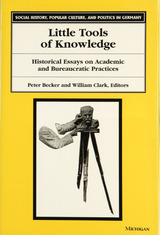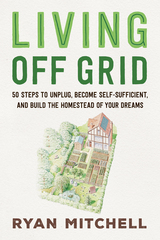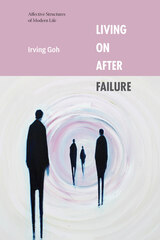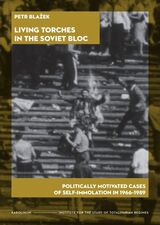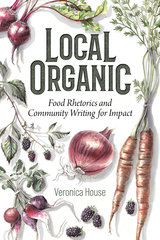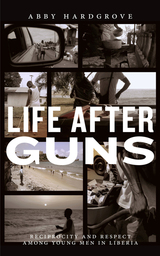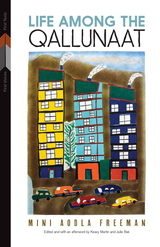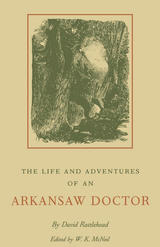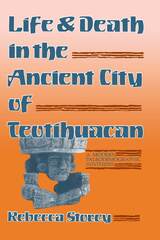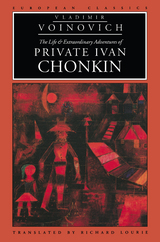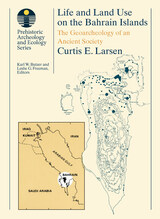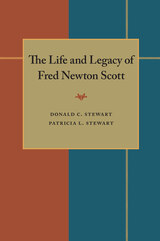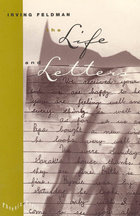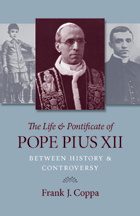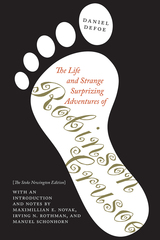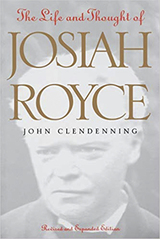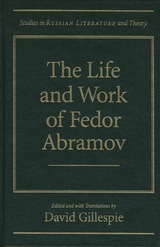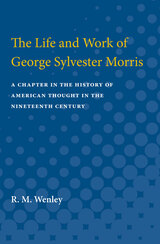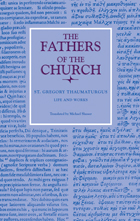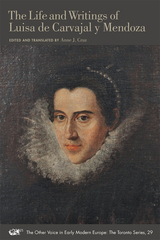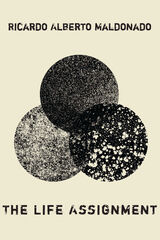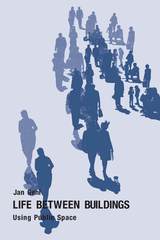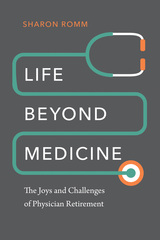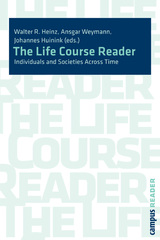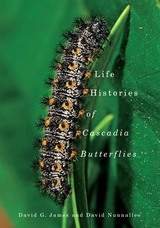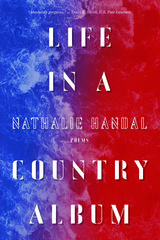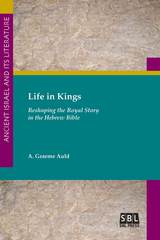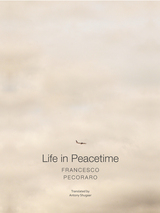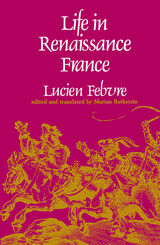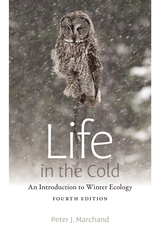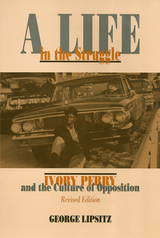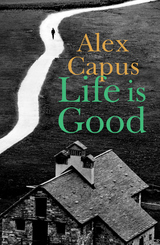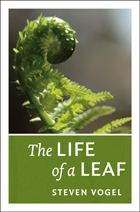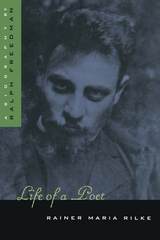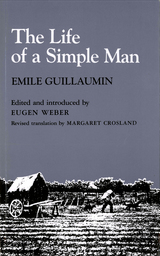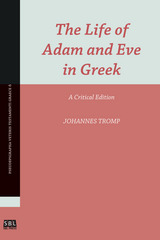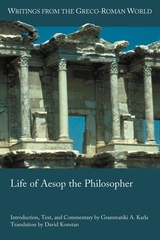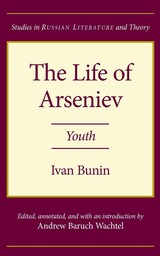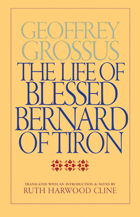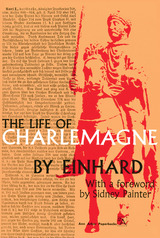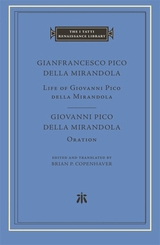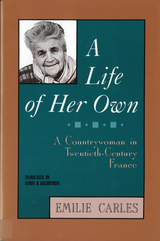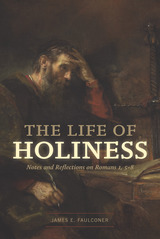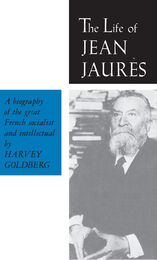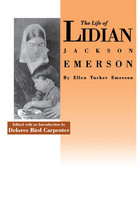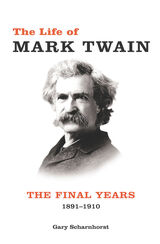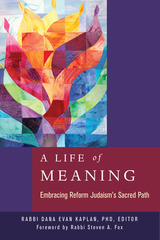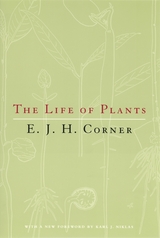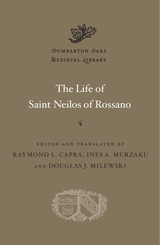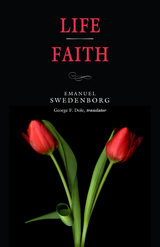 Life / Faith
Emanuel Swedenborg
Swedenborg Foundation Publishers, 2014 Swedenborg originally published the two short works Life and Faith separately, but in the text he makes it clear the two title topics are closely intertwined: one cannot truly understand one apart from the other.
Life refers not to the life force that sustains us but to the way we live our lives. This short piece focuses on the concept of regeneration, or spiritual rebirth, as a process of consciously rejecting our own destructive impulses and internalizing love and goodness. It argues that the choices we make and the reasons we make them have everything to do with our salvation. Swedenborg includes a brief overview of the inner sense of the Ten Commandments as a way to understand the nature of the choice between good and evil.
In Faith, Swedenborg rejects the notion that faith can be a choice to believe things that make no rational sense. Instead, he defines faith as an inner recognition of what is actually true. He explores the complex relationship between faith and knowledge, and emphasizes that true faith can occur only in people who love others and treat them well.
Life / Faith is part of the New Century Edition of the Works of Emanuel Swedenborg (NCE), an ongoing translation series. The NCE series incorporates the latest scholarship and translation standards for a more accurate and accessible rendering of Swedenborg’s works. Traditionally titled The Doctrine of Life and The Doctrine of Faith, these short works are often published together with two others—The Lord and Sacred Scripture—under the title The Four Doctrines. These four titles will be published together in the forthcoming NCE hardcover annotated volume The Shorter Works of 1763.
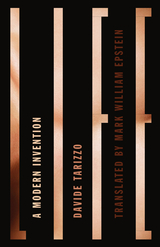 Life: A Modern Invention
Davide Tarizzo
University of Minnesota Press, 2017 The word “biology” was first used to describe the scientific study of life in 1802, and as Davide Tarizzo demonstrates in his reconstruction of the genealogy of the concept of life, our understanding of what being alive means is an equally recent invention. Focusing on the histories of philosophy, science, and biopolitics, he contends that biological life is a metaphysical concept, not a scientific one, and that this notion has gradually permeated both European and Anglophone traditions of thought over the past two centuries. Building on the work undertaken by Foucault in the 1960s and ‘70s, Tarizzo analyzes the slow transformation of eighteenth-century naturalism into a nineteenth-century science of life, exploring the philosophical landscape that engendered biology and precipitated the work of such foundational figures as Georges Cuvier and Charles Darwin. Tarizzo tracks three interrelated themes: first, that the metaphysics of biological life is an extension of the Kantian concept of human will in the field of philosophy; second, that biology and philosophy share the same metaphysical assumptions about life originally advanced by F. W. J. Schelling and adopted by Darwin and his intellectual heirs; and third, that modern biopolitics is dependent on this particularly totalizing view of biological life. Circumventing tired debates about the validity of science and the truth of Darwinian evolution, this book instead envisions and promotes a profound paradigm shift in philosophical and scientific concepts of biological life.
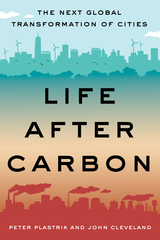 Life After Carbon: The Next Global Transformation of Cities
Peter Plastrik and John Cleveland
Island Press, 2018 The future of our cities is not what it used to be. The modern-city model that took hold globally in the twentieth century has outlived its usefulness. It cannot solve the problems it helped to create—especially global warming. Fortunately, a new model for urban development is emerging in cities to aggressively tackle the realities of climate change. It transforms the way cities design and use physical space, generate economic wealth, consume and dispose of resources, exploit and sustain the natural ecosystems, and prepare for the future.
In Life After Carbon, urban sustainability consultants Pete Plastrik and John Cleveland assemble this global pattern of urban reinvention from the stories of 25 "innovation lab" cities across the globe—from Copenhagen to Melbourne. A city innovation lab is the entire city—the complex, messy, real urban world where innovations must work. It is a city in which government, business, and community leaders take to heart the challenge of climate change and converge on the radical changes that are necessary. They free downtowns from cars, turn buildings into renewable-energy power plants, re-nature entire neighborhoods, incubate growing numbers of clean-energy and smart-tech companies, convert waste to energy, and much more. Plastrik and Cleveland show that four transformational ideas are driving urban climate innovation around the world, in practice, not just in theory: carbon-free advantage, efficient abundance, nature's benefits, and adaptive futures. And these ideas are thriving in markets, professions, consumer trends, community movements, and "higher" levels of government that enable cities.
Life After Carbon presents the new ideas that are replacing the pillars of the modern-city model, converting climate disaster into urban opportunity, and shaping the next transformation of cities worldwide. It will inspire anyone who cares about the future of our cities, and help them to map a sustainable path forward.
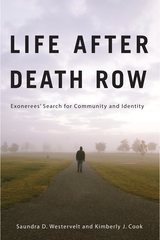 Life after Death Row: Exonerees' Search for Community and Identity
Saundra D. Westervelt and Kimberly J. Cook
Rutgers University Press, 2012 Life after Death Row examines the post-incarceration struggles of individuals who have been wrongly convicted of capital crimes, sentenced to death, and subsequently exonerated.
Saundra D. Westervelt and Kimberly J. Cook present eighteen exonerees’ stories, focusing on three central areas: the invisibility of the innocent after release, the complicity of the justice system in that invisibility, and personal trauma management. Contrary to popular belief, exonerees are not automatically compensated by the state or provided adequate assistance in the transition to post-prison life. With no time and little support, many struggle to find homes, financial security, and community. They have limited or obsolete employment skills and difficulty managing such daily tasks as grocery shopping or banking. They struggle to regain independence, self-sufficiency, and identity. Drawing upon research on trauma, recovery, coping, and stigma, the authors weave a nuanced fabric of grief, loss, resilience, hope, and meaning to provide the richest account to date of the struggles faced by people striving to reclaim their lives after years of wrongful incarceration.
Life after Guns: Reciprocity and Respect among Young Men in Liberia
Hardgrove, Abby
Rutgers University Press, 2017 Life After Guns explores how ex-combatants and other post-war youth negotiated a depleted and difficult social and cultural landscape in the years following Liberia’s fourteen-year bloody civil war. Unlike others who study child soldiers, Abby Hardgrove’s ethnography looks at both former combatants and also the youth who were not recruited to fight. She focuses on the structural constraints and household and family organizations that either helped or limited opportunities as these young men grew into adulthood. Whether young men fought or not, and whether they had cultural capital before the war or not, family relations mattered a great deal in how they fared after the war. Download open access ebook here.
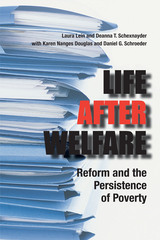 Life After Welfare: Reform and the Persistence of Poverty
By Laura Lein and Deanna T. Schexnayder; with Karen Manges Douglas and Daniel G. Schroeder
University of Texas Press, 2007 A Choice Outstanding Academic Book In the decade since President Clinton signed the Personal Responsibility and Work Opportunity Reconciliation Act of 1996 into law—amidst promises that it would "end welfare as we know it"—did the reforms ending entitlements and moving toward time limits and work requirements lift Texas families once living on welfare out of poverty, or merely strike their names from the administrative rolls? Under welfare reform, Texas continued with low monthly payments and demanding eligibility criteria. Many families who could receive welfare in other states do not qualify in Texas, and virtually any part-time job makes a family ineligible. In Texas, most families who leave welfare remain in or near poverty, and many are likely to return to the welfare rolls in the future. This compelling work, which follows 179 families after leaving welfare, is set against a backdrop of multiple types of data and econometric modeling. The authors' multi-method approach draws on administrative data from nine programs serving low-income families and a statewide survey of families who have left welfare. Survey data on health problems, transportation needs, and child-care issues shed light on the patterns of employment and welfare use seen in the administrative data. In their lives after welfare, the families chronicled here experience poverty even when employed; a multiplicity of barriers to employment that work to exacerbate one another; and a failing safety net of basic human services as they attempt to sustain low-wage employment.
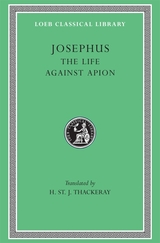 The Life. Against Apion
Josephus
Harvard University Press Greco-Roman antiquity’s premier Jewish historian.
Josephus, soldier, statesman, historian, was a Jew born at Jerusalem about AD 37. A man of high descent, he early became learned in Jewish law and Greek literature and was a Pharisee. After pleading in Rome the cause of some Jewish priests he returned to Jerusalem and in 66 tried to prevent revolt against Rome, managing for the Jews the affairs of Galilee. In the troubles that followed he made his peace with Vespasian. Present at the siege of Jerusalem by Titus, he received favors from these two as emperors and from Domitian, and assumed their family name Flavius. He died after 97.
As a historical source Josephus is invaluable. His major works are: History of the Jewish War, in seven books, from 170 BC to his own time, first written in Aramaic but translated by himself into the Greek we now have; and Jewish Antiquities, in twenty books, from the creation of the world to AD 66. The Loeb Classical Library edition of the works of Josephus, which is in thirteen volumes, also includes the autobiographical Life and his treatise Against Apion.
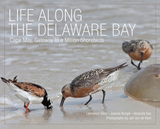 Life Along the Delaware Bay: Cape May, Gateway to a Million Shorebirds
Niles, Lawrence
Rutgers University Press, 2012 The Delaware Bay is the second largest and most diverse bay on the East Coast. It has a rich cultural history, has played an important role in the region’s commerce and tourism, and has spectacular and vital natural resources. Birdwatchers gather along its shores to watch the spectacle of thousands of spawning horseshoe crabs, the dense flocks of migrant shorebirds, the fall hawk migration, and the huge migration of monarch butterflies. Life Along the Delaware Bay focuses on the area as an ecosystem, the horseshoe crab as a keystone species within that system, and the crucial role that the bay plays in the migratory ecology of shorebirds. An abundance of horseshoe crabs spawning on the Delaware Bay beaches results in an abundance of eggs brought to the surface, providing a source of high-quality food and bringing hundreds of thousands of shorebirds to the bay to forage in late May and early June. A dramatic decline in horseshoe crabs has resulted in a rapid and dramatic decline in birds, particularly the red knot. This decline has sounded an alarm throughout the world, prompting a host of biologists to converge on the bay each spring, to understand the biology and conservation of red knots and other shorebirds.
Lawrence Niles, Joanna Burger, and Amanda Dey examine current efforts to protect the bay and identify new efforts that must take place to ensure it remains an intact ecological system. Over three hundred stunning color photographs and maps capture the beauty and majesty of this unique treasure—one that must be protected today and for generations to come.
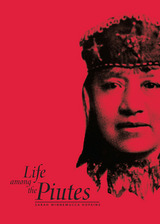 Life Among The Piutes: Their Wrongs And Claims
Sarah Winnemucca Hopkins
University of Nevada Press, 1994 This autobiographical work was written by one of the country's most well-known Native American women, Sarah Winnemucca. She was a Paiute princess and a major figure in the history of Nevada; her tribe still resides primarily in the state. Life Among the Piutes deals with Winnemucca's life and the plight of the Paiute Indians. Life Among the Piutes is Winnemucca's powerful legacy to both white and Paiute cultures. Following the oral tradition of Native American people, she reaches out to readers with a deeply personal appeal for understanding. She also records historical events from a unique perspective. She managed to record the Native American viewpoint of whites settling the West, told in a language that was not her own and by a woman during the time when even white women were not allowed to vote. Sarah Winnemucca dedicated her life to improving the living and social conditions for her people. She gave more than 400 speeches across the United States and Europe to gain support for the Paiutes. She died of tuberculosis in 1891. Life Among the Piutes was originally published in 1883.
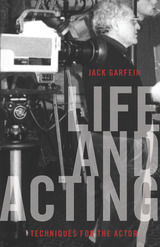 Life and Acting: Techniques for the Actor
Jack Garfein
Northwestern University Press, 2010 Arriving in America as a teenage Holocaust refugee, Jack Garfein would soon rise to the top of his field. Life and Acting is the product of more than sixty years in the world of theater and film, offering the kind of insight only gained by experience as both a teacher and practitioner. In Garfein’s case, his experience is unparalleled—he has worked with a who’s who of twentieth-century acting, especially those associated with the Actors Studio, the West Coast arm of which Garfein cofounded. In Life and Acting, Garfein distills his experience into a holistic technique for learning and teaching. “The Beginning” functions as a kind of memoir, focusing on Garfein’s own education in the theater. “The Art” describes how Garfein’s exposure to nontheater artists, particularly painters and writers, has contributed to his understanding of acting. “Basic Training” offers thirty-seven detailed lessons for teaching acting. In “Training for Film,” Garfein applies his principles to acting in front of a camera. Like Uta Hagen’s Respect for Acting and other classics of this genre, Life and Acting will be an invaluable resource for teachers as well as students.
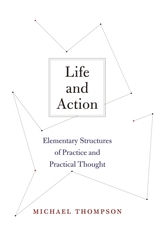 Life and Action: Elementary Structures of Practice and Practical Thought
Michael Thompson
Harvard University Press, 2012 Any sound practical philosophy must be clear on practical concepts—concepts, in particular, of life, action, and practice. This clarity is Michael Thompson’s aim in his ambitious work. In Thompson’s view, failure to comprehend the structures of thought and judgment expressed in these concepts has disfigured modern moral philosophy, rendering it incapable of addressing the larger questions that should be its focus.
In three investigations, Thompson considers life, action, and practice successively, attempting to exhibit these interrelated concepts as pure categories of thought, and to show how a proper exposition of them must be Aristotelian in character. He contends that the pure character of these categories, and the Aristotelian forms of reflection necessary to grasp them, are systematically obscured by modern theoretical philosophy, which thus blocks the way to the renewal of practical philosophy. His work recovers the possibility, within the tradition of analytic philosophy, of hazarding powerful generalities, and of focusing on the larger issues—like “life”—that have the power to revive philosophy.
As an attempt to relocate crucial concepts from moral philosophy and the theory of action into what might be called the metaphysics of life, this original work promises to reconfigure a whole sector of philosophy. It is a work that any student of contemporary philosophy must grapple with.
The Life and Adventures of an Arkansaw Doctor
David Rattlehead
University of Arkansas Press, 1989 First published in 1851, this is the fictionalized account of Dr. Marcus Byrn's brief practice in eastern Arkansas and the earliest volume solely devoted to Arkansas humor.
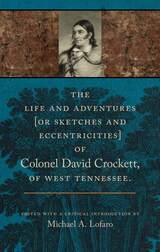 The Life and Adventures of Colonel David Crockett of West Tennessee
Michael A. Lofaro
University of Tennessee Press, 2020 The legendary Davy Crockett arose simultaneously with the emergence of the historical Crockett as a public figure, and once established, the man and the myth were forevermore entangled. The present work, his Life and Adventures (1833), ushered in a series of biographical and autobiographical books that thrust Crockett fully onto the national and international scene. This work, quickly retitled Sketches and Eccentricities, was the most outlandish. Its purported author, J. S. French, mixed two nineteenth-century genres of storytelling—the Humor of the Old Southwest and the sketch—all presented within a historical framework to create an early version of the King of the Wild Frontier. The Crockett encountered here is the marksman who can shoot an elk from 140 yards with his beloved rifle, Betsy, grin the bark off a tree knot, and choose bows and arrows as weapons when challenged to a duel by a fellow congressman. Within a year, Crockett disavowed this book, preferring his autobiography—Narrative of the Life of David Crockett, of the State of Tennessee—but this rollicking story, often bouncing along from tall tale, hunting anecdote, faux moral tale, to humorous pratfall, became a major source for the later biographical writings and a later cultural industry that swept up newspapers, books, political propaganda, plays, and films—and almost every way in which a frontier figure could appear in popular culture. And, while Crockett’s image was a source of entertainment and humor, it also pointed toward something far more serious: after his death at the Alamo it presented Americans with a fictional Frontier hero who progressively embodied their views on topics as varied as manliness, manifest destiny, and even white supremacy. However, the Crockett of Sketches—canny, adaptable, intelligent but not educated, hilarious—was above all a perfect reflection of the aspirations, interests, and beliefs of Jacksonian-era Americans
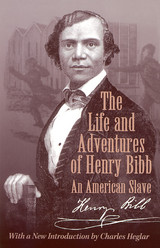 The Life and Adventures of Henry Bibb: An American Slave
Henry Bibb
University of Wisconsin Press, 2001 First published in 1849 and largely unavailable for many years, The Life and Adventures of Henry Bibb is among the most remarkable slave narratives. Born on a Kentucky plantation in 1815, Bibb first attempted to escape from bondage at the age of ten. He was recaptured and escaped several more times before he eventually settled in Detroit, Michigan, and joined the antislavery movement as a lecturer.
Bibb’s story is different in many ways from the widely read Narrative of the Life of Frederick Douglass, An American Slave and Harriet Jacobs’ Incidents in the Life of a Slave Girl. He was owned by a Native American; he is one of the few ex-slave autobiographers who had labored in the Deep South (Louisiana); and he writes about folkways of the slaves, especially how he used conjure to avoid punishment and to win the hearts of women. Most significant, he is unique in exploring the importance of marriage and family to him, recounting his several trips to free his wife and child. This new edition includes an introduction by literary scholar Charles Heglar and a selection of letters and editorials by Bibb.
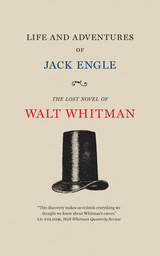 Life and Adventures of Jack Engle: An Auto-Biography; A Story of New York at the Present Time in which the Reader Will Find Some Familiar Characters
Walt Whitman
University of Iowa Press, 2017 In 1852, young Walt Whitman—a down-on-his-luck housebuilder in Brooklyn—was hard at work writing two books. One would become one of the most famous volumes of poetry in American history, a free-verse revelation beloved the world over, Leaves of Grass. The other, a novel, would be published under a pseudonym and serialized in a newspaper. A short, rollicking story of orphanhood, avarice, and adventure in New York City, Life and Adventures of Jack Engle appeared to little fanfare.
Then it disappeared.
No one laid eyes on it until 2016, when literary scholar Zachary Turpin, University of Houston, followed a paper trail deep into the Library of Congress, where the sole surviving copy of Jack Engle has lain waiting for generations. Now, after more than 160 years, the University of Iowa Press is honored to reprint this lost work, restoring a missing piece of American literature by one of the world’s greatest authors, written as he verged on immortality.
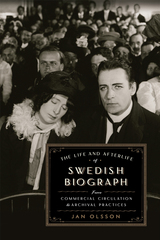 The Life and Afterlife of Swedish Biograph: From Commercial Circulation to Archival Practices
Jan Olsson
University of Wisconsin Press, 2022 Sweden’s early film industry was dominated by Swedish Biograph (Svenska Biografteatern), home to star directors like Victor Sjöström and Mauritz Stiller. It is nostalgically remembered as the generative site of a nascent national artform, encapsulating a quintessentially Nordic aesthetic—the epicenter of Sweden’s cinematic Golden Age. In The Life and Afterlife of Swedish Biograph, veteran film scholar Jan Olsson takes a hard look at this established, romanticized narrative and offers a far more complete, complex, and nuanced story.
Nearly all of the studio’s original negatives were destroyed in an explosion in 1941, but Olsson’s comprehensive archival research shows how the company operated in a commercial, international arena, and how it was influenced not just by Nordic aesthetics or individual genius but also by foreign audiences’ expectations, technological demands, Hollywood innovations, and the gritty back-and-forth between economic pressures, government interference, and artistic desires. Olsson’s focus is wide, encompassing the studio’s production practices, business affairs, and cinematographic conventions, as well as the latter-day archival efforts that both preserved and obscured parts of Swedish Biograph’s story, helping construct the company’s rosy legacy. The result is a necessary rewrite to Swedish film historiography and a far fuller picture of a canonical film studio.
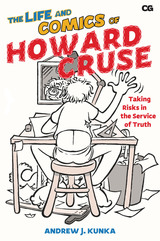 The Life and Comics of Howard Cruse: Taking Risks in the Service of Truth
Andrew J. Kunka
Rutgers University Press, 2022 Nominated for the 2022 Eisner Award - Best Academic/Scholarly Work
The Life and Comics of Howard Cruse tells the remarkable story of how a self-described “preacher’s kid” from Birmingham, Alabama, became the so-called “Godfather of Gay Comics.” This study showcases a remarkable fifty-year career that included working in the 1970s underground comics scene, becoming founding editor of the groundbreaking anthology series Gay Comix, and publishing the graphic novel Stuck Rubber Baby, partially based on his own experience of coming of age in the Civil Rights era.
Through his exploration of Cruse’s life and work, Andrew J. Kunka also chronicles the dramatic ways that gay culture changed over the course of Cruse’s lifetime, from Cold War-era homophobia to the gay liberation movement to the AIDS crisis to the legalization of gay marriage. Highlighting Cruse’s skills as a trenchant satirist and social commentator, Kunka explores how he cast a queer look at American politics, mainstream comics culture, and the gay community’s own norms.
Lavishly illustrated with a broad selection of comics from Cruse’s career, this study serves as a perfect introduction to this pioneering cartoonist, as well as an insightful read for fans who already love how his work sketched a new vision of gay life.
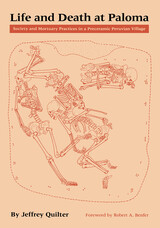 Life And Death At Paloma: Practices In Peruvian Village
Jeffrey Quilter
University of Iowa Press, 1989 Gold, pomp, and circumstances surrounded the mummies of Inca emperors, but the elaborate funerary rites at the end of prehistory were only part of a tradition that began thousands of years earlier. Life and Death at Paloma, the first in-depth treatment of burials from a preagricultural South American village, analyzes the life of its people during a revolutionary time in prehistory: the transition from a hunting-gathering-fishing way of life to a more sedentary horticultural society. Drawing upon the data that he collected as part of the University of Missouri's excavations at Paloma, Jeffrey Quilter gives us the first study of preceramic Peruvian life through his analysis of this site's graves and contents. His extensively illustrated book is also the first attempt to infer social organization from such data for this period—circa 5000 to 2500 B.C.—in Peru. In addition, he presents the only available summary and discussion of the known preceramic interments from western South America. Coastal Peru is one of the few New World regions where the early development of complex societies can be studied. Life and Death at Paloma will greatly assist such research by specialists in mortuary studies, in Andean prehistory, and in hunter-gatherer societies.
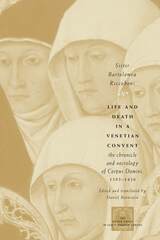 Life and Death in a Venetian Convent: The Chronicle and Necrology of Corpus Domini, 1395-1436
Sister Bartolomea Riccoboni
University of Chicago Press, 2000 These works by Sister Bartolomea Riccoboni offer an intimate portrait of the women who inhabited the Venetian convent of Corpus Domini, where they shared a religious life bounded physically by the convent wall and organized temporally by the rhythms of work and worship. At the same time, they show how this cloistered community vibrated with news of the great ecclesiastical events of the day, such as the Great Western Schism and the Council of Constance.
While the chronicle recounts the history of the nuns' collective life, the necrology provides highly individualized biographies of nearly fifty women who died in the convent between 1395 and 1436. We follow the fascinating stories that led these women, from adolescent girls to elderly widows, to join the convent; and we learn of their cultural backgrounds and intellectual accomplishments, their ascetic practices and mystical visions, their charity and devotion to each other and their fortitude in the face of illness and death.
The personal and social meaning of religious devotion comes alive in these texts, the first of their kind to be translated into English.
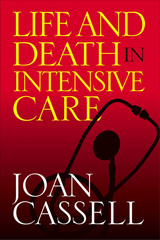 Life And Death In Intensive Care
Joan Cassell
Temple University Press, 2005 Life and Death in Intensive Care offers a unique portrait of the surgical intensive care unit (SICU), the place in medical centers and hospitals where patients with the gravest medical conditions—from comas to terminal illness—are treated. Author Joan Cassell employs the concept of "moral economies" to explain the dilemmas that patients, families, and medical staff confront in treatment. Drawing upon her fieldwork conducted in both the United States and New Zealand, Cassell compares the moral outlooks and underlying principles of SICU nurses, residents, intensivists, and surgeons. Using real life examples, Life and Death in Intensive Care clearly presents the logic and values behind the SICU as well as the personalities, procedures, and pressures that characterize every case. Ultimately, Cassell demonstrates the differing systems of values, and the way cultural definitions of medical treatment inform how we treat the critically ill.
Life and Death in the Ancient City of Teotihuacan: A Modern Paleodemographic Synthesis
Rebecca Storey
University of Alabama Press, 1992 Cities arose independently in both the Old World and in the pre-Columbian New World. Lacking written records, many of these New World cities can be studied only through archaeology, including the earliest pre-Columbian city, Teotihuacan, Mexico, one of the largest cities of its time (150 B.C. to A.D. 750). Thus, an important question is how similar New World cities are to their Old World counterparts.
Before recent times, the dense populations of cities made them unhealthy places because of poor sanitation and inadequate food supplies. Storey's research shows clearly that although Teotihuacan was a very different environment and culture from 17th-century London, these two great cities are comparable in terms of health problems and similar death rates.
 Life and Death in the Third Reich
Peter Fritzsche
Harvard University Press, 2008 On January 30, 1933, hearing about the celebrations for Hitler’s assumption of power, Erich Ebermayer remarked bitterly in his diary, “We are the losers, definitely the losers.” Learning of the Nuremberg Laws in 1935, which made Jews non-citizens, he raged, “hate is sown a million-fold.” Yet in March 1938, he wept for joy at the Anschluss with Austria: “Not to want it just because it has been achieved by Hitler would be folly.”
In a masterful work, Peter Fritzsche deciphers the puzzle of Nazism’s ideological grip. Its basic appeal lay in the Volksgemeinschaft—a “people’s community” that appealed to Germans to be part of a great project to redress the wrongs of the Versailles treaty, make the country strong and vital, and rid the body politic of unhealthy elements. The goal was to create a new national and racial self-consciousness among Germans. For Germany to live, others—especially Jews—had to die. Diaries and letters reveal Germans’ fears, desires, and reservations, while showing how Nazi concepts saturated everyday life. Fritzsche examines the efforts of Germans to adjust to new racial identities, to believe in the necessity of war, to accept the dynamic of unconditional destruction—in short, to become Nazis.
Powerful and provocative, Life and Death in the Third Reich is a chilling portrait of how ideology takes hold.
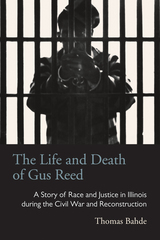 The Life and Death of Gus Reed: A Story of Race and Justice in Illinois during the Civil War and Reconstruction
Thomas Bahde
Ohio University Press, 2014 Gus Reed was a freed slave who traveled north as Sherman’s March was sweeping through Georgia in 1864. His journey ended in Springfield, Illinois, a city undergoing fundamental changes as its white citizens struggled to understand the political, legal, and cultural consequences of emancipation and black citizenship. Reed became known as a petty thief, appearing time and again in the records of the state’s courts and prisons. In late 1877, he burglarized the home of a well-known Springfield attorney—and brother of Abraham Lincoln’s former law partner—a crime for which he was convicted and sentenced to the Illinois State Penitentiary. Reed died at the penitentiary in 1878, shackled to the door of his cell for days with a gag strapped in his mouth. An investigation established that two guards were responsible for the prisoner’s death, but neither they nor the prison warden suffered any penalty. The guards were dismissed, the investigation was closed, and Reed was forgotten. Gus Reed’s story connects the political and legal cultures of white supremacy, black migration and black communities, the Midwest’s experience with the Civil War and Reconstruction, and the resurgence of nationwide opposition to African American civil rights in the late nineteenth century. These experiences shaped a nation with deep and unresolved misgivings about race, as well as distinctive and conflicting ideas about justice and how to achieve it.
 The Life and Death of Texas German
Hans C. Boas
Duke University Press A Publication of the American Dialect Society This volume presents the first major study of Texas German as spoken in the twenty-first century, focusing on its formation and the linguistic changes it has undergone. This New World dialect, formed more than 150 years ago in German communities in central Texas, is an unusual example of a formerly high-status dialect that declined for sociopolitical reasons. An important case study for dialect research, Texas German is now critically endangered and will probably be extinct by 2050. By comparing and contrasting present-day data with data from the German dialects brought to Texas since the 1840s, the volume offers an in-depth analysis of mutual interaction between the German-speaking community and English-speaking Texans, long-term accommodation of Texas German speakers in this new community, and language hybridization on the Texas frontier. The volume also analyzes a number of phonological, syntactic, and morphological changes in Texas German over the past century and examines sociolinguistic aspects of the Texas German community from its foundation to today, providing insight into the dynamics underlying new-dialect formation, diglossia, language shift, language maintenance, and language death. Finally, the volume investigates the rapid disappearance of languages, which has global social and cultural implications for areas beyond linguistics.
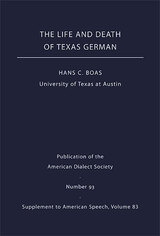 The Life and Death of Texas German
Eileen Boris, ed.
Duke University Press This volume presents the first major study of Texas German as spoken in the twenty-first century, focusing on its formation and the linguistic changes it has undergone. This New World dialect, formed more than 150 years ago in German communities in central Texas, is an unusual example of a formerly high-status dialect that declined for sociopolitical reasons. An important case study for dialect research, Texas German is now critically endangered and will probably be extinct by 2050. By comparing and contrasting present-day data with data from the German dialects brought to Texas since the 1840s, the volume offers an in-depth analysis of mutual interaction between the German-speaking community and English-speaking Texans, long-term accommodation of Texas German speakers in this new community, and language hybridization on the Texas frontier. The volume also analyzes a number of phonological, syntactic, and morphological changes in Texas German over the past century and examines sociolinguistic aspects of the Texas German community from its foundation to today, providing insight into the dynamics underlying new-dialect formation, diglossia, language shift, language maintenance, and language death. Finally, the volume investigates the rapid disappearance of languages, which has global social and cultural implications for areas beyond linguistics.
The Life and Death of Theodore of Stoudios
Robert H. Jordan
Harvard University Press, 2021 Theodore (759–826), abbot of the influential Constantinopolitan monastery of Stoudios, is celebrated as a saint by the Orthodox Church for his stalwart defense of icon veneration. Three important texts promoting the monastery and the memory of its founder are collected in The Life and Death of Theodore of Stoudios.
In the Life of Theodore, Michael the Monk describes a golden age at Stoudios, as well as Theodore’s often antagonistic encounters with imperial rulers. The Encyclical Letter of Naukratios, written in 826 by his successor, informed the scattered monks of their leader’s death. Translation and Burial contains brief biographies of Theodore and his brother, along with an eyewitness account of their reburial at Stoudios.
These works, translated into English for the first time, appear here alongside new editions of the Byzantine Greek texts.
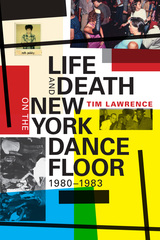 Life and Death on the New York Dance Floor, 1980–1983
Tim Lawrence
Duke University Press, 2016 As the 1970s gave way to the 80s, New York's party scene entered a ferociously inventive period characterized by its creativity, intensity, and hybridity. Life and Death on the New York Dance Floor chronicles this tumultuous time, charting the sonic and social eruptions that took place in the city’s subterranean party venues as well as the way they cultivated breakthrough movements in art, performance, video, and film. Interviewing DJs, party hosts, producers, musicians, artists, and dancers, Tim Lawrence illustrates how the relatively discrete post-disco, post-punk, and hip hop scenes became marked by their level of plurality, interaction, and convergence. He also explains how the shifting urban landscape of New York supported the cultural renaissance before gentrification, Reaganomics, corporate intrusion, and the spread of AIDS brought this gritty and protean time and place in American culture to a troubled denouement.
Life and Early Travels
Cyriac of Ancona
Harvard University Press, 2015 Cyriac of Ancona (1391–1452) was among the first to study the physical remains of the ancient world in person and for that reason is sometimes regarded as the father of classical archaeology. This volume contains a life of Cyriac to the year 1435 by his friend Francesco Scalamonti, which relies on Cyriac’s own records, along with several letters to and from Cyriac, and other texts illustrating his early life. These include Cyriac’s letter-treatise in praise of Julius Caesar, countering the attacks on the founder of the Roman Empire made by Renaissance republicans. A number of the texts included have been freshly edited and translated for the first time in this volume.
The Life and Extraordinary Adventures of Private Ivan Chonkin
Vladimir Voinovich
Northwestern University Press, 1995 Ivan Chonkin is a simple, bumbling peasant who has been drafted into the Red Army. Shortly before the outbreak of World War II, he is sent to an obscure village with one week's ration of canned meat and orders to guard a downed plane. Apparently forgotten by his unit, Chonkin resumes his life as a peasant and passes the war tending the village postmistress's garden. Just after the German invasion, the secret police discover this mysterious soldier lurking behind the front line. Their pursuit of Chonkin and his determined resistance lead to wild skirmishes and slapstick encounters.
Life and Faith: Psychological Perspectives on Religious Experience
W. W. Meissner, SJ, MD
Georgetown University Press In this comprehensive study of psychology, theology, and religious experience the author asserts that psychology and religion can faithfully complement one another, even when the psychology in question is primarily grounded in Freudian analysis.
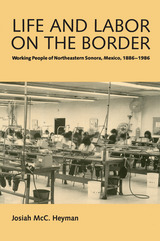 Life and Labor on the Border: Working People of Northeastern Sonora, Mexico, 1886–1986
Josiah McC. Heyman
University of Arizona Press, 1991 For thousands of Mexican laborers, life among the United States border represents an opportunity both to earn wages and to gain access to consumer goods; for anthropologist Josiah Heyman this labor force presents an opportunity to gain a better understanding of working people, "to uncover the order underlying the history of waged lives."
Life and Labor on the Border traces the development of the urban working class in northern Sonora over the period of a century. Drawing on an extensive collection of life histories, Heyman describes what has happened to families over several generations as people have left the countryside to work for American-owned companies in northern Sonora or to cross the border to find other employment.
Heyman searches for the origins of "working classness" in these family histories, revealing aspects of life that strengthen people' s involvement with a consumer economy, including the role of everyday objects like sewing machines, cars, and stoves. He considers the consequences of changing political and economic tides, and also the effects on family life of the new role of women in the labor force. Within the broad sweep of family chronicles, key junctures in individual lives—both personal and historical crises—offer additional insights into social class dynamics.
Heyman's work dispels the notion that border inhabitants are uniformly impoverished or corrupted by proximity to the United States. These life stories instead convey the positive sense of people's goals in life and reveal the origins of a distinctive way of life in the Borderlands.
Life and Land Use on the Bahrain Islands: The Geoarchaeology of an Ancient Society
Curtis E. Larsen
University of Chicago Press, 1983 According to archeological and historical records, the Bahrain Islands of the Arabian Gulf were the home of a flourishing civilization four thousant years ago. Then, as now, these islands served as an important locus of maritime trade, but they were also characterized as a land of copious artesian springs and fertile fields. Modern Bahrain, in contrast, is beset by environmental and demographic problems: the depletion of the artesian water supply, abandonment of rural agricultural lands, and rapid population growth. In this exemplary interdisciplinary study, Curtis E. Larsen combines archeological, geological, historical, and anthropological methods to reconstruct the paleoenvironmental and socioeconomic context that links Bahrain's present to its past.
The Life and Legacy of Fred Newton Scott
Donald C. Stewart
University of Pittsburgh Press, 1997 By the end of the nineteenth century, rhetoric had not yet been established as a legitimate discipline. Fred Newton Scott (1860-1931) spent his life broadening the scope of rhetoric studies through his imaginative, interdisciplinary research. Scott was both a pragmatic reformer and a visionary scholar who used empirical methods and cognitive psychology to expand this field. In this study, Donald Stewart and his wife Patricia examine Scott's essays, speeches, and books to write the first comprehensive biography of the man who became one of the most influential figures in language studies during the early twentieth century.
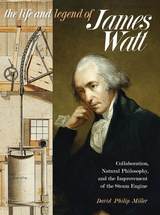 The Life and Legend of James Watt: Collaboration, Natural Philosophy, and the Improvement of the Steam Engine
Donald Miller
University of Pittsburgh Press, 2019
The Life and Legend of James Wattoffers a deeper understanding of the work and character of the great eighteenth-century engineer. Stripping away layers of legend built over generations, David Philip Miller finds behind the heroic engineer a conflicted man often diffident about his achievements but also ruthless in protecting his inventions and ideas, and determined in pursuit of money and fame. A skilled and creative engineer, Watt was also a compulsive experimentalist drawn to natural philosophical inquiry, and a chemistry of heat underlay much of his work, including his steam engineering. But Watt pursued the business of natural philosophy in a way characteristic of his roots in the Scottish “improving” tradition that was in tension with Enlightenment sensibilities. As Miller demonstrates, Watt’s accomplishments relied heavily on collaborations, not always acknowledged, with business partners, employees, philosophical friends, and, not least, his wives, children, and wider family. The legend created in his later years and “afterlife” claimed too much of nineteenth-century technology for Watt, but that legend was, and remains, a powerful cultural force.
The Life and Letters
Irving Feldman
University of Chicago Press, 1994 In poems whose subjects range from theme parks to late-night radio, the aftermath of the Holocaust to television, The Life and Letters represents a celebrated poet-scholar at the height of his art.
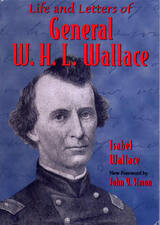 Life and Letters of General W. H. L. Wallace
Isabel Wallace. Foreword by John Y. Simon
Southern Illinois University Press, 2000 Originally published in 1909, this biography by Isabel Wallace recounts the life of her adoptive father, the little-recognized William Hervy Lamme Wallace, the highest-ranking Union officer to fall at the battle of Shiloh. Born in 1821 in Ohio, Wallace and his family moved to Illinois in 1834, where he was educated at Rock Springs Seminary in Mount Morris. On his way to study law with Abraham Lincoln in Springfield in 1844, Wallace was persuaded by local attorney T. Lyle Dickey, a close friend of Lincoln, to join his practice in Ottawa instead. Wallace eventually married Dickey’s daughter, Martha Ann, in 1851. When the Civil War broke out, both Wallace and Dickey immediately volunteered for service with the Eleventh Illinois, which assembled in Springfield. Wallace was elected as the unit’s colonel; a successful lawyer, a friend of President Lincoln, a generation older than most privates, and an officer with Mexican War experience, he was entirely suited for such command. Wallace was appointed brigadier general for his performance at Fort Donelson, the first notable Union victory in the Civil War. Wallace’s troops had saved the day, although the Eleventh Illinois had lost nearly two-thirds of its men. He then moved with his troops to Pittsburg Landing, Tennessee, where Confederates launched a surprise attack on the forces of Major General Ulysses S. Grant at Shiloh Church on Sunday, April 6, 1862. Wallace, who held only temporary command of one of Grant’s six divisions, fought bravely but was mortally wounded as he began to withdraw his men on the afternoon of the battle. His wife, who had arrived at Pittsburg Landing by steamer on the day of the battle, was at his side when he died three days later. Grant praised Wallace in 1868 as “the equal of the best, if not the very best, of the Volunteer Generals with me at the date of his death.” Isabel Wallace traces her father’s life from his upbringing in Ottawa through his education, his service in the Mexican War, his law practice, his courtship of and marriage to her mother, and his service in the Eleventh Illinois until his mortal injury at Shiloh. She also details his funeral and her and her mother’s life in the postwar years. Based on the copious letters and family papers of the general and his wife, the biography also provides historical information on federal politics of the period, including commentary on Lincoln’s campaign and election and on state politics, especially regarding T. Lyle Dickey, Wallace’s father-in-law and law partner, prominent Illinois politician, and associate of Lincoln. It is illustrated with fifteen black-and-white halftones.
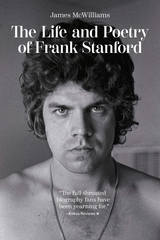 The Life and Poetry of Frank Stanford
James McWilliams
University of Arkansas Press, 2025 "The full-throated biography fans have been yearning for.”
—Kirkus Starred Review, April 2025
"McWilliams does a remarkable job connecting Stanford’s poetry with his personal life, particularly his lifelong friendship with Irv Broughton, owner of a small press and Stanford’s first publisher; his penchant for love triangles; and how his need for connection fueled his poetry. The end of Stanford’s life, which saw him cohabiting with two women in different towns and running an independent press before his death by suicide at age 29, is rendered here in spellbinding detail. It’s a page-turner."
—Publishers Weekly Starred Review, July 2025
When twenty-nine-year-old Frank Stanford put three bullets in his chest on June 3, 1978, he ended a life that had been inextricably linked with poetry since childhood. Deeply influential but largely unknown outside his corner of the poetry world, this prodigy of the American South inspired a cult following that has kept his reputation and work flickering on the periphery of the American literary tradition ever since.
The Life and Poetry of Frank Stanford offers for the first time a comprehensive study of Stanford’s life and work, introducing to a broad readership poetry that remains both captivating to poets and, in its celebration of everyday experience over academic erudition, accessible to those who rarely read poetry.
Stanford’s poems range from one line to his 15,283-line epic, The Battlefield Where the Moon Says I Love You. The vital thread running through all of his poetry is an ear for language that vies with Walt Whitman in its expansiveness and generosity. Stanford’s omnivorous attraction to vernacular, particularly Black and rural vernacular, centered on an admiration for the marginalized and eccentric. Blending the Southern Gothic of Faulkner and O’Connor with a racially egalitarian vision, his poetry thrives on the stories and traditions of the oppressed and forgotten.
The themes that preoccupied Stanford’s prolific output—language, sex, death, class, geography, commercialism, surrealism, film, race—also preoccupied the poet in his daily life, which was marked by heavy drinking, philandering, mental instability, emotional abuse, and, through it all, an inveterate desire for beauty. Constantly attentive to this tension, biographer James McWilliams traces the short and painfully complicated life of this hidden talent who left a lifetime’s worth of poetry that, through its grounding in the mundane, achieved a vision of the transcendent.
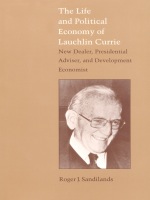 The Life and Political Economy of Lauchlin Currie: New Dealer, Presidential Advisor, and Development Economist
Roger J. Sandilands
Duke University Press, 1990 Lauchlin Currie’s contribution to monetary theory and policies during the New Deal and in the postwar period when he became one of the most important economic advisors to several presidents of Colombia is the subject of this biography. Currie was a major economic advisor to president Franklin D. Roosevelt, and as his administrative assistant from 1939 until the president’s death in 1945 helped shape Roosevelt’s thinking on economic issues.
His involvement in U.S. policymaking in China, where he directed Lend-Lease operations from 1941-1943, was one of the factors leading to his confrontation with Senator Joseph McCarthy. In 1949 he directed the first World Bank mission to Colombia.
Roger Sandilands had access to Currie’s own papers and to previously unpublished material. In this biography he provides the reader with a critical evaluation of Currie’s contribution to the literature on the theory and practice of economic development in general, together with an analysis of how his concepts were shaped during the New Deal and in post-World War II Colombia.
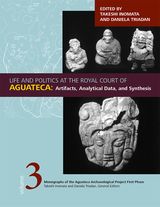 Life and Politics at the Royal Court of Aguateca: Artifacts, Analytical Data, and Synthesis
Takeshi Inomata
University of Utah Press, 2014 Aguateca is a Classic Mayan site located in the Petexbatun region of Guatemala. In this volume, Takeshi Inomata, Daniela Triadan, and their team examine the life of the Mayan royal family, nobles, and their retainers through the analysis of numerous complete and reconstructible artifacts left in this site’s elite residential area. Aguateca was unexpectedly attacked around AD 810, its central part was burned and its residents fled or were taken captive.
Because of the surprise nature of the attack, most artifacts were left in their original locations, providing unprecedented views of the daily life of the Classic Maya. Detailed analyses of these objects and their distribution has shown that Mayan elites stored some of their food in their residences and that they also conducted various administrative duties there. The presence of numerous precious ornaments indicates that many of the Maya elite were also skilled craft producers.
Life and Politics at the Royal Court of Aguateca is the third and final volume of the monograph series on Aguateca. It presents the analyses of items not covered in the first two volumes, including figurines, ceramic laminates and masks, spindle whorls, ground stone, and bone artifacts, as well as hieroglyphic texts and plant and animal remains. It discusses the broad implications of this remarkable data set and provides a summation of the project.
The Life and Pontificate of Pope Pius Xii
Frank Coppa
Catholic University of America Press, 2013 Written by one of the foremost historians of Pius XII, the present biographical study, unlike the greater part of the vast and growing historiography of Pope Pius XII, is a balanced and nonreactive account of his life and times. Its focus is not on the popes silence during the Holocaust, though it does address the issue in a historical and objective framework. This is a biography of the man as well as the pope. It probes the roots of his traditionalism and legalism, his approach to modernity and reformism in Church and society, and the influences behind his policies and actions.
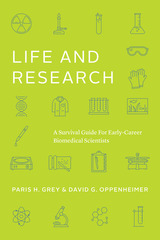 Life and Research: A Survival Guide for Early-Career Biomedical Scientists
Paris H. Grey and David G. Oppenheimer
University of Chicago Press, 2022 Life in a research lab can be daunting, especially for early-career scientists. Personal and professional hurdles abound in bench research, and this book by two seasoned lab professionals is here to help graduate students, postdocs, and staff scientists recognize stumbling blocks and avoid common pitfalls.
Building and maintaining a mentoring network, practicing self-care and having a life outside of the lab, understanding that what works perfectly for a labmate might not work for you—these are just a few of the strategies that lab manager and molecular biologist Paris H. Grey and PI and geneticist David G. Oppenheimer wished they had implemented far sooner in their careers. They also offer practical advice on managing research projects, sharing your work on social media, and attending conferences. Above all, they coach early-career scientists to avoid burnout and make the most of every lab experience to grow and learn.
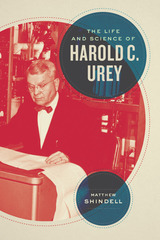 The Life and Science of Harold C. Urey
Matthew Shindell
University of Chicago Press, 2019 Harold C. Urey (1893–1981), whose discoveries lie at the foundation of modern science, was one of the most famous American scientists of the twentieth century. Born in rural Indiana, his evolution from small-town farm boy to scientific celebrity made him a symbol and spokesman for American scientific authority. Because he rose to fame alongside the prestige of American science, the story of his life reflects broader changes in the social and intellectual landscape of twentieth-century America. In this, the first ever biography of the chemist, Matthew Shindell shines new light on Urey’s struggles and achievements in a thoughtful exploration of the science, politics, and society of the Cold War era.
From Urey’s orthodox religious upbringing to his death in 1981, Shindell follows the scientist through nearly a century of American history: his discovery of deuterium and heavy water earned him the Nobel Prize in 1934, his work on the Manhattan Project helped usher in the atomic age, he initiated a generation of American scientists into the world of quantum physics and chemistry, and he took on the origin of the Moon in NASA’s lunar exploration program. Despite his success, however, Urey had difficulty navigating the nuclear age. In later years he lived in the shadow of the bomb he helped create, plagued by the uncertainties unleashed by the rise of American science and unable to reconcile the consequences of scientific progress with the morality of religion.
Tracing Urey’s life through two world wars and the Cold War not only conveys the complex historical relationship between science and religion in the twentieth century, but it also illustrates how these complexities spilled over into the early days of space science. More than a life story, this book immerses readers in the trials and triumphs of an extraordinary man and his extraordinary times.
The Life and Strange Surprizing Adventures of Robinson Crusoe: The Stoke Newington Edition
Daniel Defoe
Bucknell University Press, 2019 Robinson Crusoe, an adventure tale that fascinated such thinkers as Jean-Jacques Rousseau, Karl Marx, Virginia Woolf, and J. M. Coetzee, has been an international best-seller for three hundred years. An adventure tale involving cannibals, pirates, and shipwrecks, it embodies economic, social, political, and philosophical themes that continue to be relevant today. Moreover, the notion of isolation on a deserted island and a fascination with survival continue to be central to countless popular cinema and television programs. This edition of the novel with its introduction, line notes, and full bibliographical notes provides a uniquely scholarly presentation of the novel. There has been no other edition like it.
Published by Bucknell University Press. Distributed worldwide by Rutgers University Press.
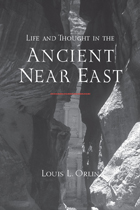 Life and Thought in the Ancient Near East
Louis L. Orlin
University of Michigan Press, 2010 Intended for readers seeking insight into the day-to-day life of some of the world's most ancient peoples, Life and Thought in the Ancient Near East presents brief, fascinating explorations of key aspects of the civilizations of Egypt, Mesopotamia, Palestine, Asia Minor, and Iran. With vignettes on agriculture, architecture, crafts and industries, literature, religion, topography, and history, Orlin has created something refreshingly unique: a modern guidebook to an ancient world. The book also reaches out to students of the Ancient Near Eastern World with essays on decipherments, comparative cultural developments between Egypt and Mesopotamia, and language and literature. In addition to general readers, the book will be useful in the classroom as a text supplementing a more conventional introduction to Near Eastern Studies. "Well-written and accessible, Life and Thought in the Ancient Near East deftly connects the past with present experience by drawing out the differences between, for instance, modern churches and ancient temples, and frequently employing biblical references. This simplicity together with connecting contemporary to ancient experience makes the text ideal for freshmen and general readers."
---Marc Cooper, Professor of History, Missouri State University Now Professor Emeritus, Louis L. Orlin taught in the department of Ancient Near Eastern History and Literature at the University of Michigan for more than thirty years. He is the author and editor of several books, including Assyrian Colonies in Cappadocia and Ancient Near Eastern Literature: A Bibliography of One Thousand Items on the Cuneiform Literatures of the Ancient World.
 Life and Thought in the Middle Ages
Robert S. Hoyt, Editor
University of Minnesota Press, 1967
Life and Thought in the Middle Ages was first published in 1967. Minnesota Archive Editions uses digital technology to make long-unavailable books once again accessible, and are published unaltered from the original University of Minnesota Press editions.
The period of the early Middle Ages - from the fourth to the eleventh centuries—used to be commonly called "the dark ages." Now that term has been discarded by scholars, who reject its implications as they recognize increasingly, the historical importance of the period. In this volume eight historians, in as many essays, discuss various aspects of the life and thought which prevailed during the centuries which extended from the time of the establishment of Germanic "successor states" in the western provinces of the Roman Empire to the appearance of some of the economic and feudal institutions which provided a basis for the civilization of the high Middle Ages.
The essay, by showing that a process of assimilation and synthesis of the Roman, Christian, and barbarian elements characterized life in the early Middle Ages, demonstrate that the significance of the period is far better indicated by words like "transition" or "transformation" than by the term "dark ages."
An essay by the late Professor Adolf Katzenellenbogen, "The Image of Christ in the Early Middle Ages," is illustrated with eighteen halftones showing examples of art of the period.
The other essays are "The Barbarian Kings of Lawgivers and Judges" by Katherine Fischer Drew; "Of Towns and Trade" by Robert S. Lopez; "The Two Levels of Feudalism" by Joseph R. Strayer; "The Life of the Silent Majority" by Lynn White, Jr; "Beowulf and Bede" by John C. McGalliard; "Viking - Tunnit - Eskimo" by the late T. J. Oleson; "The Church, Reform, and Renaissance in the Early Middle Ages" by Karl F. Morrison.
 The Life and Thought of Alexandre Kojève
Marco Filoni and David Broder (Trans.)
Northwestern University Press, 2025 A fresh and vivid reappraisal of one of the most influential intellects of the modern era
Alexandre Kojève is one of the twentieth century’s most seductive and intriguing figures. A product of the Russian merchant bourgeoisie, he became, depending on one’s point of view, either an overzealous bureaucrat or a secret agent who infiltrated the upper echelons of French state bureaucracy, spending the last twenty years of his life working in international diplomacy and high finance. Marco Filoni describes each facet of Kojève’s different lives in crystalline detail: the cultural circles of his youth, his studies, his philosophical passions, his fundamental theoretical choices, and his intellectual network, as well as the students who would become part of the intellectual elite, including Lacan, Bataille, and Merleau-Ponty. Drawing on rich archival material, unpublished texts, correspondence, and written and oral testimonies, The Life and Thought of Alexandre Kojève is a major benchmark for scholars of Kojève and of twentieth-century intellectual and political history. Filoni paints a vibrant portrait of one of the most influential intellectuals of the modern era, deftly composing Kojève’s personal, political, and philosophical lives.
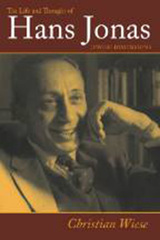 The Life and Thought of Hans Jonas: Jewish Dimensions
Christian Wiese
University Press of New England, 2010 Hans Jonas (1903–1993) is one of the most important philosophers of the 20th century. Born in a German Jewish community in the Rhineland, Jonas’s mentors included Edmund Husserl, Martin Heidegger, and Rudolf Bultmann. The committed Zionist fled Germany in 1933 for Jerusalem, fought in the British Army against Hitler, and then left Israel for North America in 1949. Much of Jonas’s philosophy responds to contemporary historical and political challenges: mass society, totalitarianism, the Holocaust, “nuclearism,” environmental devastation (Chernobyl), and, later, the risks of genetic engineering. Wiese’s study examines how Jonas’s Jewish background influenced his intellectual development. Wiese shows how philosophical ethics and Jewish identity were two inseparable aspects of his thinking, with the fight against Nihilism as the most important link. Drawing on a wealth of unpublished material and exploring momentous encounters with major figures of 20th century life and letters like Gershom Scholem and Hannah Arendt, Wiese demonstrates how Jonas combined religious and philosophical elements in his thought, and offers new insights into the work of this eminent thinker.
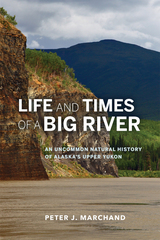 Life and Times of a Big River: An Uncommon Natural History of Alaska's Upper Yukon
Peter J. Marchand
University of Alaska Press, 2015 When Richard Nixon signed the Alaska Native Claims Settlement Act in 1971, eighty million acres were flagged as possible national park land. Field expeditions were tasked with recording what was contained in these vast acres. Under this decree, five men were sent into the sprawling, roadless interior of Alaska, unsure of what they’d encounter and ultimately responsible for the fate of four thousand pristine acres.
Life and Times of a Big River follows Peter J. Marchand and his team of biologists as they set out to explore the land that would ultimately become the Yukon-Charley Rivers National Preserve. Their encounters with strange plants, rare insects, and little-known mammals bring to life a land once thought to be static and monotonous. And their struggles to navigate and adapt to an unforgiving environment capture the rigorous demands of remote field work. Weaving in and out of Marchand's narrative is an account of the natural and cultural history of the area as it relates to the expedition and the region’s Native peoples. Life and Times of a Big River chorincles this riveting, one-of-a-kind journey of uncertainty and discovery from a disparate (and at one point desperate) group of biologists.
The Life and Times of A.D. Blumlein
Russell Burns
The Institution of Engineering and Technology, 2000 Alan Dower Blumlein was a genius and has been described as the greatest British electronics engineer of the twentieth century. Although he was tragically killed at the age of 38, he contributed enormously to the fields of telephony and electrical measurements, monophonic and stereophonic recording and reproduction, high definition television, electronics, antennas and cables, and radar systems of various types. His accidental death in June 1942 was described by an Air Chief Marshal as 'a catastrophe', and the Secretary of State for Air said that 'it would be impossible to over-rate the importance of the work on which [Blumlein was] engaged': his loss was a 'national disaster'. He was responsible for saving many thousands of lives during the Second World War, and his endeavours in peacetime led to pleasure being given to millions of people.
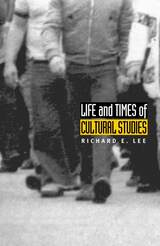 Life and Times of Cultural Studies: The Politics and Transformation of the Structures of Knowledge
Richard E. Lee
Duke University Press, 2003 Moving world-systems analysis into the cultural realm, Richard E. Lee locates the cultural studies movement within a broad historical and geopolitical framework. He illuminates how order and conflict have been reflected and negotiated in the sphere of knowledge production by situating the emergence of cultural studies at the intersection of post–1945 international and British politics and a two-hundred-year history of conservative critical practice. Tracing British criticism from the period of the French Revolution through the 1960s, he describes how cultural studies in its infancy recombined the elite literary critical tradition with the First New Left’s concerns for history and popular culture—just as the liberal consensus began to come apart. Lee tracks the intellectual project of cultural studies as it developed over three decades, beginning with its institutional foundation at the University of Birmingham’s Centre for Contemporary Cultural Studies (CCCS). He links work at the CCCS to the events of 1968 and explores cultural studies’ engagement with theory in the debates on structuralism. He considers the shift within the discipline away from issues of working-class culture toward questions of identity politics in the fields of race and gender. He follows the expansion of the cultural studies project from Britain to Australia, Canada, South Africa, and the United States. Contextualizing the development and spread of cultural studies within the longue durée structures of knowledge in the modern world-system, Lee assesses its past and future as an agent of political and social change.
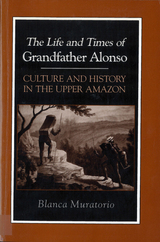 The Life and Times of Grandfather Alonso: Culture and History in the Upper Amazon
Muratorio, Blanca
Rutgers University Press, 1991 In Blanca Muratorio's book, we are introduced to Rucuyaya Alonso, an elderly Quichua Indian of the Upper Ecuadorean Amazon. Alonso is a hunter, but like most Quichuas, he has done other work as well, bearing loads, panning gold, tapping rubber trees, and working for Shell Oil. He tells of his work, his hunting, his marriage, his fights, his fears, and his dreams. His story covers about a century because he incorporates the oral tradition of his father and grandfather along with his own memories. Through his life story, we learn about the social and economic life of that region.
Chapters of Alonso's life history and oral tradition alternate with chapters detailing the history of the world around him--the domination of missionaries, the white settlers' expropriation of land, the debt system workers were subjected to, the rubber boom, the world-wide crisis of the 1930s, and the booms and busts of the international oil market. Muratorio explains the larger social, economic, and ideological bases of white domination over native peoples in Amazonia. She shows how through everyday actions and thoughts, the Quichua Indians resisted attacks against their social identity, their ethnic dignity, and their symbolic systems. They were far from submissive, as they have often been portrayed.
 The Life and Times of John Steele: Mormon Kingdom Builder
Kerry William Bate
University of Utah Press, 2025 From radical reformer to Mormon pioneer and mystic
Among the founders of Salt Lake City, Parowan, and Las Vegas, and an explorer of Zion National Park and the Grand Canyon, John Steele's legacy is etched across the American West. The Life and Times of John Steele follows the remarkable journey of this Irish-born convert to Mormonism from his birth into scarcity through his final days in Kanarraville, Utah.
A fervent believer in utopian ideals, Steele sought to build an egalitarian Kingdom of Christ in the last days, becoming a key figure in early Utah history. His multifaceted roles—missionary, city founder, militia major, justice of the peace, and self-taught doctor using folk medicine, charms, and the occult—make his story unique. This meticulously researched biography offers new insights into pivotal events such as the Mountain Meadows Massacre and the communal economics of the Church of Jesus Christ of Latter-day Saints, drawing from Steele’s extensive personal diaries and papers to bring his complex, colorful life and times to light.
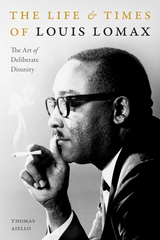 The Life and Times of Louis Lomax: The Art of Deliberate Disunity
Thomas Aiello
Duke University Press, 2021 Syndicated television and radio host. Serial liar. Pioneering journalist. Convicted criminal. Close ally of Malcolm X and Martin Luther King Jr. Publicity-seeking provocateur. Louis Lomax's life was a study in contradiction. In this biography, Thomas Aiello traces the complicated and fascinating arc of Lomax's life and career, showing how the contradictions, tumult, and inconsistencies that marked his life reflected those of 1960s America. Aiello takes readers from Lomax's childhood in the Deep South to his early confidence schemes to his emergence as one of the loudest and most influential voices of the civil rights movement. Regardless of what political position he happened to take at any given moment, Lomax preached “the art of deliberate disunity,” in which the path to democracy could only be achieved through a diversity of opinions. Engaging and broad in scope, The Life and Times of Louis Lomax is the definitive study of one of the civil rights era's most complicated, important, and overlooked figures.
 The Life and Times of Richard J. Hughes: The Politics of Civility
Wefing, John B
Rutgers University Press, 2009 The Life and Times of Richard J. Hughes explores the influential public service of this two-term New Jersey governor. He was the only person in New Jersey history to serve as both governor and chief justice of the New Jersey Supreme Court. This biography illuminates the governor's accomplishments between 1962 and 1970, including the creation of the Hackensack Meadowlands Commission, formation of the county college system, establishment of stringent antipollution laws, design of the public defender system, and the adoption of a New Jersey sales tax, as well as his pivotal role during the Newark riots. As chief justice, Hughes faced difficult issuesùschool funding, low and moderate income housing needs, freedom of speech, and his decision in the rightto-die case involving Karen Ann Quinlan. With a career characterized by liberal activism, Hughes also contributed nationally and internationally, from serving as host of the 1964 Democratic National Convention to monitoring elections in South Vietnam. John B. Wefing's research includes interviews with prominent politicians and leaders who worked with Hughes at various points in his career. The result is a rich story of a public servant who possessed a true ability to work with members of both political parties and played a significant role in shaping modern New Jersey.
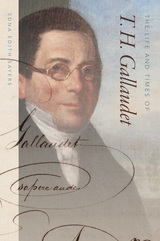 The Life and Times of T. H. Gallaudet
Edna Edith Sayers
University Press of New England, 2017 Edna Edith Sayers has written the definitive biography of T. H. Gallaudet (1787–1851), celebrated today as the founder of deaf education in America. Sayers traces Gallaudet’s work in the fields of deaf education, free common schools, literacy, teacher education and certification, and children’s books, while also examining his role in reactionary causes intended to uphold a white, Protestant nation thought to have existed in New England’s golden past. Gallaudet’s youthful social and political entanglements included involvement with Connecticut’s conservative, state-established Congregational Church, the Federalist Party, and the Counter-Enlightenment ideals of Yale (where he was a student). He later embraced anti-immigrant, anti-abolition, and anti-Catholic efforts, and supported the expatriation of free African-Americans to settlements on Africa’s west coast. As much a history of the paternalistic, bigoted, and class-conscious roots of a reform movement as a story of one man’s life, this landmark work will surprise and enlighten both the hearing and Deaf worlds.
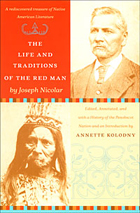 The Life and Traditions of the Red Man: A rediscovered treasure of Native American literature
Joseph Nicolar
Duke University Press, 2007 Joseph Nicolar’s The Life and Traditions of the Red Man tells the story of his people from the first moments of creation to the earliest arrivals and eventual settlement of Europeans. Self-published by Nicolar in 1893, this is one of the few sustained narratives in English composed by a member of an Eastern Algonquian-speaking people during the nineteenth century. At a time when Native Americans’ ability to exist as Natives was imperiled, Nicolar wrote his book in an urgent effort to pass on Penobscot cultural heritage to subsequent generations of the tribe and to reclaim Native Americans’ right to self-representation. This extraordinary work weaves together stories of Penobscot history, precontact material culture, feats of shamanism, and ancient prophecies about the coming of the white man. An elder of the Penobscot Nation in Maine and the grandson of the Penobscots’ most famous shaman-leader, Old John Neptune, Nicolar brought to his task a wealth of traditional knowledge. The Life and Traditions of the Red Man has not been widely available until now, largely because Nicolar passed away just a few months after the printing of the book was completed, and shortly afterwards most of the few hundred copies that had been printed were lost in a fire. This new edition has been prepared with the assistance of Nicolar’s descendants and members of the Penobscot Nation. It includes a summary history of the tribe; an introduction that illuminates the book’s narrative strategies, the aims of its author, and its key themes; and annotations providing historical context and explaining unfamiliar words and phrases. The book also contains a preface by Nicolar’s grandson, Charles Norman Shay, and an afterword by Bonnie D. Newsom, former Director of the Penobscot Nation’s Department of Cultural and Historic Preservation. The Life and Traditions of the Red Man is a remarkable narrative of Native American culture, spirituality, and literary daring.
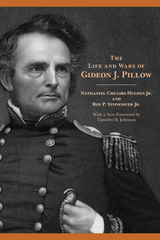 The Life and Wars of Gideon J. Pillow
Nathaniel Cheairs Hughes Jr.
University of Tennessee Press, 2011
One of nineteenth-century America’s most controversial military figures, Gideon Johnson Pillow gained notoriety early in the Civil War for turning an apparent Confederate victory at Fort Donelson into an ignominious defeat. Dismissed by contemporaries and historians alike as a political general with dangerous aspirations, his famous failures have overshadowed the tremendous energy, rare talent, and great organizational skills that also marked his career. In this exhaustive biography, Nathaniel Cheairs Hughes Jr. and Roy P. Stonesifer Jr. look beyond conventional historical interpretations to provide a full and nuanced portrait of this provocative and maligned man.
While noting his arrogance, ambition, and very public mistakes, Hughes and Stonesifer give Pillow his due as a gifted attorney, first-rate farmer, innovator, and man of considerable political influence. One of Tennessee’s wealthiest planters, Pillow promoted scientific methods to improve the soil, preached crop diversification to reduce the South’s dependence on cotton, and endorsed railroad construction as a means to develop the southern economy. He helped secure the 1844 Democratic nomination for his friend and fellow Tennessean James K. Polk and was rewarded after Polk’s victory with an appointment as brigadier general. While his role in the Mexican War earned him a reputation for recklessness and self-promotion, his organization of what would become the Army of Tennessee put him at the forefront of the Confederate war effort. After the disaster at Donelson, he spent the rest of the war directing Confederate conscription in the West and leading Rebel cavalry forces—a role of continuing service which, the authors show, has been insufficiently acknowledged.
Updated with a new foreword by noted Civil War scholar Timothy D. Johnson, The Life and Wars of Gideon J. Pillow portrays a colorful, enigmatic general who moved just outside the world of greatness he longed to enter.
Nathaniel Cheairs Hughes Jr. is the author or editor of twenty books relating to the American Civil War, including Refugitta of Richmond; Brigadier General Tyree H. Bell, C.S.A.: Forrest’s Fighting Lieutenant; and Yale’s Confederates. The late Roy P. Stonesifer Jr. was a professor of history at Edinboro University of Pennsylvania.
The Life and Work of Fedor Abramov
David Gillespie
Northwestern University Press, 1997 Fedor Aleksandrovich Abramov (1920-83) was one of the leading representatives of the Russian village prose movement of the 1960s and 1970s. In The Life and Work of Fedor Abramov, scholars from the United States and abroad draw on Abramov's works, his diaries, and his private writings as sources for examining his place within the village prose movement and within Anglo-American theories of cultural reception.
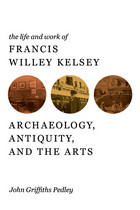 The Life and Work of Francis Willey Kelsey: Archaeology, Antiquity, and the Arts
John Griffiths Pedley
University of Michigan Press, 2011 President of the Archaeological Institute of America, professor at the University of Michigan from 1889 to 1927, and president of the American Philological Association, Francis Kelsey was crucially involved in the founding or growth of major educational institutions. He came to maturity in a period of great technological change in communications, transportation, and manufacturing. Kelsey took full advantage of such innovations in his ceaseless drive to promote education for all, to further the expansion of knowledge, and to champion the benefits of the study of antiquity. A vigorous traveler around the United States, Europe, and the Mediterranean, Kelsey strongly believed in the value of personally viewing sites ancient and modern and collecting artifacts that could be used by the new museums and universities that were springing up in the United States. This collecting habit put him in touch with major financiers of the day, including Charles Freer, Andrew Carnegie, and J. P. Morgan, as he sought their help for important projects. Drawing heavily on Kelsey's daily diaries now held at the University of Michigan's Bentley Historical Library, John Griffiths Pedley gives us a biography that records the wide-ranging activities of a gifted and energetic scholar whose achievements mirrored the creative and contributive innovations of his contemporary Americans.
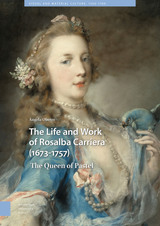 The Life and Work of Rosalba Carriera (1673-1757): The Queen of Pastel
Angela Oberer
Amsterdam University Press, 2020 The Life and Work of Rosalba Carriera (1673-1757): The Queen of Pastel is the first extensive biographical narrative in English of Rosalba Carriera. It is also the first scholarly investigation of the external and internal factors that helped to create this female painter's unique career in eighteenth-century Europe. It documents the difficulties, complications, and consequences that arose then -- and can also arise today -- when a woman decides to become an independent artist. This book contributes a new, in-depth analysis of the interplay between society's expectations, generally accepted codices for gendered behaviour, and one single female painter's astute strategies for achieving success, as well as autonomy in her professional life as a famed artist. Some of the questions that the author raises are: How did Carriera manage to build up her career? How did she run her business and organize her own workshop? What kind of artist was Carriera? Finally, what do her self-portraits reveal in terms of self-enactment and possibly autobiographical turning points?
Life and Works
Saint Gregory Thaumaturgus
Catholic University of America Press, 1998 This volume presents the earliest and most important life of Gregory Thaumaturgus, preached by St. Gregory of Nyssa, and all the works that can be attributed to Gregory Thamumaturgus himself. It includes his Address of Thanksgiving to his teacher Origen; his Christian adaptation and interpretation of the Old Testament book of Ecclesiastes; his regulations restoring order in the Christian community after an invasion by the Goths; a remarkable treatise on God's ability to suffer and another on the Trinity; and two small texts that may or may not have been written by him.
The Life and Works of the Troubadour Raimbaut D’Orange
Walter Pattison
University of Minnesota Press, 1952 This scholarly work presents all the can be gleaned from history and literature concerning the twelfth-century Provencal troubadour-prince, Raimbaut d’Orange. There is a section on Raimbaut’s historical background, another providing an analytical study of his poetry, and a third giving the Old Provencal texts of the poems with variants, English translations, and notes. Texts of a apocryphal works, summaries of biographical documents and the text of the Provencal vida are given in appendixes. There are also a glossary and an index of a proper names from the poems. Previous studies of the troubadours have been largely based on the romantic concept of their lives. This study assembles existing factual knowledge and relates it in historical perspective to the troubadour’s epoch and environment.
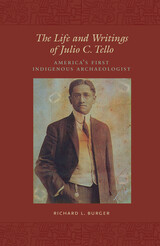 The Life and Writings of Julio C. Tello: America's First Indigenous Archaeologist
Richard L. Burger
University of Iowa Press, 2009 The father of Peruvian archaeology, Julio Tello was the most distinguished Native American scholar ever to focus on archaeology. A Quechua speaker born in a small highland village in 1880, Tello did the impossible: he received a medical degree and convinced the Peruvian government to send him to Harvard and European universities to master archaeology and anthropology. He then returned home to shape modern Peruvian archaeology and the institutions through which it was carried out.
Tello’s vision remains unique, and his work has taken on additional interest as contemporary scholars have turned their attention to the relationship among nationalism, ethnicity, and archaeology. Unfortunately, many of his most important works were published in small journals or newspapers in Peru and have not been available even to those with a reading knowledge of Spanish. This volume thus makes available for the first time a broad sampling of Tello’s writings as well as complementary essays that relate these writings to his life and contributions.
Essays about Tello set the stage for the subsequent translations. Editor Richard Burger assesses his intellectual legacy, Richard Daggett outlines his remarkable life and career, and John Murra places him in both national and international contexts. Tello’s writings focus on such major discoveries as the Paracas mummies, the trepanation of skulls from Huarochirí, Andean iconography and cosmology, the relation between archaeology and nationhood, archaeological policy and preservation, and the role of science and museums in archaeology. Finally, the bibliography gives the most complete and accurate listing of Tello’s work ever compiled.
With its abundance of coups, wars, political dramas, class struggle, racial discrimination, looters, skulls, mummies, landslides, earthquakes, accusations, and counteraccusations, The Life and Writings of Julio C. Tello will become an indispensable reference for Andeanists.
The Life and Writings of Luisa de Carvajal y Mendoza
Luisa de Carvajal y Mendoza, Edited by Anne J. Cruz, Translated by Anne J. Cruz
Iter Press, 2014 Rejecting marriage and the convent, the Spanish noblewoman, poet, and religious activist Luisa de Carvajal y Mendoza ( Jaraicejo 1566–London 1614) led an uncommon life of adventure and spiritual devotion. Orphaned as a child, she lived first at Philip II’s court, and then with an uncle, the Viceroy of Navarra, who enforced harsh discipline on his ward. Through her contacts with the English Jesuits, Carvajal traveled secretly to London as a self-appointed missionary, where she was jailed twice for preaching against Anglicanism. A tireless writer, Carvajal left a small but impressive collection of spiritual poetry, an autobiography, and over two hundred letters. This volume provides a scholarly introduction and translations of selections from her writings.
The Life Assignment
Ricardo Alberto Maldonado
Four Way Books, 2020 The speaker of the poems in The Life Assignment is reviewing his history. As if sorting through a box of photographs, the speaker sorts through relationships, trying to discern what was healthy from what was exploitative. Concepts of love are turned over and over in these poems: romantic love, love of family, love of country, self-love (or lack thereof). Often the speaker finds that what at first appeared to be caring, was insincere all along. When tenderness is in short supply, how can one protect himself? How can one find home? In his debut collection, Ricardo Alberto Maldonado bends poems through bilingual lyrics that present spartan observation as evidence for its exacting verdict: “We never leave when life is elsewhere. The clemency of men disappears / as does the light, tarring the roofs.” An electric debut collection.
Life at Swift Water Place: Northwest Alaska at the Threshold of European Contact
Edited by Doug D. Anderson and Wanni W. Anderson
University of Alaska Press, 2019 This is a multidisciplinary study of the early contact period of Alaskan Native history that follows a major hunting and fishing Inupiaq group at a time of momentous change in their lifeways. The Amilgaqtau yaagmiut were the most powerful group in the Kobuk River area. But their status was forever transformed thanks to two major factors. They faced a food shortage prompted by the decline in caribou, one of their major foods. This was also the time when European and Asian trade items were first introduced into their traditional society. The first trade items to arrive, a decade ahead of the Europeans themselves, were glass beads and pieces of metal that the Inupiat expertly incorporated into their traditional implements. This book integrates ethnohistoric, bio-anthropological, archaeological, and oral historical analyses.
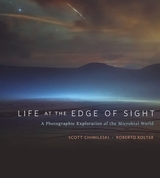 Life at the Edge of Sight: A Photographic Exploration of the Microbial World
Scott Chimileski and Roberto KolterForeword by Moselio Schaechter
Harvard University Press, 2017 Microbes create medicines, filter waste water, and clean pollution. They give cheese funky flavors, wines complex aromas, and bread a nutty crumb. Life at the Edge of Sight is a stunning visual exploration of the inhabitants of an invisible world, from the pioneering findings of a seventeenth-century visionary to magnificent close-ups of the inner workings and cooperative communities of Earth’s most prolific organisms.
Using cutting-edge imaging technologies, Scott Chimileski and Roberto Kolter lead readers through breakthroughs and unresolved questions scientists hope microbes will answer soon. They explain how microbial studies have clarified the origins of life on Earth, guided thinking about possible life on other planets, unlocked evolutionary mechanisms, and helped explain the functioning of complex ecosystems. Microbes have been harnessed to increase crop yields and promote human health.
But equally impressive, Life at the Edge of Sight opens a beautiful new frontier for readers to explore through words and images. We learn that there is more microbial biodiversity on a single frond of duckweed floating in a Delft canal than the diversity of plants and animals that biologists find in tropical rainforests. Colonies with millions of microbes can produce an array of pigments that put an artist’s palette to shame. The microbial world is ancient and ever-changing, buried in fossils and driven by cellular reactions operating in quadrillionths of a second. All other organisms have evolved within this universe of microbes, yielding intricate beneficial symbioses. With two experts as guides, the invisible microbial world awaits in plain sight.
Life at the End of Life: Finding Words Beyond Words
Marcia Brennan
Intellect Books, 2017 Artist and scholar Marcia Brennan serves as Artist in Residence at the M. D. Anderson Cancer Center in Houston, and the experience of seeing, close-up, the transitional states and transformational visions involved in the approaching end of life raised countless questions about the intersection of life, death, and art.
Those questions are at the heart of this unique book. Bridging disparate fields, including art history, medical humanities, and religious studies, Life at the End of Life explores the ways in which art can provide a means for rendering otherwise abstract, deeply personal, and spiritual experiences vividly concrete and communicable, even as they remain open-ended and transcendent. In the face of death, suffering, and uncertainty, Brennan shows how artistic expression can offer valuable aesthetic and metaphysical avenues for understanding and for making meaning.
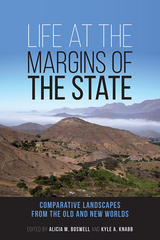 Life at the Margins of the State: Comparative Landscapes from the Old and New Worlds
Alicia M. Boswell
University Press of Colorado, 2022 Life at the Margins of the State examines the sociopolitical and cultural nuances, negotiations, and strategies of resistance developed by marginal communities—including frontiers, borderlands, borders, and other locations where there was a substantive difference in scale from more hegemonic political entities. The volume explores not just the nature of interactions in the political margins but the political, social, and economic trajectories of the societies that formed there.
Case studies from the New and Old Worlds—including historic California, medieval Iceland, ancient Mesoamerica, ancient Nubia, colonial El Salvador, the prehistoric Levant, pre-Columbian Amazon, Africa’s historic central Sahel, and ancient Peru—offer novel perspectives on how borderland societies adapted to the unique human and natural environments of these liminal spaces. Contributors draw on archaeological evidence as well as historical documents and linguistic data to facilitate the documentation of local histories and the strategies employed by communities living in or near ancient states and empires.
This close study of groups on the margins shows that peripheral polities are not simply the by-products of complexity emanating from a political core and demonstrates that traditional assumptions and models need to be reconsidered.
Contributors:
Tara D. Carter, Mikael Fauvelle, Elena A.A. Garcea, Esteban Gomez, Scott MacEachern, Claire Novotny, Bradley J Parker, Erin Smith, John H. Walker
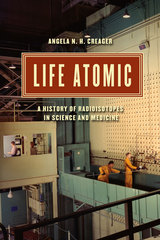 Life Atomic: A History of Radioisotopes in Science and Medicine
Angela N. H. Creager
University of Chicago Press, 2013 After World War II, the US Atomic Energy Commission (AEC) began mass-producing radioisotopes, sending out nearly 64,000 shipments of radioactive materials to scientists and physicians by 1955. Even as the atomic bomb became the focus of Cold War anxiety, radioisotopes represented the government’s efforts to harness the power of the atom for peace—advancing medicine, domestic energy, and foreign relations. In Life Atomic, Angela N. H. Creager tells the story of how these radioisotopes, which were simultaneously scientific tools and political icons, transformed biomedicine and ecology. Government-produced radioisotopes provided physicians with new tools for diagnosis and therapy, specifically cancer therapy, and enabled biologists to trace molecular transformations. Yet the government’s attempt to present radioisotopes as marvelous dividends of the atomic age was undercut in the 1950s by the fallout debates, as scientists and citizens recognized the hazards of low-level radiation. Creager reveals that growing consciousness of the danger of radioactivity did not reduce the demand for radioisotopes at hospitals and laboratories, but it did change their popular representation from a therapeutic agent to an environmental poison. She then demonstrates how, by the late twentieth century, public fear of radioactivity overshadowed any appreciation of the positive consequences of the AEC’s provision of radioisotopes for research and medicine.
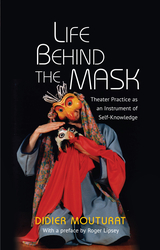 Life Behind the Mask: Theater Practice as an Instrument of Self-Knowledge
Didier Mouturat
Sussex Academic Press, 2022 "You had to decide to let yourself be turned upside down, you had to accept to see the idea you had forged about yourself progressively shatter." In the summer of 1969, at 19 years old, Didier Mouturat gave up on college, shattering his parents' hopes that he follow a safe and conventional course. Fresh from the wild Parisian student revolt of 1968, with its street battles and slogans, he set out to find a life that would be truly alive, deciding to be a classical actor. When he met Cyrille Dives, however, the universe of masks quietly turned his world upside down. This book describes Mouturat's apprenticeship to a unique theater artist. In the 1970s and early '80s, Dives created a theater of masks, a Western parallel to Japanese Noh. Dives was a true bohemian artist, a sculptor of masks, a painter and theatrical director. Cyrille Dives was also a spiritual master. Mouturat's apprenticeship encompassed everything from walking in a way that brings a mask to life to cultivating a beginner's mind. Slowly and subtly, the theater apprenticeship became an encounter with the deeper truth of his own being. "I am speaking of an intimate, progressive discovery that we are not masters of our own being - that it is only the result of a system of reactions that tyrannize us." Mouturat becomes Dives's right-hand man, helping establish a theater and a school of masks. That work is evident here in enchanting illustrations, as well as words. Yet as translated by the scholar and author Roger Lipsey, Mouturat also offers a pithy chronicle of a search for meaning and inner being.
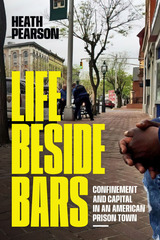 Life beside Bars: Confinement and Capital in an American Prison Town
Heath Pearson
Duke University Press, 2024 In Life beside Bars, Heath Pearson showcases dynamic, interdependent community as the best hope for undoing the systems of confinement that reproduce capital in Cumberland County, New Jersey—a place that is home to three state prisons, one federal prison, and the regional jail. Pearson places today’s prisons within the region’s longer history of Lenape genocide, chattel slavery, Japanese American labor camps, and other forms of racialized punishment and carceral control. From this vantage, prisons appear not as the structural fix for the region’s failed political economy but as a continuation of the carceral principle that has always sustained it. This ongoing use of confinement, though, is merely the backdrop. Through ethnographic vignettes written in story form, Pearson offers an alternative history of the unruly and unexpected ways that people resist, get by, make money, find joy, and build radical social life in the small, unseen spaces beside large-scale confinement. As such, Pearson enriches our understanding of daily life in and around prisons—in any American community—while providing a kaleidoscope of possibilities for theorizing and organizing alternative paths.
The Life Beside This One
Lawrence Raab
Tupelo Press, 2017 “There is no poet who brings more companionability to the uncanny than Lawrence Raab. The Life Beside This One is full of reasons to be scared to death, but drawn with an exquisite equilibrium where you’d least expect. The door out in these poems is never the door in. This is an art that shows us how an extraordinary imagination can be the crux of a great humanity, even a basis for hope and comfort.” ––Dean Young. The poems of Lawrence Raab are accessible yet mysterious, their complexities an aspect of (and sometimes hidden by) their clarities. The title of his ninth collection suggests both the life we live and another life alongside—what might have been but wasn’t, yet remains in the imagination. “The casual tone,” Mark Strand has written of Raab’s work, “the offhand remark, are not only the means by which sense establishes itself, but also the way it take on a miraculous resonance.”
Life Between Buildings: Using Public Space
Jan Gehl
Island Press, 2008 “. . .thoughtful, beautiful, and enlightening...”
—Jane Jacobs
“This book will have a lasting infl uence on the future quality of public open spaces. By helping us better understand the larger public life of cities, Life between Buildings can only move us toward more lively and healthy public places. Buy this book, fi nd a comfortable place to sit in a public park or plaza, begin reading, look around. You will be surprised at how you will start to see (and design) the world differently.”
—Landscape Architecture
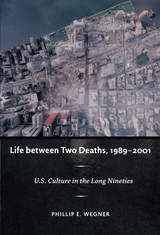 Life between Two Deaths, 1989-2001: U.S. Culture in the Long Nineties
Phillip E. Wegner
Duke University Press, 2009 Through virtuoso readings of significant works of American film, television, and fiction, Phillip E. Wegner demonstrates that the period between the fall of the Berlin Wall in November 1989 and the terrorist attacks of September 11, 2001 fostered a unique consciousness and represented a moment of immense historical possibilities now at risk of being forgotten in the midst of the “war on terror.” Wegner argues that 9/11 should be understood as a form of what Jacques Lacan called the “second death,” an event that repeats an earlier “fall,” in this instance the collapse of the Berlin Wall. By describing 9/11 as a repetition, Wegner does not deny its significance. Rather, he argues that it was only with the fall of the towers that the symbolic universe of the Cold War was finally destroyed and a true “new world order,” in which the United States assumed disturbing new powers, was put into place. Wegner shows how phenomena including the debate on globalization, neoliberal notions of the end of history, the explosive growth of the Internet, the efflorescence of new architectural and urban planning projects, developments in literary and cultural production, new turns in theory and philosophy, and the rapid growth of the antiglobalization movement came to characterize the long nineties. He offers readings of some of the most interesting cultural texts of the era: Don DeLillo’s White Noise; Joe Haldeman’s Forever trilogy; Octavia Butler’s Parable novels; the Terminator films; the movies Fight Club, Independence Day, Cape Fear, and Ghost Dog; and the television series Buffy the Vampire Slayer. In so doing, he illuminates fundamental issues concerning narrative, such as how beginnings and endings are recognized and how relationships between events are constructed.
Life beyond Medicine: The Joys and Challenges of Physician Retirement
Sharon Romm
Dartmouth College Press, 2018 Physicians retire at all ages—older doctors forsake medical practice when tired of it or when forced to do so by age or illness; younger practitioners leave because of burnout, disillusionment with the medical system, or a desire to engage in new activities. But research and literature about physician retirement is scanty. Given the limited resources available, many physicians who want to retire from medicine remain mired in indecision, wondering how their life might be different if they left medicine. Sharon Romm has written the definitive guide to help health care professionals of all ages prepare for the joys and challenges ahead.
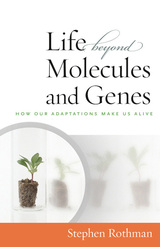 The Life Beyond Molecules and Genes: In Search of Harmony between Life and Science
Stephen Rothman
Templeton Press, 2009 What makes us alive? Is it our DNA? Our genetics? Is it our atomic composition that gives us life? Somehow, all of this feels radically dissonant from our everyday experience. In Life Beyond Molecules and Genes, experimental biologist Stephen Rothman makes the bold case that it is, in fact, our adaptive abilities, hewn by evolution, that make us alive. In making this point, he reveals a hidden harmony between science and life as we live it. The traditionally accepted understanding of adaptive properties (e.g., the abilities to obtain food, avoid predators, procreate) has been that these are actions of living things or traits that they express. Rothman makes the provocative assertion that this foundational element of the modern materialist perspective is entirely backwards. Our adaptive properties do not exist because we are alive, but rather we are alive because they exist. The implications of this assertion turn the theory of evolution by natural selection on its head by revealing that life transcends its material nature. Students and scholars of the biological sciences as well as those interested in the philosophy of science will find this work both fascinating and challenging, perhaps even controversial. For centuries, the field of biology has focused on the seemingly mundane task of identifying and cataloging life's chemical substances, while ignoring its grand question: "What is it that makes us alive?" With Life beyond Molecules and Genes, perhaps the field will move a bit closer toward an answer.
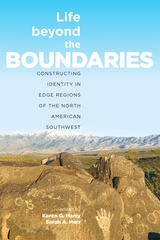 Life beyond the Boundaries: Constructing Identity in Edge Regions of the North American Southwest
Karen Harry
University Press of Colorado, 2018 Life beyond the Boundaries explores identity formation on the edges of the ancient Southwest. Focusing on some of the more poorly understood regions, including the Jornada Mogollon, the Gallina, and the Pimería Alta, the authors use methods drawn from material culture science, anthropology, and history to investigate themes related to the construction of social identity along the perimeters of the American Southwest. Through an archaeological lens, the volume examines the social experiences of people who lived in edge regions. Through mobility and the development of extensive social networks, people living in these areas were introduced to the ideas and practices of other cultural groups. As their spatial distances from core areas increased, the degree to which they participated in the economic, social, political, and ritual practices of ancestral core areas increasingly varied. As a result, the social identities of people living in edge zones were often—though not always—fluid and situational. Drawing on an increase of available information and bringing new attention to understudied areas, the book will be of interest to scholars of Southwestern archaeology and other researchers interested in the archaeology of low-populated and decentralized regions and identity formation. Life beyond the Boundaries considers the various roles that edge regions played in local and regional trajectories of the prehistoric and protohistoric Southwest and how place influenced the development of social identity. Contributors: Lewis Borck, Dale S. Brenneman, Jeffery J. Clark, Severin Fowles, Patricia A. Gilman, Lauren E. Jelinek, Myles R. Miller, Barbara J. Mills, Matthew A. Peeples, Kellam Throgmorton, James T. Watson
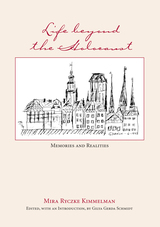 Life Beyond the Holocaust: Memories and Realities
Mira Ryczke Kimmelman
University of Tennessee Press, 2005 “For the rare Jews of Poland who managed to survive the Holocaust, the very idea of a return to what had been one’s homeland might seem both physically and psychologically impossible, perhaps even absurd. Yet it is precisely this paradoxical journey that Mira Kimmelman undertakes with great dignity and generosity. In words that are both direct and intimate, she exposes the ambivalence of what it means to learn to live again after Auschwitz—to experience love, raise a family, and assume a steadfast place in the Jewish community of a new land. At the same time, she acknowledges the abyss of losses that can never be retrieved. Perhaps even more importantly, Mira reveals how the pain of a return is transformed into a new adventure of discovery and reconciliation to be shared with her sons, their families, and her readers for generations to come.”—Karen D. LevyProfessor of French StudiesUniversity of Tennessee
“This book is written with intelligence, sensitivity, and eloquence. As a post-Holocaust memoir, it is an excellent volume, inasmuch as it brings out the scope of the Holocaust, its impact on future generations, and how it affects our understanding of past generations. The author explores and elucidates the problems of liberation from death and the return to life that forever confront Holocaust survivors.” —David Patterson Bornblum Chair in Judaic Studies University of Memphis
“Life beyond the Holocaust brings to mind in its power to document painful memories Primo Levi’s The Reawakening. Ms. Kimmelman’s memoir is, above all, a beautiful love story of herself and her husband, Max. She writes in a vernacular style that evokes her experiences with specific details. Her book is alive … and celebrates in good prose human values triumphing over radical evil.” —Hugh Nissenson
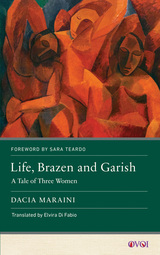 Life, Brazen and Garish: A Tale of Three Women
Dacia Maraini
Rutgers University Press, 2024 Three generations of women live together under the same roof. Though they are united by blood, each of the Cascadei women has a very different personality and way of expressing herself. Teenage daughter Lori scribbles impulsively in her diary, so eager to speed off on her moped that she rarely bothers with punctuation. Mother Maria, a professional translator, writes detailed and observant letters yet doesn’t see what is happening right in front of her. And grandmother Gesuina, a former stage actress, speaks into an audio recorder, giving a provocative and brutally candid performance for an imagined audience that might never listen. Life, Brazen and Garish offers a fresh take on the epistolary novel, telling the story of a family through the fragmented and disparate perspectives of daughter, mother, and grandmother. Yet even as each woman endures her private struggles with love and betrayal, youth and maturity, knowledge and ignorance, reality and illusion, the Cascadeis forge a solidarity that transcends generations. In turns heartbreaking and laugh-out-loud funny, this novel is a triumph of narrative voice and literary style from one of Italy’s most renowned writers. Questo libro è stato tradotto grazie a un contributo del Ministero degli Affari Esteri e della Cooperazione Internazionale italiano.
This book has been translated thanks to a contribution from the Italian Ministry of Foreign Affairs and International Cooperation.
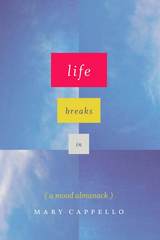 Life Breaks In: A Mood Almanack
Mary Cappello
University of Chicago Press, 2016
Some books start at point A, take you by the hand, and carefully walk you to point B, and on and on.
This is not one of those books. This book is about mood, and how it works in and with us as complicated, imperfectly self-knowing beings existing in a world that impinges and infringes on us, but also regularly suffuses us with beauty and joy and wonder. You don’t write that book as a linear progression—you write it as a living, breathing, richly associative, and, crucially, active, investigation. Or at least you do if you’re as smart and inventive as Mary Cappello.
What is a mood? How do we think about and understand and describe moods and their endless shadings? What do they do to and for us, and how can we actively generate or alter them? These are all questions Cappello takes up as she explores mood in all its manifestations: we travel with her from the childhood tables of “arts and crafts” to mood rooms and reading rooms, forgotten natural history museums and 3-D View-Master fairytale tableaux; from the shifting palette of clouds and weather to the music that defines us and the voices that carry us. The result is a book as brilliantly unclassifiable as mood itself, blue and green and bright and beautiful, funny and sympathetic, as powerfully investigative as it is richly contemplative.
“I’m one of those people who mistrusts a really good mood,” Cappello writes early on. If that made you nod in recognition, well, maybe you’re one of Mary Cappello’s people; you owe it to yourself to crack Life Breaks In and see for sure.
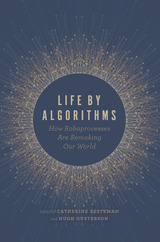 Life by Algorithms: How Roboprocesses Are Remaking Our World
Edited by Catherine Besteman and Hugh Gusterson
University of Chicago Press, 2019 Computerized processes are everywhere in our society. They are the automated phone messaging systems that businesses use to screen calls; the link between student standardized test scores and public schools’ access to resources; the algorithms that regulate patient diagnoses and reimbursements to doctors. The storage, sorting, and analysis of massive amounts of information have enabled the automation of decision-making at an unprecedented level. Meanwhile, computers have offered a model of cognition that increasingly shapes our approach to the world. The proliferation of “roboprocesses” is the result, as editors Catherine Besteman and Hugh Gusterson observe in this rich and wide-ranging volume, which features contributions from a distinguished cast of scholars in anthropology, communications, international studies, and political science.
Although automatic processes are designed to be engines of rational systems, the stories in Life by Algorithms reveal how they can in fact produce absurd, inflexible, or even dangerous outcomes. Joining the call for “algorithmic transparency,” the contributors bring exceptional sensitivity to everyday sociality into their critique to better understand how the perils of modern technology affect finance, medicine, education, housing, the workplace, food production, public space, and emotions—not as separate problems but as linked manifestations of a deeper defect in the fundamental ordering of our society.
Contributors
Catherine Besteman, Alex Blanchette, Robert W. Gehl, Hugh Gusterson, Catherine Lutz, Ann Lutz Fernandez, Joseph Masco, Sally Engle Merry, Keesha M. Middlemass, Noelle Stout, Susan J. Terrio
 Life Choices: A Hastings Center Introduction to Bioethics, Second Edition
Joseph H. Howell and William Frederick Sale, Editors
Georgetown University Press, 2000 An authoritative introduction to bioethics, Life Choices examines a comprehensive range of ethical questions and brings together some of the most probing and instructive essays published in the field. Some of the articles are classics in the literature of bioethics, while others address current issues. Topics include moral decision making, abortion, euthanasia and assisted suicide, life-sustaining technologies, organ transplantation, reproductive technologies, and the allocation of health care resources. This second edition features new sections on the goals and allocation of medicine and on the cloning of human beings. It also includes new articles on genetics, the duty to die, and ethical theory. Written by the foremost authorities in bioethics, Life Choices provides a comprehensive introduction to the field. Instructors who have used the first edition as a text will welcome this new, updated edition. Scholars and health care practitioners will find it useful as a valuable reference on a wide range of bioethical issues.
The Life Course Reader: Individuals and Societies across Time
Edited by Walter R. Heinz, Ansgar Weymann, and Johannes Huinik
Campus Verlag, 2009 The course of human lives in Western society is inescapably shaped by political, cultural, and economic factors. Changes in these spheres inevitably lead to changes in our conceptions of everything from childhood and adulthood to family structures and living arrangements. The nineteen articles collected in The Life Course Reader offer a range of both theoretical and empirical studies of changing conceptions of the life course. Drawing on data from North America and Europe, the Reader will be indispensable for anyone studying human development and the twenty-first century family.
Life Cycles in Jewish and Christian Worship
Paul F. Bradshaw and Lawrence A. Hoffman
University of Notre Dame Press, 1996 More than a series of rites of passage through the landmarks of growing up and growing old, Jewish and Christian life-cycle rituals give the members of each religious tradition theological and ritualized definitions of what a life should be. In this volume, the fourth in the acclaimed series Two Liturgical Traditions, eight scholars explore the models of human life implicit in Judaism and Christianity by unraveling and exploring the evolution and current condition of their life-cycle liturgies.
By combining the historical-critical method of traditional scholarship with that of more recent theory drawn from the human sciences, Life Cycles in Jewish and Christian Worship provides a novel treatment of Jewish and Christian life cycles, past and present, and is a unique and invaluable guide to the history, practice, and theology of life-cycle liturgy.
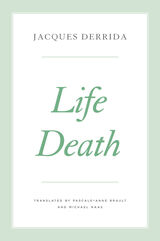 Life Death
Jacques Derrida
University of Chicago Press, 2020 The seventh in our series of Derrida's seminars, Life Death provides interdisciplinary reflections on the relationship of life and death—now in paperback.
One of Jacques Derrida’s most provocative works, Life Death deconstructs a deeply rooted dichotomy of Western thought: life and death. In rethinking the relationship between life and death, Derrida undertakes a multi-disciplinary analysis of a range of topics across philosophy, linguistics, and the life sciences. Derrida gave this seminar over fourteen sessions between 1975 and 1976 at the École normale supérieure in Paris to prepare students for the agrégation, a notoriously competitive exam. The theme for the exam that year was “Life and Death,” but Derrida made a critical modification to the title by dropping the coordinating conjunction. The resulting title of Life Death poses a philosophical question about the close relationship between life and death. Through close readings of Freudian psychoanalysis, the philosophy of Nietzsche and Heidegger, French geneticist François Jacob, and epistemologist Georges Canguilhem, Derrida argues that death must be considered neither as the opposite of life nor as the truth or fulfillment of it, but rather as that which both limits life and makes it possible. Derrida thus not only questions traditional understandings of the relationship between life and death but also ultimately develops a new way of thinking about what he calls “life death.”
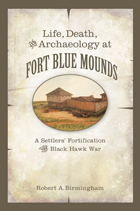 Life, Death, and Archaeology at Fort Blue Mounds: A Settlers’ Fortification of the Black Hawk War
Robert A. Birmingham
Wisconsin Historical Society Press, 2012 Life, Death, and Archaeology at Fort Blue Mounds is an archaeological detective story illuminating the lives of white settlers in the lead-mining region during the tragic events of the historically important conflict known as the Black Hawk War. Focusing on the strategically located Fort Blue Mounds in southwestern Wisconsin, Robert A. Birmingham summarizes the 1832 conflict and details the history of the fort, which played a major role not only in U.S. military and militia operations but also in the lives of the white settlers who sought refuge there. Birmingham then transports us to the site decades later, when he and fellow Wisconsin Historical Society archaeologists and dedicated volunteers began their search for the fort. The artifacts they unearthed provide fascinating—and sometimes surprising—insights into the life, material culture, and even the food of the frontier. Recommended for readers interested in the Black Hawk War, frontier life, Native American history, military history, and archaeology, Life, Death, and Archaeology at Fort Blue Mounds is grounded by a sense of place and the discovery of what a careful examination of our surroundings can tell us about the past.
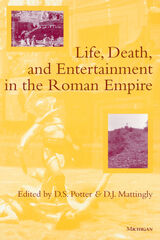 Life, Death, and Entertainment in the Roman Empire
D. S. Potter and D. J. Mattingly, Editors
University of Michigan Press, 1999 Life, Death, and Entertainment gives those who have a general interest in Roman antiquity a starting point informed by the latest developments in scholarship for understanding the extraordinary range of Roman society. Family structure, gender identity, food supply, religion, and entertainment are all crucial to an understanding of the Roman world. As views of Roman history have broadened in recent decades to encompass a wider range of topics, the need has grown for a single volume that can offer a starting point for these diverse subjects, for readers of all backgrounds.
This collection fills such a need by uniting a series of general introductions on each of these topics for the non-specialist. Each essay brings readers into contact with broadly ranging evidence, as well as with a wide variety of approaches that are needed to study basic questions about the Roman world.
Essays explore the Roman family, gender definition, demography, Roman food supply, Roman religion, and the wide variety of public entertainments throughout the empire. The volume brings together an unparalleled range of methodologies and topics. It will enable the modern reader to understand the Roman world in all its complexity. The general reader will welcome this approachable and timely text.
Contributors to the volume include Greg Aldrete, Hazel Dodge, Bruce W. Frier, Maud Gleason, Ann Hanson, David Mattingly, and David Potter.
D. S. Potter is Arthur F. Thurnau Professor of Greek and Latin, University of Michigan.
D. J. Mattingly is Professor of Roman Archaeology, University of Leicester.
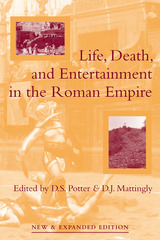 Life, Death, and Entertainment in the Roman Empire
D. S. Potter and D. J. Mattingly, Editors
University of Michigan Press, 2010 "[T]his handsomely-produced volume performs admirably as a series of introductions to sources, approaches, and the state of scholarship on major topics in Roman social history . . . Collections of essays come and go, but this one will stay in wide use. Each essay can stand alone but, tied together by the theme of dominance, the whole is greater than the sum of its parts."
---Donald Kyle, Bryn Mawr Classical Review "This collection of essays is intended to serve as a coursebook for introductory lecture series on Roman civilization; the essays are concentrated on fundamental aspects of Roman society, and no prior knowledge of antiquity on the reader's part is assumed. . . . The book as a whole is entirely successful in its projected aim: an immense range of detailed information about antiquity is presented in readable and largely sophisticated discussion. . . . Increasingly we need to be able to suggest to our students reading that is introductory but also in-depth and challenging, and this book is one possible reading that we can offer."
---Ellen O'Gorman, Classical Review Life, Death, and Entertainment gives those with a general interest in Roman antiquity a starting point, informed by the latest developments in scholarship, for understanding the extraordinary range of Roman society. Family structure, slavery, gender identity, food supply, religion, and entertainment---all crucial parts of the Roman world---are discussed here, in a single volume that offers an approachable guide for readers of all backgrounds. The collection unites a series of general introductions on each of these topics, bringing readers in touch with a broad range of evidence, as well as with a wide variety of approaches to basic questions about the Roman world. The newly expanded edition includes historian Keith Hopkins' pathbreaking article on Roman slaves. Volume editor David Potter has contributed two new translations of documents from emperors Hadrian and Marcus Aurelius. Hadrian's letters document a reorganization of the festival cycle in the Empire and reassert the importance of the Olympic Games; the letter to Marcus provides the most important surviving evidence for how gladiatorial games were actually organized. Contributors to the volume include Greg S. Aldrete, Hazel Dodge, Bruce W. Frier, Maud W. Gleason, Ann E. Hanson, Keith Hopkins, David J. Mattingly, and David S. Potter. D.S. Potter is Professor of Classics and Arthur F. Thurnau Professor, University of Michigan. D.J. Mattingly is Professor of Roman Archaeology, University of Leicester, and a Fellow of the British Academy. Cover illustrations: top left, Karanis Excavation, courtesy Kelsey Museum; bottom right, Monte Testacchio, courtesy David J. Mattingly; center, Pollice Verso by Jean-Léon Gérôme, courtesy Phoenix Art Museum, Museum Purchase.
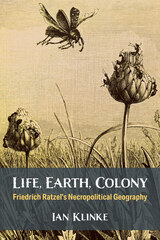 Life, Earth, Colony: Friedrich Ratzel's Necropolitical Geography
Ian Klinke
University of Michigan Press, 2023 Life, Earth, Colony explores the ideas, life, and historical significance of German zoologist turned geographer Friedrich Ratzel (1844–1904), famous for developing the foundations of geopolitical thought. Ratzel produced a remarkable body of work that revolutionized the study of space, movement, colonization, and war. He also served as a source of intellectual inspiration for national socialism, particularly through his Lebensraum (living space) concept, which understood all life as being caught in an eternal struggle for space. This book closely analyzes this radical conservative intellectual, focusing on his often-overlooked ethnography, biogeography, travel, and creative writing, and colonial activism as well as his more widely-known political geography.
Life, Earth, Colony finds that there is an as yet unexplored necropolitical impulse at the heart of Ratzel’s entire oeuvre, a preoccupation with death and dying, which had a profound impact on twentieth-century history.
 Life, Emergent: The Social in the Afterlives of Violence
Yasmeen Arif
University of Minnesota Press, 2016 How does an inquiry into life as it lives (or dies) amid mass violence look like from the perspective of the “social”? Taking us from Sierra Leone to India to Lebanon, Life, Emergent challenges conventional understandings of biopolitics, weaving a politics of life through the lens of life, not death. Arguing that the “letting die” element of biopolitics has been overemphasized, Yasmeen Arif zeros in on biopolitics’ other pole: “making live.” She does so by highlighting the various means and the forms of life configured in the aftermath—or afterlives—of violent events in contexts of law, justice, community, and identity. Her analysis of the social repercussions is both global and local in scope. Arif examines the convictions made in the Special Court of Sierra Leone, the first hybrid court of its nature under international criminal law. Next, she explores the making of a justice movement in the context of Hindu–Muslim violence in 2002 in the state of Gujarat, India. From there she revisits the Sikh carnage in Delhi of 1984. Finally, she explores a span of civil violence in Lebanon, and particularly, its effects on the city of Beirut. This rigorously argued book brings together the various strands of life and the social that each chapter has disentangled—and in doing so it begins to frame a politics of, and in, life.
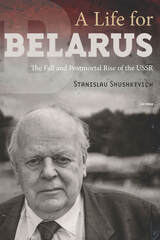 A Life for Belarus: The Fall and Postmortal Rise of the USSR
Stanislau Shushkevich
Central European University Press, 2025 This memoir of the first president of an independent Belarus (1991-1994) tells about the revival of independent Belarus, the difficulties in establishing a democracy and a market economy, a hardened Soviet mentality, and the political immaturity of the intelligentsia and obduracy of the old nomenklatura. Stanislau Shushkevich, born in 1934, narrates his path from a son of an “enemy of the people” to a doctorate in physics, and then to be the first head of independent Belarus. A series of entertaining essays discuss some major events as well as some minor ones that are barely known. The book describes Shushkevich’s role in hosting the Belavezha Accords, which brought about the end of the Soviet Union, and explores the motivation behind the decision for the de jure dissolution of the empire at a time when the major world leaders were categorically against the division of the USSR into independent states. The author draws particular attention to the role of the Baltic States in the late perestroika period. He also addresses the political passivity of the Soviet intelligentsia and the reasons for the revival of the Soviet Union in Russia and Belarus. Shushkevich, who lives in Minsk, also provides valuable insights into contemporary Belarus, including an assessment of Lukashenka’s controversial role in recent events.
 Life from an RNA World: The Ancestor Within
Michael Yarus
Harvard University Press, 2010 A majority of evolutionary biologists believe that we now can envision our biological predecessors—not the first, but nearly the first, living beings on Earth. Life from an RNA World is about these vanished forebears, sketching them in the distant past just as their workings first began to resemble our own. The advances that have made such a pursuit possible are rarely discussed outside of bio-labs. So here, says author Michael Yarus, is an album for interested non-biologists, an introduction to our relatives in deep time, slouching between the first rudimentary life on Earth and the appearance of more complex beings.
The era between, and the focus of Yarus’ work, is called the RNA world. It is RNA (ribonucleic acid)—long believed to be a mere biologic copier and messenger—that offers us this glimpse into our ancient predecessors. To describe early RNA creatures, here called “ribocytes” or RNA cells, Yarus deploys some basics of molecular biology. He reviews our current understanding of the tree of life, examines the structure of RNA itself, explains the operation of the genetic code, and covers much else—all in an effort to reveal a departed biological world across billions of years between its heyday and ours.
Courting controversy among those who question the role of “ribocytes”—citing the chemical fragility of RNA and the uncertainty about the origin of an RNA synthetic apparatus—Yarus offers an invaluable vision of early life on Earth. And his book makes that early form of life, our ancestor within, accessible to all of us.
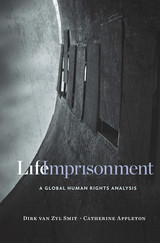 Life Imprisonment: A Global Human Rights Analysis
Dirk van Zyl Smit and Catherine Appleton
Harvard University Press, 2019 Life imprisonment has replaced capital punishment as the most common sentence imposed for heinous crimes worldwide. As a consequence, it has become the leading issue in international criminal justice reform. In the first global survey of prisoners serving life terms, Dirk van Zyl Smit and Catherine Appleton argue for a human rights–based reappraisal of this exceptionally harsh punishment. The authors estimate that nearly half a million people face life behind bars, and the number is growing as jurisdictions both abolish death sentences and impose life sentences more freely for crimes that would never have attracted capital punishment. Life Imprisonment explores this trend through systematic data collection and legal analysis, persuasively illustrated by detailed maps, charts, tables, and comprehensive statistical appendices.
The central question—can life sentences be just?—is straightforward, but the answer is complicated by the vast range of penal practices that fall under the umbrella of life imprisonment. Van Zyl Smit and Appleton contend that life imprisonment without possibility of parole can never be just. While they have some sympathy for the jurisprudence of the European Court of Human Rights, they conclude that life imprisonment, in many of the ways it is implemented worldwide, infringes on the requirements of justice. They also examine the outliers—states that have no life imprisonment—to highlight the possibility of abolishing life sentences entirely.
Life Imprisonment is an incomparable resource for lawyers, lawmakers, criminologists, policy scholars, and penal-reform advocates concerned with balancing justice and public safety.
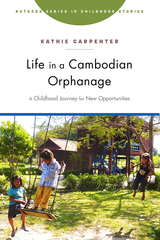 Life in a Cambodian Orphanage: A Childhood Journey for New Opportunities
Kathie Carpenter
Rutgers University Press, 2021 What is it like to grow up in an orphanage? What do residents themselves have to say about their experiences? Are there ways that orphanages can be designed to meet children's developmental needs and to provide them with necessities they are unable to receive in their home communities? In this book, detailed observations of children's daily life in a Cambodian orphanage are combined with follow-up interviews of the same children after they have grown and left the orphanage. Their thoughtful reflections show that the quality of care children receive is more important for their well-being than the site in which they receive it. Life in a Cambodian Orphanage situates orphanages within the social and political history of Cambodia, and shows that orphanages need not always be considered bleak sites of deprivation and despair. It suggests best practices for caring for vulnerable children regardless of the setting in which they are living.
Life in a Country Album: Poems
Nathalie Handal
University of Pittsburgh Press, 2019
Winner, 2020 Palestine Book Award
Finalist, 2019 Foreword Indies Award
From migrations to pop culture, loss to la dérive, Life in a Country Album is a soundtrack of the global cultural landscape—borders and citizenship, hybrid identities and home, freedom and pleasure. It’s a vast and moving look at the world, at what home means, and the ways we coexist in an increasingly divided world. These poems are about the dialects of the heart—those we are incapable of parting from, and those that are largely forgotten. Life in a Country Album is a vital book for our times. With this beautiful, epic collection, Nathalie Handal affirms herself as one of our most diverse and important contemporary poets.
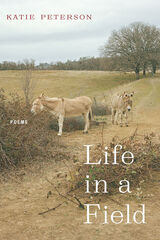 Life in a Field: Poems
Katie Peterson
Omnidawn, 2021 This is a comedy about climate change, in which a girl and a donkey become friends, then decide to marry time.
A lyric fable, Life in a Field intersperses Katie Peterson’s slow-moving, cinematic, and sensual writing with three folios of photographs by Young Suh. Introspection, wish, dream, and memory mark this tale, which is set in a location resembling twenty-first-century California—with vistas and orchards threatened by drought and fires. This is also a place of enchantment, a fairy-tale landscape where humans and animals live as equals. As the girl and the donkey grow up, they respond to the difficulties of contemporary civilization, asking a question that meets our existential moment: What do you do with the story you didn’t wish for? A narrator’s voice combines candor with distance, attempting to find a path through our familiar strife, toward a future that feels all but impossible, and into what remains of beauty and pleasure. Life in a Field tries to reverse our accelerating destruction of the natural world, reminding us of “the cold clarity we need to continue on this earth.”
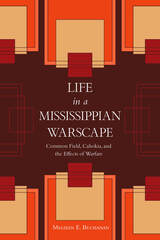 Life in a Mississippian Warscape: Common Field, Cahokia, and the Effects of Warfare
Meghan E. Buchanan
University of Alabama Press, 2022 Analyzes Mississippian daily life at Cahokia’s environs during wartime
In Life in a Mississippian Warscape: Common Field, Cahokia, and the Effects of Warfare Meghan E. Buchanan posits that to understand the big histories of warfare, political fragmentation, and resilience in the past archaeologists must also analyze and interpret the microscale actions of the past. These are the daily activities of people before, during, and after historical events. Within warscapes, battles take place in peoples’ front yards, family members die, and the impacts of violence in near and distant places are experienced on a daily basis. This book explores the microscale of daily lives of people living at Common Field, a large, palisaded mound center, during the period of Cahokia’s abandonment and the spread of violence and warfare throughout the Southeast.
Linking together ethnographic, historic, and archaeological sources, Buchanan discusses the evidence that the people of Common Field engaged in novel and hybrid practices in these dangerous times. At the microscale, they adopted new ceramic tempering techniques, produced large numbers of serving vessels decorated with warfare-related imagery, adapted their food practices, and erected a substantial palisade with specially prepared deposits. The overall picture that emerges at Common Field is of a people who engaged in risk-averse practices that minimized their exposure to outside of the palisade and attempted to seek intercession from otherworldly realms through public ceremonies involving warfare-related iconography.
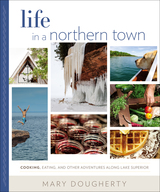 Life in a Northern Town: Cooking, Eating, and Other Adventures along Lake Superior
Mary Dougherty
Wisconsin Historical Society Press, 2017 "Generations of men and women have stood on these beaches, listened to water rushing over these basalt rocks, and picked wild blueberries here well before I sailed into the Bayfield harbor. The families of those men and women are still here, tethered to a place where they can slip behind their ancestor’s eyes and take in essentially the same view."
—from the Introduction
In 2007, Mary Dougherty and her family moved from St. Paul to the tiny Bayfield Peninsula, surrounded by the waters of Lake Superior and Chequamegon Bay in far northwestern Wisconsin. There they set out to live their lives against a backdrop of waterfalls, beaches, farm stands, and a quintessential small town of 487 people. Through recipes, stories, and photos, this book explores what it means to nourish a family and a community. As Mary Dougherty incorporates what is grown and raised in northern Wisconsin into her family’s favorite dishes, she continues a cultural tradition begun by immigrants hundreds of years ago. The result is a one-of-a-kind collection of globally and regionally inspired recipes featuring local cheeses, meats, and produce from the farmers in and around Bayfield—pho made with beef bones from a farm in Mellen, Indian meatballs with curry powder made in Washburn, chowder with corn and potatoes from a farm stand in Ashland. As she knits herself into the Bayfield community, Dougherty comes to more fully grasp the intricate relationship between food and community.
 Life in a Shell: A Physiologist’s View of a Turtle
Donald C. Jackson
Harvard University Press, 2013 Trundling along in essentially the same form for some 220 million years, turtles have seen dinosaurs come and go, mammals emerge, and humankind expand its dominion. Is it any wonder the persistent reptile bested the hare? In this engaging book physiologist Donald Jackson shares a lifetime of observation of this curious creature, allowing us a look under the shell of an animal at once so familiar and so strange.
Here we discover how the turtle’s proverbial slowness helps it survive a long, cold winter under ice. How the shell not only serves as a protective home but also influences such essential functions as buoyancy control, breathing, and surviving remarkably long periods without oxygen, and how many other physiological features help define this unique animal. Jackson offers insight into what exactly it’s like to live inside a shell—to carry the heavy carapace on land and in water, to breathe without an expandable ribcage, to have sex with all that body armor intervening.
Along the way we also learn something about the process of scientific discovery—how the answer to one question leads to new questions, how a chance observation can change the direction of study, and above all how new research always builds on the previous work of others. A clear and informative exposition of physiological concepts using the turtle as a model organism, the book is as interesting for what it tells us about scientific investigation as it is for its deep and detailed understanding of how the enduring turtle “works.”
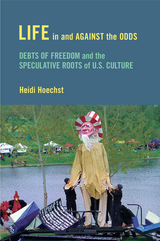 Life in and against the Odds: Debts of Freedom and the Speculative Roots of U.S. Culture
Heidi Hoechst
Temple University Press, 2015 Somehow people continue to imagine a world of justice against the odds of a deck that has been stacked against them. In her urgent and perceptive book, Life in and against the Odds, Hoechst focuses on the particular circumstances and conditions of different phases of speculative expansion in the United States. She traces the roots of the nation-state to nineteenth-century land markets and slave exchanges. Hoechst also chronicles how these racial foundations extend through corporate capitalism from the 1920s and ´30s to the present era of financialized capitalism and the recent housing bubble. Life in and against the Odds identifies where and how speculative nationalism creates roadblocks to freedom. Hoechst retells the history of the United States with a perspective on how human lives are made, destroyed, reconfigured, and claimed under the systemic violence of a nation that is rooted in the racializing futurity of speculative capitalism.
Life in Kings: Reshaping the Royal Story in the Hebrew Bible
A. Graeme Auld
SBL Press, 2017 Follow the words with an expert
Building on a lifetime of research and writing, A. Graeme Auld examines passages in Samuel, Kings, Chronicles, and Isaiah that recount the same stories or contain similar vocabulary. He advances his argument that Samuel and Kings were organic developments from a deftly crafted, prophetically interpreted, shared narrative he calls the Book of Two Houses—a work focused on the house of David and the house of Yahweh in Jerusalem. At the end of the study he reconstructs the synoptic material within Kings in Hebrew with an English translation.
Features
- aAcritique of the dominant approach to the narrative books in the Hebrew Bible
- A solid challenge to the widely accepted relationship between Deuteronomy, cultic centralization, and King Josiah’s reform
- Key evidence in the heated contemporary debate over the historical development of Biblical Hebrew
 Life in Language: Mission Feminists and the Emergence of a New Protestant Subject
Ingie Hovland
University of Chicago Press, 2025 A new anthropology of Protestant feminism, anchored by the language experiments of one Lutheran community.
The language of the Bible is a powerful lens through which many Protestants understand themselves and their world, and its prohibitions on women’s speech pose complicated challenges to women. Nevertheless, women frequently serve as vocal leaders in Protestant organizations, including the early twentieth-century Norwegian Mission Society. In Life in Language, Ingie Hovland offers a unique biography of Henny Dons, a leader of the society’s so-called mission feminists, that grapples with ways Protestant women crafted innovative, expansive self-understandings through Christian language. More than their male peers, the mission feminists turned to religious speech to express material, as well as heavenly, desires for paid work, voting rights, and more, and Hovland argues that these experiments in women speaking, reading, writing, and listening paved the way for a new way of being in the world.
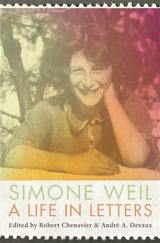 A Life in Letters
Simone Weil
Harvard University Press, 2024 The inspiring letters of philosopher, mystic, and freedom fighter Simone Weil to her family, presented for the first time in English.
Now in the pantheon of great thinkers, Simone Weil (1909–1943) lived largely in the shadows, searching for her spiritual home while bearing witness to the violence that devastated Europe twice in her brief lifetime. The letters she wrote to her parents and brother from childhood onward chart her intellectual range as well as her itinerancy and ever-shifting preoccupations, revealing the singular personality at the heart of her brilliant essays.
The first complete collection of Weil’s missives to her family, A Life in Letters offers new insight into her personal relationships and experiences. The letters abound with vivid illustrations of a life marked by wisdom as much as seeking. The daughter of a bourgeois Parisian Jewish family, Weil was a troublemaking idealist who preferred the company of miners and Russian exiles to that of her peers. An extraordinary scholar of history and politics, she ultimately found a home in Christian mysticism. Weil paired teaching with poetry and even dabbled in mathematics, as evidenced by her correspondence with her brother, André, who won the Kyoto Prize in 1994 for the famed Weil Conjectures.
A Life in Letters depicts Simone Weil’s thought taking shape amid political turmoil, as she describes her participation in the Spanish struggle against fascism and in the transatlantic resistance to the Nazis. An introduction and notes by Robert Chenavier contextualize the letters historically and intellectually, relating Weil’s letters to her general body of writing. This book is an ideal entryway into Weil’s philosophical insights, one for both neophytes and acolytes to treasure.
 A Life in Letters
Simone Weil
Harvard University Press The inspiring letters of philosopher, mystic, and freedom fighter Simone Weil to her family, presented for the first time in English.
Now in the pantheon of great thinkers, Simone Weil (1909–1943) lived largely in the shadows. Assembled here, the letters she wrote to her parents and brother from childhood onward chart her intellectual range as well as her itinerancy and shifting preoccupations, revealing the singular personality at the heart of her brilliant essays.
The daughter of a bourgeois Parisian Jewish family, Weil was a troublemaking idealist who preferred the company of miners and Russian exiles to that of her peers. A scholar of history and politics, she ultimately found a home in Christian mysticism. Weil paired teaching with poetry and even dabbled in mathematics, as evidenced by her correspondence with her brother, André, who won the Kyoto Prize in 1994 for the famed Weil Conjectures.
The first complete collection of Simone Weil’s missives to her family, A Life in Letters vividly illustrates her thought taking shape as she joins the Spanish struggle against fascism and the transatlantic resistance to the Nazis. An introduction and notes contextualize the letters historically and intellectually, providing an ideal entryway into Weil’s treasured philosophical insights.
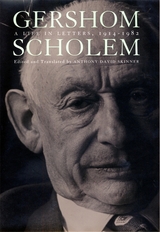 A Life in Letters, 1914–1982
Gershom Scholem
Harvard University Press, 2002 Perhaps the greatest scholar of Jewish mysticism in the twentieth century, Gershom Scholem (1897–1982) once said of himself, “I have no biography, only a bibliography.” Yet, in thousands of letters written over his lifetime, his biography does unfold, inscribing a life that epitomized the intellectual ferment and political drama of an era. This selection of the best and most representative letters—drawn from the 3000 page German edition—gives readers an intimate view of this remarkable man, from his troubled family life in Germany to his emergence as one of the leading lights of Israel during its founding and formative years.
In the letters, we witness the travails and vicissitudes of the Scholem family, a drama in which Gershom is banished by his father for his anti-kaiser Zionist sentiments; his antiwar, socialist brother is hounded and murdered; and his mother and remaining brothers are forced to emigrate. We see Scholem’s friendships with some of the most intriguing intellectuals of the twentieth century—such as Hannah Arendt, Walter Benjamin, and Theodor Adorno—blossom and, on occasion, wither. And we learn firsthand about his Zionist commitment and his scholarly career, from his move to Palestine in the 1920s to his work as Professor of Jewish Mysticism at the Hebrew University. Over the course of seven decades that comprised the most significant events of the twentieth century, these letters reveal how Scholem’s scholarship is informed by the experiences he so eloquently described.
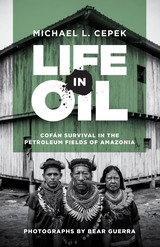 Life in Oil: Cofán Survival in the Petroleum Fields of Amazonia
By Michael L. Cepek, Photographs by Bear Guerra
University of Texas Press, 2018 Oil is one of the world’s most important commodities, but few people know how its extraction affects the residents of petroleum-producing regions. In the 1960s, the Texaco corporation discovered crude in the territory of Ecuador’s indigenous Cofán nation. Within a decade, Ecuador had become a member of OPEC, and the Cofán watched as their forests fell, their rivers ran black, and their bodies succumbed to new illnesses. In 1993, they became plaintiffs in a multibillion-dollar lawsuit that aims to compensate them for the losses they have suffered. Yet even in the midst of a tragic toxic disaster, the Cofán have refused to be destroyed. While seeking reparations for oil’s assault on their lives, they remain committed to the survival of their language, culture, and rainforest homeland. Life in Oil presents the compelling, nuanced story of how the Cofán manage to endure at the center of Ecuadorian petroleum extraction. Michael L. Cepek has lived and worked with Cofán people for more than twenty years. In this highly accessible book, he goes well beyond popular and academic accounts of their suffering to share the largely unknown stories that Cofán people themselves create—the ones they tell in their own language, in their own communities, and to one another and the few outsiders they know and trust. Their words reveal that life in oil is a form of slow, confusing violence for some of the earth’s most marginalized, yet resilient, inhabitants.
Life in Peacetime
Francesco Pecoraro
Seagull Books When Life in Peactime opens, on May 29, 2015, engineer Ivo Brandani is sixty-nine years old. He’s disillusioned and angry—but morbidly attached to life. As he makes a day-long trip home from his job in Sharm el Sheik reconstructing the coral reefs of the Red Sea using synthetics, he reflects on both the brief time he sees remaining ahead and on everything that has happened already in his life to which he can never quite resign himself. We see his slow bureaucratic trudge as a civil servant, long summer vacations on a Greek island, his twisted relationship with his first boss, the turmoil and panic attacks he faced during the student uprisings in 1968 that pushed him away from philosophy and into engineering, and his fearful childhood as a postwar evacuee.
A close-up portrait of an ordinary existence, Life in Peacetime offers a new look at the postwar era in Italy and the fundamental contradictions of a secure, middle-class life.
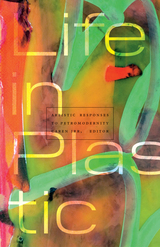 Life in Plastic: Artistic Responses to Petromodernity
Caren Irr
University of Minnesota Press, 2021 A vital contribution to environmental humanities that explores artistic responses to the plastic age
Since at least the 1960s, plastics have been a defining feature of contemporary life. They are undeniably utopian—wondrously innovative, cheap, malleable, durable, and convenient. Yet our proliferating use of plastics has also triggered catastrophic environmental consequences. Plastics are piling up in landfills, floating in oceans, and contributing to climate change and cancer clusters. They are derived from petrochemicals and enmeshed with the global oil economy, and they permeate our consumer goods and their packaging, our clothing and buildings, our bodies and minds. Plastic reshapes our cultural and social imaginaries. With impressive breadth and compelling urgency, the essays in Life in Plastic examine the arts and literature of the plastic age. Focusing mainly on post-1960s North America, the collection spans a wide variety of genres, including graphic novels, superhero comics, utopic and dystopic science fiction, poetry, and satirical prose, as well as vinyl records and visual arts. Essays by a remarkable lineup of cultural theorists interrogate how plastic—as material and concept—has affected human sensibilities and expression. The collection reveals the place of plastic in reshaping how we perceive, relate to, represent, and re-imagine bodies, senses, environment, scale, mortality, and collective well-being. Ultimately, the contributors to Life in Plastic think through plastic with an eye to imagining our way out of plastic, moving toward a postplastic future. Contributors: Crystal Bartolovich, Syracuse U; Maurizia Boscagli, U of California, Santa Barbara; Christopher Breu, Illinois State U; Loren Glass, U of Iowa; Sean Grattan, U of Kent; Nayoung Kim, Brandeis U; Jane Kuenz, U of Southern Maine; Paul Morrison, Brandeis U; W. Dana Phillips, Towson U in Maryland and Rhodes U in Grahamstown, South Africa; Margaret Ronda, UC-Davis; Lisa Swanstrom, U of Utah; Jennifer Wagner-Lawlor, Pennsylvania State U; Phillip E. Wegner, U of Florida; Daniel Worden, Rochester Institute of Technology.
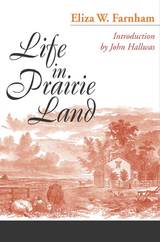 Life in Prairie Land
Eliza W. Farnham
University of Illinois Press, 1988 Combining descriptive travel writing, autobiography, and the depth of the extended essay, Life in Prairie Land--back in print in this new edition--is a classic account of everyday life in early Illinois. Eliza Farnham, a New Yorker who would become one of the leading feminists of her time, describes the nearly five years she spent living in the prairie land of Tazewell County.
Life in Prairie Land is a complex portrait of the midwestern wilderness during the 1830s--beautiful and ugly, beneficent and threatening. Farnham's vivid recreation of her experiences on the Illinois frontier offers a realistic depiction of the harsh pioneer lifestyle as well as a romantic view of an Edenic landscape.
Life in Prairie Land includes descriptions of Farnham's encounters with early settlers and Native Americans, her eye-opening experiences with birth and death, the flora and fauna that surrounded her, and the developing towns she passed through in her travels. Farnham's years on the Illinois frontier showed her the possibilities of a less restrictive society and planted the seeds that would later grow into firmly held and eloquently expressed views on women's equality.
Life in Renaissance France
Lucien Febvre
Harvard University Press, 1977 In writing about sixteenth-century France, Lucien Febvre looked for those changes in human consciousness that explain the process of civilization—the most specific and tangible examples of men’s experience, the most vivid details of their daily lives. These essays, written at the height of Febvre’s powers and sensitively edited and translated by Marian Rothstein, are the most lucid, evocative, and accessible examples of his art.
 Life in Space: Astrobiology for Everyone
Lucas John Mix
Harvard University Press, 2009 Life is a property of the universe. We may not know how it began or where else it exists, but we have come to know a great deal about how it relates to stars, planets, and the larger cosmos. In clear and compelling terms, this book shows how the emerging field of astrobiology investigates the nature of life in space. How did life begin? How common is it? Where do we fit in? These are the important questions that astrobiology seeks to answer.
A truly interdisciplinary endeavor, astrobiology looks at the evidence of astronomy, biology, physics, chemistry, and a host of other fields. A grand narrative emerges, beginning from the smallest, most common particles yet producing amazing complexity and order. Lucas Mix is a congenial guide through the depths of astrobiology, exploring how the presence of planets around other stars affects our knowledge of our own; how water, carbon, and electrons interact to form life as we know it; and how the processes of evolution and entropy act upon every living thing.
This book also reveals that our understanding and our context are deeply intertwined. It shows how much astrobiology can tell us about who we are—as a planet, as a species, and as individuals.
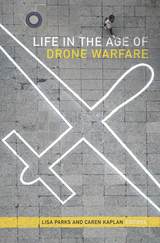 Life in the Age of Drone Warfare
Lisa Parks and Caren Kaplan, editors
Duke University Press, 2017 This volume's contributors offer a new critical language through which to explore and assess the historical, juridical, geopolitical, and cultural dimensions of drone technology and warfare. They show how drones generate particular ways of visualizing the spaces and targets of war while acting as tools to exercise state power. Essays include discussions of the legal justifications of extrajudicial killings and how US drone strikes in the Horn of Africa impact life on the ground, as well as a personal narrative of a former drone operator. The contributors also explore drone warfare in relation to sovereignty, governance, and social difference; provide accounts of the relationships between drone technologies and modes of perception and mediation; and theorize drones’ relation to biopolitics, robotics, automation, and art. Interdisciplinary and timely, Life in the Age of Drone Warfare extends the critical study of drones while expanding the public discussion of one of our era's most ubiquitous instruments of war.
Contributors. Peter Asaro, Brandon Wayne Bryant, Katherine Chandler, Jordan Crandall, Ricardo Dominguez, Derek Gregory, Inderpal Grewal, Lisa Hajjar, Caren Kaplan, Andrea Miller, Anjali Nath, Jeremy Packer, Lisa Parks, Joshua Reeves, Thomas Stubblefield, Madiha Tahir
Life in the Cold: An Introduction to Winter Ecology, fourth edition
Peter J. Marchand
University Press of New England, 2014 Peter J. Marchand’s Life in the Cold remains the one book that offers a comprehensive picture of the interactions of plants and animals—including humans—with their cold-weather environment. Focusing on the problems of “winter-active” organisms, Marchand illuminates the many challenges of sustaining life in places that demand extraordinary adaptations. The fourth edition of this classic text includes a new chapter on climate change and its effects on plants and animals wintering in the North.
 Life in the Cosmos: From Biosignatures to Technosignatures
Manasvi Lingam and Avi Loeb
Harvard University Press, 2021 A rigorous and scientific analysis of the myriad possibilities of life beyond our planet.
“Are we alone in the universe?” This tantalizing question has captivated humanity over millennia, but seldom has it been approached rigorously. Today the search for signatures of extraterrestrial life and intelligence has become a rapidly advancing scientific endeavor. Missions to Mars, Europa, and Titan seek evidence of life. Laboratory experiments have made great strides in creating synthetic life, deepening our understanding of conditions that give rise to living entities. And on the horizon are sophisticated telescopes to detect and characterize exoplanets most likely to harbor life.
Life in the Cosmos offers a thorough overview of the burgeoning field of astrobiology, including the salient methods and paradigms involved in the search for extraterrestrial life and intelligence. Manasvi Lingam and Avi Loeb tackle three areas of interest in hunting for life “out there”: first, the pathways by which life originates and evolves; second, planetary and stellar factors that affect the habitability of worlds, with an eye on the biomarkers that may reveal the presence of microbial life; and finally, the detection of technological signals that could be indicative of intelligence. Drawing on empirical data from observations and experiments, as well as the latest theoretical and computational developments, the authors make a compelling scientific case for the search for life beyond what we can currently see.
Meticulous and comprehensive, Life in the Cosmos is a master class from top researchers in astrobiology, suggesting that the answer to our age-old question is closer than ever before.
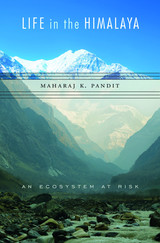 Life in the Himalaya: An Ecosystem at Risk
Maharaj K. Pandit
Harvard University Press, 2017 The collision of the Indian and Eurasian plates around fifty million years ago profoundly altered earth’s geography and regional climates. The rise of the Himalaya led to intensification of the monsoon, the birth of massive glaciers and turbulent rivers, and an efflorescence of ecosystems along the most extreme elevational gradient on Earth. When the Ice Age ended, humans became part of this mix, and today nearly one quarter of the world’s population inhabits its river basins, from Afghanistan to Myanmar. Life in the Himalaya examines the region’s geophysical and biological systems and explores the past and future of human sustainability in the mountain’s shadow.
Maharaj Pandit divides the Himalaya’s history into four phases. During the first, the mountain and its ecosystems formed. In the second, humans altered the landscape, beginning with nomadic pastoralism, continuing to commercial deforestation, and culminating in pockets of resistance to forest exploitation. The third phase saw a human population explosion, accompanied by road and dam building and other large-scale infrastructure that degraded ecosystems and caused species extinctions. Pandit outlines a future networking phase which holds the promise of sustainable living within the mountain’s carrying capacity.
Today, the Himalaya is threatened by recurrent natural disasters and is at risk of catastrophic loss of life. If humans are to have a sustainable future there, Pandit argues, they will need to better understand the region’s geological vulnerability, ecological fragility, and sociocultural sensitivity. Life in the Himalaya outlines the mountain’s past in order to map a way forward.
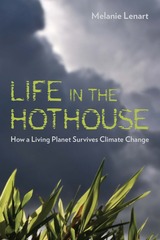 Life in the Hothouse: How a Living Planet Survives Climate Change
Melanie Lenart
University of Arizona Press, 2010 In this insightful, compelling, and highly readable work, Melanie Lenart, an award-winning journalist and science writer who holds a PhD in Natural Resources and Global Change, examines global warming with the trained eye of a professional scientist. And she presents the science in a clear, straightforward manner. Why does the planet’s warming produce stronger hurricanes, rising seas, and larger floods? Simple, says Lenart. The Earth is just doing what comes naturally. Just as humans produce sweat to cool off on a hot day, the planet produces hurricanes, floods, wetlands, and forests to cool itself off.
Life in the Hothouse incorporates Lenart’s extensive knowledge of climate science—including the latest research in climate change—and the most current scientific theories, including Gaia theory, which holds that the Earth has some degree of climate control “built in.” As Lenart points out, scientists have been documenting stronger hurricanes and larger floods for many years. There is a good reason for this, she notes. Hurricanes help cool the ocean surface and clear the air of carbon dioxide, the main greenhouse gas responsible for global warming. From the perspective of Gaia theory, these responses are helping to slow the ongoing global warming and Lenart expounds upon this in a clear and understandable fashion.
There is hope, Lenart writes. If we help sustain Earth's natural defense systems, including wetlands and forests, perhaps Mother Earth will no longer need to rely as much on the cooling effects of what we call "natural disasters"—many of which carry a human fingerprint. At a minimum, she argues, these systems can help us survive the heat.
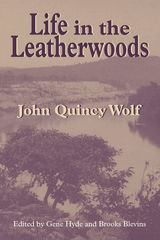 Life in the Leatherwoods: New Edition
John Quincy Wolf
University of Arkansas Press, 2000 Life in the Leatherwoods is one of the country's most delightful childhood memoirs, penned by an Ozark native with a keen, observant eye and a gift for narrative. John Quincy Wolf's relaxed style and colorful characters resemble those of another chronicler of nineteenth-century rural life, Laura Ingalls Wilder. Wolf's acerbic wit and lucid prose infuse the White River pioneers of his story with such life that the reader participates vicariously in their log rollings, house-raisings, spelling bees, hog killings, soap making, country dances, and camp meetings. Originally published by Memphis State University Press in 1974, this new edition includes additional writings of John Q. Wolf and a continuation of the autobiographical narrative after his 1887 move to Batesville. Wolf's writings are valuable resources for southern historians, folklorists, general readers, and scholars of Ozarkiana because they provide a rare glimpse into the social and family life of a largely misunderstood and stereotyped people—the independent hill farmers of the Arkansas Ozarks of the 1870s and 1880s. With Life in the Leatherwoods, Wolf bestows a benediction upon a society that existed vibrantly and humorously in his memory—one that has now forever disappeared from the American countryside.
Originally published by Memphis State University Press in 1974, this new edition includes additional writings of John Q. Wolf and a continuation of the autobiographical narrative after his 1887 move to Batesville. Wolf’s writings are valuable resources for southern historians, folklorists, general readers, and scholars of Ozarkiana because they provide a rare glimpse into the social and family life of a largely misunderstood and stereotyped people—the independent hill farmers of the Arkansas Ozarks of the 1870s and 1880s. With Life in the Leatherwoods, Wolf bestows a benediction upon a society that existed vibrantly and humorously in his memory—one that has now forever disappeared from the American countryside.
Life in the Shadows of the Crystal Palace, 1910–1927: Ford Workers in the Model T Era
Clarence Hooker
University of Wisconsin Press, 1997 This book shows how Ford's first large automotive plant—the Crystal Palace—transformed the sleepy village of Highland Park, Michigan, into an industrial boomtown that later became an urban ghetto, and the first American city whose life and well-being depended entirely upon the employment and production policies of the automotive industry.
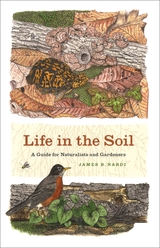 Life in the Soil: A Guide for Naturalists and Gardeners
James B. Nardi
University of Chicago Press, 2007 Leonardo da Vinci once mused that “we know more about the movement of celestial bodies than about the soil underfoot,” an observation that is as apt today as it was five hundred years ago. The biological world under our toes is often unexplored and unappreciated, yet it teems with life. In one square meter of earth, there lives trillions of bacteria, millions of nematodes, hundreds of thousands of mites, thousands of insects and worms, and hundreds of snails and slugs. But because of their location and size, many of these creatures are as unfamiliar and bizarre to us as anything found at the bottom of the ocean.
Lavishly illustrated with nearly three hundred color illustrations and masterfully-rendered black and white drawings throughout, Life in the Soil invites naturalists and gardeners alike to dig in and discover the diverse community of creatures living in the dirt below us. Biologist and acclaimed natural history artist James B. Nardibegins with an introduction to soil ecosystems, revealing the unseen labors of underground organisms maintaining the rich fertility of the earth as they recycle nutrients between the living and mineral worlds. He then introduces readers to a dazzling array of creatures: wolf spiders with glowing red eyes, snails with 120 rows of teeth, and 10,000-year-old fungi, among others. Organized by taxon, Life in the Soil covers everything from slime molds and roundworms to woodlice and dung beetles, as well as vertebrates from salamanders to shrews. The book ultimately explores the crucial role of soil ecosystems in conserving the worlds above and below ground.
A unique and illustrative introduction to the many unheralded creatures that inhabit our soils and shape our environment aboveground, Life in the Soil will inform and enrich the naturalist in all of us.
 Life in the Spirit: Trinitarian Grammar and Pneumatic Community in Hegel and Augustine
Douglas Finn
University of Notre Dame Press, 2016 Since the nineteenth century, many philosophical and theological commentators have sought to trace lines of continuity between the Trinitarian thought of Augustine of Hippo (354–430) and G. W. F. Hegel (1770–1831). Many contemporary Christian theologians have also criticized Augustine's Trinitarian theology generally and his doctrine of the Holy Spirit more specifically through this historical lens. At the same time, Hegelian Trinitarian conceptual dynamics have come to exert a strong influence over contemporary Trinitarian theology.
In Life in the Spirit, Douglas Finn seeks to redress several imbalances with respect to Augustine, imbalances that have one of their hermeneutic causes in a Hegelian-influenced theological tradition. Finn argues that common readings of Augustine focus too much on his De Trinitate, books 8–15, betraying a modern—and to some extent Hegelian—prejudice against considering sermons and biblical commentaries serious theological work. This broadening of Augustinian texts allows Finn to critique readings of Augustine that, on the one hand, narrow his Trinitarian theology to the so-called psychological analogy and thus chart him on a path to Descartes and Hegel, or, on the other hand, suggest he sacrifices a theology of the Trinitarian persons on the altar of divine substance. Augustine's Trinitarian theology on Finn's reading is one fully engaged with God's work in history.
With this renewed understanding of Augustine's Trinitarianism, Finn allows Augustine to interrogate Hegel with his concerns rather than only the other way around. In this ambitious study, Finn shows that Hegel's rendition of Christianity systematically obviates whole swaths of Christian prayer and practice. He does this nonpolemically, carefully, and with meticulous attention to the texts of both great thinkers.
A Life In The Struggle: Ivory Perry and the Culture of Opposition
George Lipsitz
Temple University Press, 1995 This book tells the story of Ivory Perry, a black worker and community activist who, for more than thirty years, has distributed the leaflets, carried the picket signs, and planned and participated in the confrontations that were essential to the success of protest movements. Using oral histories and extensive archival research, George Lipsitz examines the culture of opposition through the events of Perry’s life of commitment and illumines the social and political changes and conflicts that have convulsed the United States during the past fifty years.
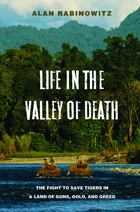 Life in the Valley of Death: The Fight to Save Tigers in a Land of Guns, Gold, and Greed
Alan Rabinowitz
Island Press, 2010 Dubbed the Indiana Jones of wildlife science by The New York Times, Alan Rabinowitz has devoted—and risked—his life to protect nature’s great endangered mammals. He has journeyed to the remote corners of the earth in search of wild things, weathering treacherous terrain, plane crashes, and hostile governments. Life in the Valley of Death recounts his most ambitious and dangerous adventure yet: the creation of the world’s largest tiger preserve.
The tale is set in the lush Hukaung Valley of Myanmar, formerly known as Burma. An escape route for refugees fleeing the Japanese army during World War II, this rugged stretch of land claimed the lives of thousands of children, women, and soldiers. Today it is home to one of the largest tiger populations outside of India—a population threatened by rampant poaching and the recent encroachment of gold prospectors.
To save the remaining tigers, Rabinowitz must navigate not only an unforgiving landscape, but the tangled web of politics in Myanmar. Faced with a military dictatorship, an insurgent army, tribes once infamous for taking the heads of their enemies, and villagers living on less than one U.S. dollar per day, the scientist and adventurer most comfortable with animals is thrust into a diplomatic minefield. As he works to balance the interests of disparate factions and endangered wildlife, his own life is threatened by an incurable disease.
The resulting story is one of destruction and loss, but also renewal. In forests reviled as the valley of death, Rabinowitz finds new life for himself, for communities haunted by poverty and violence, and for the tigers he vowed to protect.
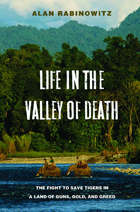 Life in the Valley of Death: The Fight to Save Tigers in a Land of Guns, Gold, and Greed
Alan Rabinowitz
Island Press, 2008 Dubbed the Indiana Jones of wildlife science by The New York Times, Alan Rabinowitz has devoted—and risked—his life to protect nature’s great endangered mammals. He has journeyed to the remote corners of the earth in search of wild things, weathering treacherous terrain, plane crashes, and hostile governments. Life in the Valley of Death recounts his most ambitious and dangerous adventure yet: the creation of the world’s largest tiger preserve.
The tale is set in the lush Hukaung Valley of Myanmar, formerly known as Burma. An escape route for refugees fleeing the Japanese army during World War II, this rugged stretch of land claimed the lives of thousands of children, women, and soldiers. Today it is home to one of the largest tiger populations outside of India—a population threatened by rampant poaching and the recent encroachment of gold prospectors.
To save the remaining tigers, Rabinowitz must navigate not only an unforgiving landscape, but the tangled web of politics in Myanmar. Faced with a military dictatorship, an insurgent army, tribes once infamous for taking the heads of their enemies, and villagers living on less than one U.S. dollar per day, the scientist and adventurer most comfortable with animals is thrust into a diplomatic minefield. As he works to balance the interests of disparate factions and endangered wildlife, his own life is threatened by an incurable disease.
The resulting story is one of destruction and loss, but also renewal. In forests reviled as the valley of death, Rabinowitz finds new life for himself, for communities haunted by poverty and violence, and for the tigers he vowed to protect.
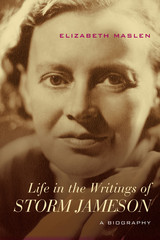 Life in the Writings of Storm Jameson: A Biography
Elizabeth Maslen
Northwestern University Press, 2014 Margaret Storm Jameson (1891–1986) is primarily known as a compelling essayist; her stature as a novelist and champion of the dispossessed is largely forgotten. In Life in the Writings of Storm Jameson, Elizabeth Maslen reveals a figure who held her own beside fellow British women writers, including Virginia Woolf; anticipated the Angry Young Women, such as Doris Lessing; and was an early champion of such European writers as Arthur Koestler and Czesław Miłosz. Jameson was a complex character whose politics were grounded in social justice; she was passionately antifascist—her novel In the Second Year (1936) raised the alarm about Nazism—but always wary of communism. An eloquent polemicist, Jameson was, as president of the British P.E.N. during the 1930s and 1940s, of invaluable assistance to refugee writers. Elizabeth Maslen’s biography introduces a true twentieth century hedgehog, whose essays and subtly experimental fiction were admired in Europe and the States.
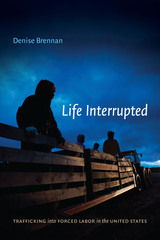 Life Interrupted: Trafficking into Forced Labor in the United States
Denise Brennan
Duke University Press, 2014 Life Interrupted introduces us to survivors of human trafficking who are struggling to get by and make homes for themselves in the United States. Having spent nearly a decade following the lives of formerly trafficked men and women, Denise Brennan recounts in close detail their flight from their abusers and their courageous efforts to rebuild their lives. At once scholarly and accessible, her book links these firsthand accounts to global economic inequities and under-regulated and unprotected workplaces that routinely exploit migrant laborers in the United States. Brennan contends that today's punitive immigration policies undermine efforts to fight trafficking. While many believe trafficking happens only in the sex trade, Brennan shows that across low-wage labor sectors—in fields, in factories, and on construction sites—widespread exploitation can lead to and conceal forced labor. Life Interrupted is a riveting account of life in and after trafficking and a forceful call for meaningful immigration and labor reform.
All royalties from this book will be donated to the nonprofit Survivor Leadership Training Fund administered through the Freedom Network.
Life is Good
Alex Capus
Haus Publishing, 2018 Max has been married to Tina for twenty-five years. She is the love of his life, but now he must come to terms with the fact that she is to spend a year away on a work assignment—away, for the first time, from their home, their children and their life together. Her absence leaves him feeling like an Odysseus in reverse: he stays put whilehis Penelope goes out into the world.
Max, alone with his three teenage sons for the first time, is left contemplating life and the daily routine of the little bar of which he is the proprietor. As he spends more time with the regulars their problems begin to become his own. This new novel by Alex Capus is a hymn to trust, friendship and life’s small pleasures. Told with his trademark humor, Life is Good is a novel about finding contentment in rootedness as the world speeds up.
Life Is Not Complete Without Shopping: Consumption Culture in Singapore
Beng Huat Chua
National University of Singapore Press, 2013 One of the cliches that Singaporeans hold most dear is that their lives are a pursuit of the five c's: cash, cars, condominiums, credit cards, and club memberships. Over the last thirty years, Singaporeans have become accustomed to ever-increasing levels
 Life is War: Surviving Dictatorship in Communist Albania
Shannon Woodcock
Intellect Books, 2016 The book reveals how everyday people survived political persecution and oppression, and champions human resilience in the face of unrelenting political terror.
In Life in War, the reader accompanies Shannon Woodcock, the author and historian, through intimate interviews with six Albanian men and women. We hear how everyday people survived shocking living conditions, political persecution and oppression dependent on ethnicity, political status, gender and sexuality.
This is a thorough and vivid history of lived communism in Albania, charting political and ideological shifts through the experiences of those who survived. Life is War stands as remarkable and profound testimony to the resilience of humanity in the face of unrelenting political terror.
An accurate and precise historical work, engagingly rendered from life narratives, it plunges the reader into the difficult emotional truths that are at the core of remembering Albania’s communist past.
Life is War is a valuable contribution to studies of everyday life under communism and dictatorship. Eloquently written and expertly researched, it will appeal to readers interested in life histories, war, communism, European history and trauma studies.
 Life Is What Happens While You Make Other Plans
A Memoir by Jerry Kolins
Michigan Publishing, 2021 Jerry’s zest for life and breadth of experiences, combined with an idiosyncratic sense of humor, have yielded this collection of entertaining, insightful, and heartwarming essays. Life Is What Happens While You Make Other Plans is a must-read for anyone interested in getting a glimpse of life through the spectacles of a modern-day Renaissance man. —DAVID LEE, MD, emergency department physician, Palomar Health
Dr. Jerry Kolins—pathologist, hospital administrator, scuba diver, fine wine collector, Wolverine football fanatic, and bow tie aficionado—has now shown what he can do as a writer. Life Is What Happens While You Make Other Plans is a collection of essays that are poignant, funny, and sincere. —JOHN CANNON, retired, editor at the San Diego Union-Tribune for twenty-seven years; Pulitzer Prize nominee; and graduate of Loyola University Chicago
Jerry couldn’t make it physically through one day of football practice, but his passion and obsession with Michigan football are truly sincere to those of us who played the game. —BRAYLON EDWARDS, Fred Biletnikoff Award winner (2004), NFL Pro Bowl (2007), and author of Doing It My Way: My Outspoken Life as a Michigan Wolverine, NFL Receiver, and Beyond
Jerry’s vibrant personality comes across through his engaging prose, the relatively concise themed segments, and his ability and willingness to tackle a wide range of topics, even extremely painful and personal ones, head-on. That’s rather brave of him, and it adds significantly to the authenticity of his voice. —DIARMAID Ó FOIGHIL, professor and curator, Department of Ecology and Evolutionary Biology, University of Michigan
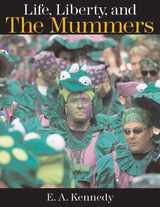 Life, Liberty, and the Mummers
Ed Kennedy
Temple University Press, 2007 The Mummers Parade is like no other parade in the world. With 10,00 wildly-costumed participants stepping out every New Year's Day in South Philadelphia, it is one of the most spectacular annual parades in the U.S. This remarkable book is a "family portrait" of the parade. It presents, in pictures and in words, the flamboyantly-attired Mummers and reveals the everyday, working-class people beneath the outrageous garb.
Noted photographer E. A. Kennedy spent four years documenting the Mummers and their parade. He has personally selected the striking images included here -- more than 150 in all -- and he has written an engaging history of the parade itself. As Kennedy explains, and as his photos make clear, "mummery" is a way of life for Mummers, who have deep attachments to their clubs, associations, and brigades.
For all its glitz, the Mummers Parade remains a folk parade. This is the captivating story of the folks behind the parade.
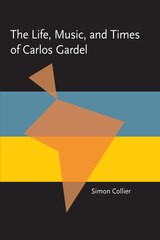 The Life, Music, and Times of Carlos Gardel
Simon Collier
University of Pittsburgh Press, 1986 In the first biography in English of the great Argentinian tango singer Carlos Gardel (1890-1935), Collier traces his rise from very modest beginnings to become the first genuine “superstar” of twentieth-century Latin America. In his late teens, Gardel won local fame in the barrios of Buenos Aires singing in cafes and political clubs. By the 1920s, after he switched to tango singing, the songs he wrote and sang enjoyed instant popularity and have become classics of the genre. He began making movies in the 1930s, quickly establishing himself as the most popular star of the Spanish-language cinema, and at the time of his death Paramount was planning to launch his Hollywood career.
Collier's biography focuses on Gardel's artistic career and achievements but also sets his life story within the context of the tango tradition, of early twentieth-century Argentina, and of the history of popular entertainment.
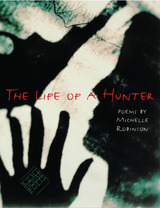 The Life of a Hunter
Michelle Robinson
University of Iowa Press, 2005 Part detective novel, part cinematic saga, part street-smart narrative, the poems in The Life of a Hunter form a document of expedition that couples individual discovery with communal transformation. Michelle Robinson's characters are consigned to particular mechanisms of survival to various forms of physical and psychological evolutions--as a reaction to their search for an acceptable spiritual condition. The multiple identities of her pressured characters are susceptible to physical transformations that provide “a brief jolt of anesthesia, / instead of the cold tenderness of interruption.” Robinson uses the culture of film and fiction as an analogy for the world just out of reach and the world already at hand; preoccupied with what precision “sounds like,” the figures in her poems respond to the possibility of future change as well as the fact that change is a constant in their lives. “Don't misunderstand. It was the most cynical year of our era / and anything would have been better than to have been asked / to find something beautiful.” Robinson's is a strong young voice, detached and observant yet disturbingly present.
The Life of a Leaf
Steven Vogel
University of Chicago Press, 2012 In its essence, science is a way of looking at and thinking about the world. In The Life of a Leaf, Steven Vogel illuminates this approach, using the humble leaf as a model. Whether plant or person, every organism must contend with its immediate physical environment, a world that both limits what organisms can do and offers innumerable opportunities for evolving fascinating ways of challenging those limits. Here, Vogel explains these interactions, examining through the example of the leaf the extraordinary designs that enable life to adapt to its physical world.
In Vogel’s account, the leaf serves as a biological everyman, an ordinary and ubiquitous living thing that nonetheless speaks volumes about our environment as well as its own. Thus in exploring the leaf’s world, Vogel simultaneously explores our own.
Life of a Poet: Rainer Maria Rilke
Ralph Freedman
Northwestern University Press, 1998 In this highly praised and extraordinary biography, Ralph Freedman traces Rilke's luminous career by weaving together detailed accounts of pivotal and formative episodes from the poet's restless life with a close, intimate reading of the verse and prose that refract them. This lively and engrossing biography offers much of interest to Rilke's growing body of followers.
The Life of a Simple Man
Emile Guillaumin
University Press of New England, 1982 In order to “show the gents of Moulins, of Paris and elsewhere, just what a sharecropper’s life is like,” Emile Guillaumin, under the guise of fiction, wrote this story of “Tiennon,” a French peasant born fifty years before him in 1823. A peasant himself, Guillaumin was unique in that, after a few years of schooling, he continued to work his small farm in central France to the end of his life, reserving nights for study and writing. Guillaumin felt that the French peasant had been misrepresented in contemporary literature--either romanticized as in George Sand or depicted as a dumb victim of the forces of nature as in Zola--and wanted to correct the picture. The result is a moving first-person story that can be read as a fictional account, as well as the best kind of material for historians seeking to understand how nineteenth-century French peasants really lived.
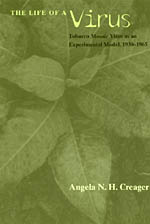 The Life of a Virus: Tobacco Mosaic Virus as an Experimental Model, 1930-1965
Angela N. H. Creager
University of Chicago Press, 2001 We normally think of viruses in terms of the devastating diseases they cause, from smallpox to AIDS. But in The Life of a Virus, Angela N. H. Creager introduces us to a plant virus that has taught us much of what we know about all viruses, including the lethal ones, and that also played a crucial role in the development of molecular biology.
Focusing on the tobacco mosaic virus (TMV) research conducted in Nobel laureate Wendell Stanley's lab, Creager argues that TMV served as a model system for virology and molecular biology, much as the fruit fly and laboratory mouse have for genetics and cancer research. She examines how the experimental techniques and instruments Stanley and his colleagues developed for studying TMV were generalized not just to other labs working on TMV, but also to research on other diseases such as poliomyelitis and influenza and to studies of genes and cell organelles. The great success of research on TMV also helped justify increased spending on biomedical research in the postwar years (partly through the National Foundation for Infantile Paralysis's March of Dimes)—a funding priority that has continued to this day.
The Life of Adam and Eve in Greek: A Critical Edition
Johannes Tromp
SBL Press, 2016 A Brill classic now in paperback from SBL Press
This critical edition of the Life of Adam and Eve in Greek is based on all available manuscripts. In the introduction the history of previous research is summarized, and the extant manuscripts are presented. Next comes a description of the grammatical characteristics of the manuscripts’ texts, followed by a detailed study of the genealogical relationships between them, resulting in a reconstruction of the writing’s history of transmission in Greek. On the basis of all this information, the Greek text of the Life of Adam and Eve in its earliest attainable stage, is established.
Features:
- Illustrations of textual relationships and variants
- Indices for subjects, passages, words in the text, variants, and additions and revisions
Full critical apparatus with relevant evidence from the manuscripts
Life of Aesop the Philosopher
Grammatiki A. Karla
SBL Press, 2024 The Life of Aesop the Philosopher, an anonymous Greek literary work, presents one version of the novelistic biography of Aesop, which dates to the fourth to fifth century CE. In this volume, Grammatiki A. Karla offers an extended introduction to the Life of Aesop in general, the history of the textual tradition, and the MORN manuscript family and its relationship to other versions and papyrus fragments. She then presents a new edition of the late antique version (MORN) alongside David Konstan’s English translation. A commentary addresses editorial choices and focuses on words and phrases that are of interest for the history of the Greek language.
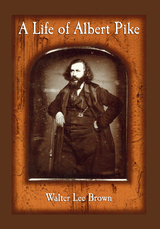 A Life of Albert Pike
Walter Lee Brown
University of Arkansas Press, 1997 A Life of Albert Pike, originally published in 1997, is as much a study of antebellum Arkansas as it is a portrait of the former general. A native of Massachusetts, Pike settled in Arkansas Territory in 1832 after wandering the Great Plains of Texas and New Mexico for two years. In Arkansas he became a schoolteacher, newspaperman, lawyer, Whig leader, poet, Freemason, and Confederate general who championed secession and fought against Black suffrage. During his tenure as Sovereign Grand Commander of the Scottish Rite—a position he held for more than thirty years beginning in 1859—Pike popularized the Masonic movement in the American South and Far West. In the wake of the Civil War, Pike left Arkansas, ultimately settling in Washington, D.C., where he lived out his last years in the Mason's House of the Temple.
Drawing on original documents, Pike’s copious writings, and interviews with Pike’s descendants, Walter Lee Brown presents a fascinating personal history that also serves as a rich compendium of Arkansas’s antebellum history.
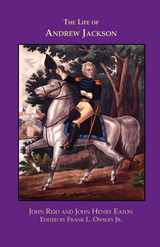 The Life of Andrew Jackson
John Reid
University of Alabama Press, 2007 Original copies of the first, 1817, edition of this work are so rare that even the Library of Congress does not have an undamaged copy. Consequently scholars and students of Jackson have had to rely on later, incomplete or bowdlerized editions. It is therefore all the more valuable to have Owsley’s critical restoration of the original edition, complete with its useful maps. The work is a straightforward history of Jackson’s military career, begun by John Reid, Jackson’s military aide throughout the War of 1812 and the ensuing Creek War. Reid wrote the first four chapters, and after his death John Eaton completed the work from Reid’s outline, notes, and papers. Owsley, quondam professor of history at Auburn University, has carefully restored the original edition, noted variants between this and successor editions, and included helpful apparatus, including a memoir of John Reid by Helen Reid Roberts, and indexes to the whole. This is the first paperback edition of this valuable record and includes the original four large-scale foldout maps on an accompanying CD.
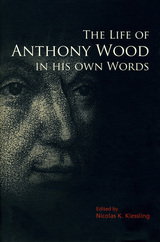 The Life of Anthony Wood in His Own Words
Edited by Nicolas K. Kiessling
Bodleian Library Publishing, 2009 Anthony Wood (1632–95) was an English historian and antiquary best known for his books on the history and antiquities of the University of Oxford as well as Athenae Oxonienses: an Exact History of all the Writers and Bishops who have had their Education in the University of Oxford from 1500 to 1690. Some of the revelations in Athenae Oxonienses were considered scandalous at the time, and a copy of the manuscript was famously burned in protest in front of the Bodleian Library in 1693. Wood’s autobiography reflects his life-long devotion to historiography, and consequently it paints a lively picture of many well known figures in seventeenth century England. Wood made more contributions to biography, bibliography, and the history of the University and city of Oxford than any other writer before that time. As a result, The Autobiography of Anthony Wood is brimming with information of all kinds, from famous people—including Christopher Wren, John Locke, the physician John Lower, the defiant Catholic Ralph Sheldon, the mathematician John Wallis, and a host of Oxford heads of colleges, vice-chancellors and chancellors—to descriptions of significant events—such as skirmishes between parliamentarian and royalist forces in the 1640s, the atmosphere of Oxford during the parliamentarian occupation, the return of King Charles II in 1660, and the anti-Catholic movement of the 1670s. Based directly upon original sources, this critical edition of Wood’s autobiography offers an entertaining and revealing look at one of the most interesting and turbulent periods in Oxford’s past.
 The Life of Apollonius of Tyana, Volume I: Books 1-5
Philostratus
Harvard University Press THIS EDITION HAS BEEN REPLACED BY A NEWER EDITION.
Novel and biography are joined in this literary work with a historical core. Philostratus' life of the first century mystic from Tyana was written at the request of the empress Julia Domna. It portrays a man with supernatural powers, a Pythagorean who predicts the future, cures the sick, raises the dead, and himself prevails over death, ascending to heaven and later appearing to disciples to prove his immortality. The account has a rich and varied setting: Apollonius' ministering carries him throughout the eastern Mediterranean world, as far south as Ethiopia, and eastward to India. Philostratus' Life of Apollonius was long viewed by Christians as a dangerous attempt to set up a Christ-like rival.
This two-volume edition of the Life of Apollonius of Tyana includes, in the second volume, a collection of Apollonius' letters and a treatise by the Christian bishop and historian Eusebius attacking Apollonius as a charlatan.
Also available by Philostratus 'the Athenian' in the Loeb Classical Library is his Lives of the Sophists, a treasury of information about notable sophists that yields a good picture of the predominant influence of Sophistic in the educational, social, and political life of the Empire in the 2nd and 3rd centuries.
 The Life of Apollonius of Tyana, Volume II: Books 6-8. Epistles of Apollonius. Eusebius: Treatise
Philostratus and Eusebius
Harvard University Press THIS EDITION HAS BEEN REPLACED BY A NEWER EDITION.
Novel and biography are joined in this literary work with a historical core. Philostratus' life of the first century mystic from Tyana was written at the request of the empress Julia Domna. It portrays a man with supernatural powers, a Pythagorean who predicts the future, cures the sick, raises the dead, and himself prevails over death, ascending to heaven and later appearing to disciples to prove his immortality. The account has a rich and varied setting: Apollonius' ministering carries him throughout the eastern Mediterranean world, as far south as Ethiopia, and eastward to India. Philostratus' Life of Apollonius was long viewed by Christians as a dangerous attempt to set up a Christ-like rival.
This two-volume edition of the Life of Apollonius of Tyana includes, in the second volume, a collection of Apollonius' letters and a treatise by the Christian bishop and historian Eusebius attacking Apollonius as a charlatan.
Also available by Philostratus 'the Athenian' in the Loeb Classical Library is his Lives of the Sophists, a treasury of information about notable sophists that yields a good picture of the predominant influence of Sophistic in the educational, social, and political life of the Empire in the 2nd and 3rd centuries.
The Life of Arseniev: Youth
Ivan Bunin
Northwestern University Press, 1994 Ivan Bunin was the first Russian writer of the twentieth century to be award the Nobel Prize in literature. Like many other Russian writers, he emigrated after the Revolution and never returned to his homeland; The Life of Arseniev is the major work of his émigré period.
In ways similar to Nabokov's Speak, Memory, Bunin's novel powerfully evokes the atmosphere of Russia in the decades before the Revolution and illuminates those Russian literary and cultural traditions eradicated in the Soviet era. This first full English-language edition updates earlier translations, taking as its source the version Bunin revised in 1952, and including an introduction and annotations by Andrew Baruch Wachtel.
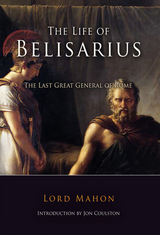 The Life of Belisarius: The Last Great General of Rome
Lord Mahon
Westholme Publishing, 2005 The Man Who Recaptured the Lost Glory of Rome
Serving the Byzantine Emperor Justinian during the 6th century A.D., Belisarius defeated a superior Persian force that threatened to extinguish Constantinople; his small army next drove the Vandals out of the ancient Roman provinces of North Africa and forced the Visigoths to retreat from Italy, returning Rome to the Emperor for the final time. His ability to achieve victory against overwhelming odds and his fairness to both his own troops and those of his enemies became legendary. Despite his successes, Justinian recalled Belisarius and, swayed by jealous advisers, accused the general of conspiring to overthrow him. Although innocent, he was publicly humiliated and stripped of his rank. But when a massive army of barbarians moved against Constantinople and the citizenry panicked in fear, they turned to their only true hero, Belisarius. The forsaken general donned his armor, called out his trusted veterans, and repulsed the barbarian horde. But instead of showing gratitude, Justinian banished him from the city. Considered among the greatest generals of all time and studied later for his innovative battle tactics and unconventional strategy, Belisarius is credited with reclaiming the lost glory of Rome and helping to preserve Constantinople, whose influence would continue for centuries. Lord Mahon's biography, the first scholarly history of this remarkable figure, combines the adventure of a great epic novel with the engrossing story of a man who, despite injustices, remained loyal to the end. Edited and introduced by historian Jon C. N. Coulston, this new and retypeset edition, the first in more than 100 years, will allow the modern reader to discover one of history's most intriguing figures.
The Life of Blessed Bernard of Tiron
Geoffrey Grossus
Catholic University of America Press, 2009 The first English translation of the Vita Bernardi, this book makes accessible to medieval and religious historians one of the more interesting and lively stories of the twelfth century.
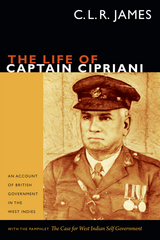 The Life of Captain Cipriani: An Account of British Government in the West Indies, with the pamphlet The Case for West-Indian Self Government
C. L. R. James
Duke University Press, 2014 The Life of Captain Cipriani (1932) is the earliest full-length work of nonfiction by the Trinidadian writer C. L. R. James, one of the most significant historians and Marxist theorists of the twentieth century. It is partly based on James's interviews with Arthur Andrew Cipriani (1875–1945). As a captain with the British West Indies Regiment during the First World War, Cipriani was greatly impressed by the service of black West Indian troops and appalled at their treatment during and after the war. After his return to the West Indies, he became a Trinidadian political leader and advocate for West Indian self-government. James's book is as much polemic as biography. Written in Trinidad and published in England, it is an early and powerful statement of West Indian nationalism. An excerpt, The Case for West-Indian Self Government, was issued by Leonard and Virginia Woolf's Hogarth Press in 1933. This volume includes the biography, the pamphlet, and a new introduction in which Bridget Brereton considers both texts and the young C. L. R. James in relation to Trinidadian and West Indian intellectual and social history. She discusses how James came to write his biography of Cipriani, how the book was received in the West Indies and Trinidad, and how, throughout his career, James would use biography to explore the dynamics of politics and history.
The Life of Charlemagne
Einhard
University of Michigan Press, 1960 A vivid life of Charlemagne, written ca A.D. 830 by a member of his court
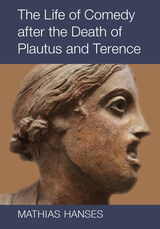 The Life of Comedy after the Death of Plautus and Terence
Mathias Hanses
University of Michigan Press, 2020 The Life of Comedy after the Death of Plautus and Terence documents the ongoing popularity of Roman comedies, and shows that they continued to be performed in the late Republic and early Imperial periods of Rome. Playwrights Plautus and Terence impressed audiences with stock characters as the young-man-in-love, the trickster slave, the greedy pimp, the prostitute, and many others. A wide range of spectators visited Roman theaters, including even the most privileged members of Roman society: orators like Cicero, satirists like Horace and Juvenal, and love poets like Catullus and Ovid. They all put comedy’s varied characters to new and creative uses in their own works, as they tried to make sense of their own lives and those of the people around them by suggesting comparisons to the standard personality types of Roman comedy.
Scholars have commonly believed that the plays fell out of favor with theatrical audiences by the end of the first century BCE, but The Life of Comedy demonstrates that performances of these comedies continued at least until the turn of the second century CE. Mathias Hanses traces the plays’ reception in Latin literature from the late first century BCE to the early second century CE, and shines a bright light on the relationships between comic texts and the works of contemporary and later Latin writers.
 A Life of Control: Stories of Living with Diabetes
Alan L. Graber
Vanderbilt University Press, 2010 Diabetes happens in a life that already has a story. This book, composed of nearly forty personal narratives, based on taped interviews, about the lives of actual patients with diabetes, draws upon the collective experience of an endocrinologist and two nurse practitioners who worked together for twenty-five years.
The people who describe their experiences with diabetes range from teenagers to physicians, immigrants, athletes, pregnant women, accountants, a prisoner, and a dairy farmer. They speak of the variety of ways they handle monitoring, diet, insurance coverage, sports, and fashion. Some talk of how they manage to drive trucks for a living or, for recreation, fly airplanes or go spelunking. Many speak frankly of their anxieties and frustrations.
The authors acknowledge that both the patient and clinician have a story about their relationship, and describe the richness and tension in their interaction. Families, too, are sources of both support and conflict. These relationships are acknowledged in the organization of the book, which is divided into sections defined by the main elements of diabetes control: patient self-determination, the role of the family, the social situation, and the patient-clinician encounter.
The book provides a wealth of information about diabetes, including material on prevention, complications, and new technology, as well as a superb glossary, but it is not intended as a textbook on diabetes or as a self-care manual for patients. Rather the book provides a textured account of the health professional's view of diabetes control and the perspective of the patient whose life is complicated by diabetes.
The Life of Emily Dickinson
Richard B. Sewall
Harvard University Press, 1994 Winner of the National Book Award, this massively detailed biography throws a light into the study of the brilliant poet. How did Emily Dickinson, from the small window over her desk, come to see a life that included the horror, exaltation and humor that lives her poetry? With abundance and impartiality, Richard B. Sewall shows us not just the poet nor the poetry, but the woman and her life.
Life of Giovanni Pico della Mirandola. Oration
Giovanni Pico della Mirandola
Harvard University Press, 2022 The Oration by philosopher Giovanni Pico della Mirandola (1463–1494), to which later editors added the subtitle On the Dignity of Man, is the most famous text written in Italy at the height of the Renaissance. The Life of Giovanni by Gianfrancesco Pico, his nephew, is the only contemporary account of the philosopher’s brief and astonishing career—Giovanni, who challenged anyone to debate him on nine hundred theses in Rome, whose writings made him a heretic by papal declaration, died at the age of thirty-one. Together, these works record Giovanni’s invention of Christian Kabbalah, his search for the ancient theology of Orpheus and Zoroaster, and his effort to reconcile all the warring schools of philosophy in universal concord. In this new translation, the two texts are presented with ample explanatory notes that transform our understanding of these fascinating thinkers.
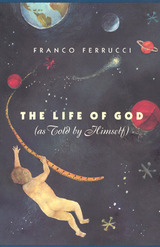 The Life of God (as Told by Himself)
Franco Ferrucci
University of Chicago Press, 1996 At the center of Franco Ferrucci's inspired novel is a tender, troubled God. In the beginning is God's solitude, and because God is lonely he creates the world. He falls in love with earth, plunges into the oceans, lives as plant and reptile and bird. His every thought and mood serve to populate the planet, with consequences that run away from him—sometimes delightfully, sometimes unfortunately.
When a new arrival emerges from the apes, God believes he has finally found the companion he needs to help him make sense of his unruly creation. Yet, as the centuries pass, God feels more and more out of place in the world he has created; by the close of his memoir, he is packing his bags.
Highly praised and widely reviewed, The Life of God is a playful, wondrous, and irresistible book, recounting thousands of years of religious and philosophical thought.
"A supreme but imperfect entity, the protagonist of this religiously enlightened and orthodoxically heretical novel is possessed by a raving love for his skewed, unbalanced world. . . . Blessed are the readers, for this tale of God's long insomnia will keep them happily awake. . . . Extraordinary." —Umberto Eco
"The Life of God is, in truth, the synthesis of a charming writer's . . . expression of his boundless hopes for, and poignant disappointments in, his own human kind." —Jack Miles, New York Times Book Review
"Rather endearing. . . . This exceedingly amusing novel . . . is a continuous provocation and delight; there isn't a dull page in it." —Kirkus Reviews
"A smart and charming knitting of secular and ecclesiastic views of the world. . . . The character of God is likable—sweet, utterly human. . . . The prose is delightful . . . the writing is consistently witty and intelligent and periodically hilarious." —Allison Stark Draper, Boston Review
"'God's only excuse is that he does not exist,' wrote Stendhal, but now Franco Ferrucci has provided the Supreme Being with another sort of alibi." —James Morrow, Washington Post Book World
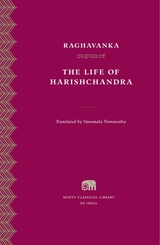 The Life of Harishchandra
Raghavanka
Harvard University Press, 2017 A thirteenth-century adaptation of one of ancient India’s most enduring stories, a cornerstone of the Kannada literary canon, translated for the first time into English.
The Life of Harishchandra, Raghavanka’s thirteenth-century masterpiece, is the first poetic rendering of one of ancient India’s most enduring legends. When his commitment to truth is tested by a powerful sage, King Harishchandra suffers utter deprivation—the loss of his wife and son, his citizens and power, and, dearest of all, his caste status—but refuses to yield. The tale has influenced poets and readers through the ages. Mahatma Gandhi traced his own commitment to truth to the impact of a Harishchandra play seen in childhood.
A poet from northern Karnataka trained in the twin traditions of Sanskrit and Kannada, Raghavanka negotiates a unique space for himself in the Kannada literary canon through important thematic, formal, and stylistic innovations. The conflicts he addresses—of hierarchical social order, political power, caste, and gender—are as relevant to contemporary India as to his own times.
Accompanied by the original text in the Kannada script, this spirited translation, the first into any language, brings an elegant and energetic narrative to a global readership.
 Life of Henry David Thoreau
Henry S. SaltEdited by George Hendrick, Willene Hendrick, and Fritz Oehlschlaeger
University of Illinois Press, 1993 No Englishman did more in the nineteenth century to advance the literary reputation of Henry David Thoreau than Henry S. Salt. A biographer and literary critic as well as a remarkable reformer who participated broadly in his era's movements for social change, Salt abandoned his mastership at Eton in the 1880s to devote himself to causes including socialism, vegetarianism, animals' rights, conservation, and prison reform.
In 1890 Salt published the initial version of Thoreau's Life. With the help of American friends, he revised the book and published it anew six years later. The present volume is the third version of the biography, completed in 1908 but never published in Salt's lifetime.
Combining a concise narrative of Thoreau's life with a perceptive treatment of his ideas and writings, it stands as a penetrating study of Thoreau, stressing his distinctive individuality. Through an astute analysis of the text and a concise biography, the editors illustrate Salt's growth as a scholar and his changing views on Thoreau and Thoreau's philosophy.
A Life of Her Own: A Countrywoman in Twentieth-Century France
Carles, Émilie
Rutgers University Press, 1991 Published in France in 1977 as Une Soupe aux Herbes Sauvages, this autobiography of a peasant woman reared in the stony insularity of a tiny Alpine village reveals the unfolding of a formidable person. Carles, born in 1900, writes of her life in the mountains coountry of southern France as comprising "so many different things, funny or tragic, picturesque or cruel." She takes the reader into her beloved Claree Valley where she as a young child in a motherless family labored alongside her father in the fields; it is where her schooling began and where she recognized her intelligence as the key to the outer world. Primitive village life and the patriarchal though loving structure of her family are background for Carles's full, nonconformist life as teacher, farmer, mother, feminist and political activist. The memoir brings to life a captivating woman
The Life of Holiness
James E. Faulconer
Neal A. Maxwell Institute for Religious Scholarship, 2012 The Life of Holiness is the product of years of reflection and careful study of the Epistle to the Romans. James E. Faulconer has crafted for his readers a work that provokes their thoughts, offering questions for consideration and reflection more than answers, matters to consider rather than doctrine to hear.
The Life of Jean Jaures
Harvey Goldberg
University of Wisconsin Press, 1962 A biography of the great French socialist and intellectual.
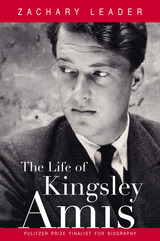 The Life of Kingsley Amis
Zachary Leader
Northwestern University Press, 2011 Kingsley Amis was not only the finest comic novelist of his generation, but also a dominant figure in post–World War II British writing as a novelist, poet, critic, and polemicist. Zachary Leader’s definitive, authorized biography conjures in vivid detail the life of one of the most controversial figures of twentieth-century literature, renowned for his blistering intelligence, savage wit, and belligerent fierceness of opinion.
In The Life of Kingsley Amis, Leader, the acclaimed editor of The Letters of Kingsley Amis, draws not only on published and unpublished works and correspondence, but also on interviews with a wide range of Amis’s friends, relatives, fellow writers, students, and colleagues, many of whom have never spoken publicly before. The result is a compulsively readable account of Amis’s childhood, school days, and life as a student at Oxford, teacher, critic, political and cultural commentator, professional author, husband, father, and lover. Neither evading nor sensationalizing the more salacious aspects of Amis’s life, Leader explores the writer’s phobias, self-doubts, and ambitions; the controversies in which he was embroiled; and the role that drink played in a life bedeviled by erotic entanglements, domestic turbulence, and personal disaster.
Here is the biography that its subject deserves. Like Amis himself, it is incisive and unsentimental, deeply appreciative of aesthetic achievement, and a great source of amusing anecdotes. Dazzling for its thoroughness, psychological acuity, and elegant style, The Life of Kingsley Amis is exemplary: literary biography at its very best.
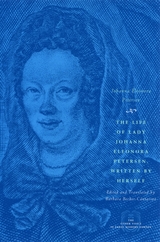 The Life of Lady Johanna Eleonora Petersen, Written by Herself: Pietism and Women's Autobiography in Seventeenth-Century Germany
Johanna Eleonora Petersen
University of Chicago Press, 2005 In a time when the Pauline dictum decreed that women be silent in matters of the Church, Johanna Eleonora Petersen (1644–1724) was a pioneering author of religious books, insisting on her right to speak out as a believer above her male counterparts. Publishing her readings of the Gospels and the Book of Revelation as well as her thoughts on theology in general, Petersen and her writings created controversy, especially in orthodox circles, and she became a voice for the radical Pietists—those most at odds with Lutheran ministers and their teachings. But she defended her lay religious calling and ultimately printed fourteen original works, including her autobiography, the first of its kind written by a woman in Germany—all in an age in which most women were unable to read or write.
Collected in The Life of Lady Johanna Eleonora Petersen are Petersen's autobiography and two shorter tracts that would become models of Pietistic devotional writing. A record of the status and contribution of women in the early Protestant church, this collection will be indispensable reading for scholars of seventeenth-century German religious and social history.
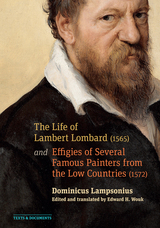 The Life of Lambert Lombard (1565); and Effigies of Several Famous Painters from the Low Countries (1572)
Dominicus Lampsonius
J. Paul Getty Trust, The, 2022 Among the earliest written texts on the history and theory of Netherlandish art, these two key writings are now available together in an English translation.
Dominicus Lampsonius’s The Life of Lambert Lombard (1565) is the earliest published biography of a Netherlandish artist. This neo-Latin account of the life of the painter, architect, and draftsman Lambert Lombard of Liège offers a theoretical exposition on the nature and ideal practice of Netherlandish art, emphasizing Lombard’s intellectual curiosity, interest in antiquity, attentive study of the human body, and exemplary generosity as a teacher.
This volume offers the first English edition of The Life of Lambert Lombard, complemented by a new translation of the inscriptions Lampsonius composed to accompany the Effigies of Several Famous Painters from the Low Countries (1572), a cycle of twenty-three engraved portraits of Netherlandish artists developed in collaboration with the print publisher Hieronymus Cock.
Together, The Life of Lambert Lombard and the Effigies established frameworks for a distinctly Netherlandish history of art. Responding to a growing sense of Netherlandish cultural and political identity on the eve of the Dutch Revolt, these texts proposed a critical alternative to Giorgio Vasari’s Lives of the Artists and its Italian model of art historical development, celebrating local ingenuity and skill. They remain the starting point for any history of the northern Renaissance.
 The Life of Lazaros of Mt. Galesion: An Eleventh-Century Pillar Saint
Richard P. H. Greenfield
Harvard University Press, 2000 Lazaros of Mt. Galesion was widely recognized as a star of contemporary Byzantine monasticism by the time he died in 1053. His reputation for sanctity rested primarily on his extraordinary perseverance as a pillar ascetic, for he spent the last forty or so years of his life atop a column on the barren mountain of Galesion, near Ephesus.
Apart from his asceticism, Lazaros was known particularly for his remarkable insight, wise advice, and unstinting generosity, as well as his miraculous powers. Visitors flocked to see the gaunt old man who had become for them a living icon. On the bleak mountainside around him, a considerable monastic community developed, and, over time, he became known and respected by the rich and powerful of his day.
The vita of Lazaros, here translated into English for the first time, was written shortly after his death by a disciple, Gregory the Cellarer. The tale is not one of simple veneration. Its author makes clear that Lazaros’s reputation was by no means unquestioned during his lifetime, and he reveals the existence of a sometimes startling hostility toward the ascetic on the part of local church officials, neighboring monasteries, and even his own monks. This refreshing piece of hagiography also provides a wealth of information on Byzantine life. The Life of Lazaros of Mt. Galesion is a fascinating and unusual glimpse into the dynamics of the making, or breaking, of a holy man’s reputation.
Life of Lidian Jackson Emerson
Delores Bird Carpenter
Michigan State University Press, 2012 Ellen Tucker Emerson's biography of her mother, Lidian Jackson Emerson, provides important insights into the life of Ralph Waldo Emerson's wife of 46 years. Delores Bird Carpenter has carefully edited this narrative to enhance continuity and to ensure completeness.
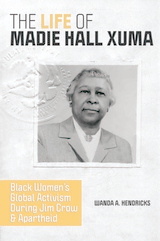 The Life of Madie Hall Xuma: Black Women's Global Activism during Jim Crow and Apartheid
Wanda A. Hendricks
University of Illinois Press, 2022 Revered in South Africa as "An African American Mother of the Nation," Madie Beatrice Hall Xuma spent her extraordinary life immersed in global women's activism. Wanda A. Hendricks's biography follows Hall Xuma from her upbringing in the Jim Crow South to her leadership role in the African National Congress (ANC) and beyond. Hall Xuma was already known for her social welfare work when she married South African physician and ANC activist Alfred Bitini Xuma. Becoming president of the ANC Women’s League put Hall Xuma at the forefront of fighting racial discrimination as South Africa moved toward apartheid. Hendricks provides the long-overlooked context for the events that undergirded Hall Xuma’s life and work. As she shows, a confluence of history, ideas, and organizations both shaped Hall Xuma and centered her in the histories of Black women and women’s activism, and of South Africa and the United States.
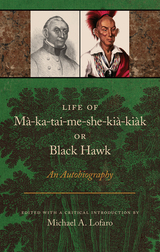 Life of Ma-ka-tai-me-she-kia-kiak, or Black Hawk: An Autobiography
Michael A. Lofaro
University of Tennessee Press, 2021 Originally published in 1833, the autobiography of the Sauk war chief Black Hawk was the first memoir written by a Native American who was actively resisting US Indian removal policy. Donald Jackson edited the first scholarly version of this work—Black Hawk: An Autobiography—in 1955. Since then, the Life has become a classic and seminal text in the fields of Native American literature and studies, American history, literature, autobiography, and cultural studies.
This edition of Black Hawk’s 1833 autobiography includes explanatory, historical, and textual notes that significantly enrich the understanding of Black Hawk’s memoir, his life, and the Black Hawk War of 1832. The notes and a chronology make this key Native American text available to scholars in several new ways. Likewise, in its preface and critical essay, this edition moves beyond Jackson’s historical work to incorporate insights from numerous other disciplines that have since engaged the text. These investigations reflect the new developments in scholarship since 1955, suggest future possibilities for the crosscultural study of Black Hawk’s Life, and examine the continuity of his autobiography within Native American and other life-story traditions. This volume also includes the biographical continuation of Black Hawk’s Life—recounting subsequent events in his life until his death in 1838—written by J. B. Patterson for his 1882 reissued and expanded edition of the original autobiography.
Scholars of Native American literature and history and settler colonialism will find much to engage them in this remarkable new edition.
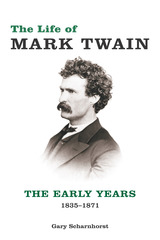 The Life of Mark Twain: The Early Years, 1835-1871
Gary Scharnhorst
University of Missouri Press, 2018 This book begins the first multi-volume biography of Samuel Clemens to appear in over a century. In the succeeding years, Clemens biographers have either tailored their narratives to fit the parameters of a single volume or focused on a particular period or aspect of Clemens’s life, because the whole of that epic life cannot be compressed into a single volume. In The Life of Mark Twain, Gary Scharnhorst has chosen to write a complete biography plotted from beginning to end, from a single point of view, on an expansive canvas.
With dozens of Mark Twain biographies available, what is left unsaid? On average, a hundred Clemens letters and a couple of Clemens interviews surface every year. Scharnhorst has located documents relevant to Clemens’s life in Missouri, along the Mississippi River, and in the West, including some which have been presumed lost. Over three volumes, Scharnhorst elucidates the life of arguably the greatest American writer and reveals the alchemy of his gifted imagination.
The Life of Mark Twain: The Final Years, 1891–1910
Gary Scharnhorst
University of Missouri Press, 2022 Choice Outstanding Academic Title for 2023
In the final volume of his three-volume biography, Gary Scharnhorst chronicles the life of Samuel Langhorne Clemens from his family’s extended trip to Europe in 1891 to his death in 1910 at age 74. During these years Clemens grapples with bankruptcy, returns to the lecture circuit, and endures the loss of two daughters and his wife. It is also during this time that he writes some of his darkest, most critical works; among these include Pudd’nhead Wilson; Personal Recollections of Joan of Arc; Tom Sawyer Abroad; Tom Sawyer, Detective; Following the Equator; No. 44, the Mysterious Stranger; and portions of his Autobiography.
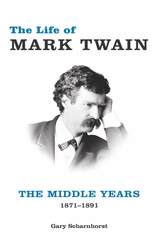 The Life of Mark Twain: The Middle Years, 1871–1891
Gary Scharnhorst
University of Missouri Press, 2019 Choice Outstanding Academic Title for 2020
The second volume of Gary Scharnhorst’s three-volume biography chronicles the life of Samuel Langhorne Clemens between his move with his family from Buffalo to Elmira (and then Hartford) in spring 1871 and their departure from Hartford for Europe in mid-1891.
During this time he wrote and published some of his best-known works, including Roughing It, The Gilded Age, The Adventures of Tom Sawyer, A Tramp Abroad, The Prince and the Pauper, Life on the Mississippi,Adventures of Huckleberry Finn, and A Connecticut Yankee in King Arthur’s Court.
Significant events include his trips to England (1872–73) and Bermuda (1877); the controversy over his Whittier Birthday Speech in December 1877; his 1878–79 Wanderjahr on the continent; his 1882 tour of the Mississippi valley; his 1884–85 reading tour with George Washington Cable; his relationships with his publishers (Elisha Bliss, James R. Osgood, Andrew Chatto, and Charles L. Webster); the death of his son, Langdon, and the births and childhoods of his daughters Susy, Clara, and Jean; as well as the several lawsuits and personal feuds in which he was involved. During these years, too, Clemens expressed his views on racial and gender equality and turned to political mugwumpery; supported the presidential campaigns of Grover Cleveland; advocated for labor rights, international copyright, and revolution in Russia; founded his own publishing firm; and befriended former president Ulysses S. Grant, supervising the publication of Grant’s Memoirs.
The Life of Mark Twain is the first multi-volume biography of Samuel Clemens to appear in more than a century and has already been hailed as the definitive Twain biography.
A Life of Meaning: Embracing Reform Judaism's Sacred Path
Rabbi Dana Evan Kaplan, PHD
Central Conference of American Rabbis, 2018 Reform Judaism is constantly evolving as we continue to seek a faith that is in harmony with our beliefs and experiences. This volume offers readers a thought-provoking collection of essays by rabbis, cantors, and other scholars who differ, sometimes passionately, over religious practice, experience, and belief. Its goal is to situate Judaism in a contemporary context and it is uniquely suited for community discussion and study groups alike.
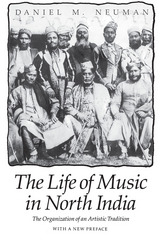 The Life of Music in North India: The Organization of an Artistic Tradition
Daniel M. Neuman
University of Chicago Press, 1990 Daniel M. Neuman offers an account of North Indian Hindustani music culture and the changing social context of which it is part, as expressed in the thoughts and actions of its professional musicians.
Drawing primarily from fieldwork performed in Delhi in 1969-71—from interviewing musicians, learning and performing on the Indian fiddle, and speaking with music connoisseurs—Neuman examines the cultural and social matrix in which Hindustani music is nurtured, listened and attended to, cultivated, and consumed in contemporary India. Through his interpretation of the impact that modern media, educational institutions, and public performances exert on the music and musicians, Neuman highlights the drama of a great musical tradition engaging a changing world, and presents the adaptive strategies its practitioners employ to practice their art. His work has gained the distinction of introducing a new approach to research on Indian music, and appears in this edition with a new preface by the author.
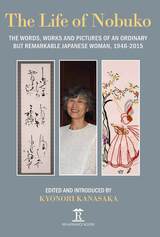 Life of Nobuko: Words, Works and Pictures of an Ordinary but Remarkable Japanese Woman, 1946-2015
Kiyonori Kanasaka, a distinguished geographer at Kyoto University, is widely recognized as Japan’s leading researcher on the Victorian traveller Isabella Bird. He has published extensively in Japanese on the subject, including a full annotated translation of the original two-volume edition of Unbeaten Tracks. He is known worldwide for his ‘Twin Time Travel’ photographic exhibition, shown in many countries – presenting Bird’s descriptions of what she wrote about in her books in juxtaposition with illustrations of the present.
Amsterdam University Press, 2022 Kiyonori Kanasaka, a distinguished geographer at Kyoto University, is widely recognized as Japan’s leading researcher on the Victorian traveller Isabella Bird. He has published extensively in Japanese on the subject, including a full annotated translation of the original two-volume edition of Unbeaten Tracks. He is known worldwide for his ‘Twin Time Travel’ photographic exhibition, shown in many countries – presenting Bird’s descriptions of what she wrote about in her books in juxtaposition with illustrations of the present.
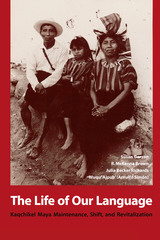 The Life of Our Language: Kaqchikel Maya Maintenance, Shift, and Revitalization
By Susan Garzon, R. McKenna Brown, Julia Becker Richards, and Wuqu’ Ajpub’
University of Texas Press, 1998 The native Maya peoples of Mexico, Guatemala, Honduras, and Belize have been remarkably successful in maintaining their cultural identity during centuries of contact with and domination by outside groups. Yet change is occurring in all Mayan communities as contact with Spanish-speaking Ladino society increases. This book explores change and continuity in one of the most vital areas of Mayan culture—language use. The authors look specifically at Kaqchikel, one of the most commonly spoken Mayan languages. Following an examination of language contact situations among indigenous groups in the Americas, the authors proceed to a historical overview of the use of Kaqchikel in the Guatemalan Highlands. They then present case studies of three highland communities in which the balance is shifting between Kaqchikel and Spanish. Wuqu' Ajpub', a native Kaqchikel speaker, gives a personal account of growing up negotiating between the two languages and the different world views they encode. The authors conclude with a look at the Mayan language revitalization movement and offer a scenario in which Kaqchikel and other Mayan languages can continue to thrive.
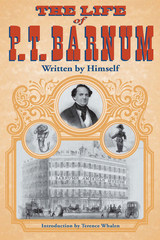 The Life of P. T. Barnum, Written by Himself
Phineas T. BarnumIntroduction by Terence Whalen
University of Illinois Press, 2000 For more than fifty years, Phineas T. Barnum embodied all that was grand and fraudulent in American mass culture. Over the course of a life that spanned the nineteenth century (1810-91), he inflicted himself upon a surprisingly willing public in a variety of guises, from newspaper editor (or libeler) to traveling showman (or charlatan) and distinguished public benefactor (or shameless hypocrite).
Barnum deliberately cultivated his ambiguous public image through a lifelong advertising campaign, shrewdly exploiting the cultural and technological capabilities of the new publishing industry. While running his numerous shows and exhibitions, Barnum managed to publish newspaper articles, exposés of fraud (not his own), self-help tracts, and a series of best-selling autobiographies, each promising to give "the true history of my many adventures."
Updated editions of The Life of P. T. Barnum appeared regularly, allowing Barnum to keep up with demand and prune the narrative of details that might offend posterity. The present volume is the first modern edition of Barnum's original and outrageous autobiography, published in 1855 and unavailable for more than a century. Brazen, confessional, and immensely entertaining, it immortalizes the showman who hoodwinked customers into paying to hear the reminiscences of a woman presented as George Washington's 161-year-old nurse, the impresario who brought Jenny Lind to America and toured Europe with General Tom Thumb, and the grand entrepreneur of the American Museum of New York. Above all, it ensures that Barnum would be properly remembered . . . exactly as he created himself.
 The Life of Padma
Svayambhudeva
Harvard University Press, 2018 The first English translation of the oldest extant work in Apabhramsha, a literary language from medieval India, recounting the story of the Ramayana.
The Life of Padma, or the Paümacariu, is a richly expressive Jain retelling in the Apabhramsha language of the famous Ramayana tale. The work was written by the poet and scholar Svayambhudeva, who lived in south India around the beginning of the tenth century. Like the epic tradition on which it is based, The Life of Padma narrates Prince Rama’s exile, his search for his wife Sita after her abduction by King Ravana of Lanka, and the restoration of his kingship.
The first volume of The Life of Padma begins by recounting the histories and noteworthy ancestors of Rama’s allies and enemies, focusing on his antagonist, Ravana. Svayambhudeva connects central characters from the Ramayana tradition to one another and to Rishabha, the founding prophet of Jainism, in a complex web of family relations dating back generations.
This is the first direct translation into English of the oldest extant work in Apabhramsha, accompanied by a corrected reprint in the Devanagari script of Harivallabh C. Bhayani’s critical edition.
 The Life of Padma
Svayambhudeva
Harvard University Press, 2018 The first English translation of the oldest extant work in Apabhramsha, a literary language from medieval India, recounting the story of the Ramayana.
The Life of Padma, or the Paümacariu, is a richly expressive Jain retelling in the Apabhramsha language of the famous Ramayana tale. It was written by the poet and scholar Svayambhudeva, who lived in south India around the beginning of the tenth century. Like the epic tradition on which it is based, The Life of Padma narrates Prince Rama’s exile, his search for his wife Sita after her abduction by King Ravana of Lanka, and the restoration of his kingship.
The second volume recounts Rama’s exile with Sita and his brother Lakshmana. The three visit various cities—rather than ashrams, as in most versions; celebrate Lakshmana’s marriages; and come upon a new city built in Rama’s honor. In Dandaka Forest, they encounter sages who are masters of Jain doctrine. Then, the discovery of Sita’s disappearance sets the stage for war with Ravana.
This is the first direct translation into English of the oldest extant Apabhramsha work, accompanied by a corrected text, in the Devanagari script, of Harivallabh C. Bhayani’s critical edition.
 The Life of Patriarch Ignatius
Nicetas David
Harvard University Press, 2013 A window into the complex world of competing church factions, imperial powers, and the papacy, The Life of Patriarch Ignatius is the vivid account of two major ecclesiastical struggles of the ninth century. One was between opposing patriarchs of Constantinople—the learned Photius (858–867, 877–886) and the monk Ignatius (847–858, 867–877)—and gave rise to long periods of schism, intrigue, and scandal in the Greek Orthodox world. The other was between Patriarch Photius and the papacy, which at its low point saw Photius and Nicholas I trade formal condemnations of each other and adversely affected East-West relations for generations afterward.
The author of this account, Nicetas David Paphlagon, was a prolific and versatile writer, but also a fierce conservative in ecclesiastical politics, whose passion and venom show through on every page. As much a frontal attack on Photius as a record of the author’s hero Ignatius, The Life of Patriarch Ignatius offers a fascinating, if biased, look into the complex world of the interplay between competing church factions, the imperial powers, and the papacy.
This important historical document is here critically edited and translated into English for the first time and includes annotations, maps, and indexes.
The Life of Plants
E. J. H. Corner
University of Chicago Press, 2003 E. J. H. Corner's perennial favorite The Life of Plants, copiously stocked with now-classic botanical illustrations, is one of the most fascinating and original introductions to the world of plants ever produced—from the botanist to the amateur, no reader will finish this book without gaining a much richer understanding of plants, their history, and their relationship with the environments around them.
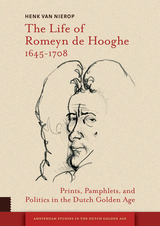 The Life of Romeyn de Hooghe 1645-1708: Prints, Pamphlets, and Politics in the Dutch Golden Age
Henk van Nierop
Amsterdam University Press, 2018 Romeyn de Hooghe was the most inventive and prolific etcher of the later Dutch Golden Age. The producer of wide-ranging book illustrations, newsprints, allegories, and satire, he is best known as the chief propaganda artist working for stadtholder and king William III. This study, the first book-length biography of de Hooghe, narrates how his reputation became badly tarnished when he was accused of pornography, fraud, larceny, and atheism. Traditionally regarded as a godless rogue, and more recently as an exponent of the Radical Enlightenment, de Hooghe emerges in this study as a successful entrepreneur, a social climber, and an Orangist spin doctor. A study in seventeenth-century political culture and patronage, focusing on spin and slander, this book explores how artists, politicians, and hacks employed literature and the visual arts in political discourse, and tried to capture their readership with satire, mockery, fun, and laughter.
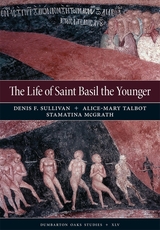 The Life of Saint Basil the Younger: Critical Edition and Annotated Translation of the Moscow Version
Denis F. Sullivan
Harvard University Press The Life of Saint Basil the Younger, one of the longest and most important middle Byzantine saints’ lives, presents the life of a holy man who lived in Constantinople in the first part of the tenth century. Usually described as a fictional saint, he had the distinction of residing in private homes rather than in a monastery, performing numerous miracles and using the gift of clairvoyance. The vita, purportedly written by one of Basil’s disciples, a pious layman named Gregory, includes many details on daily life in Constantinople, with particular attention to slaves, servants, and eunuchs. Two lengthy descriptions of visions provide the most comprehensive source of information for Byzantine views on the afterlife. In one, the soul of an elderly servant Theodora journeys past a series of tollbooths, where demons demand an accounting of her sins in life and collect fines for her transgressions; in the other Gregory describes his vision of the celestial Jerusalem, the enthronement of the Lord at his Second Coming, and the Last Judgment. This volume provides a lengthy introduction and a critical edition of the Greek text facing the annotated English translation, the first in any language.
 The Life of Saint Katherine of Alexandria
John Capgrave
University of Notre Dame Press, 2011
The fifteenth-century scholar and Augustinian friar John Capgrave took as his subject the virgin martyr Katherine of Alexandria, who was an anomalous cultural icon, a scholar, and a sovereign whose story unsettled traditional gender stereotypes yet was widely popular throughout Western Europe. Capgrave’s Life of Saint Katherine of Alexandria (ca. 1445) stands out among the hundreds of surviving vernacular and Latin narrations about the saint by its intricate plotting, its moral complexity, its obtrusive Chaucerian narrator, and its attention to psychology, history, and theology. The Life of Saint Katherineis a bold literary experiment that transforms the genre of the saint’s life by infusing it with conventions and techniques more often associated with chronicles, mystery plays, fabliaux, and romances.
In Capgrave’s hands, Katherine emerges as a sensitive and studious young woman torn between social responsibilities and personal desires. Her story unfolds in a vividly realized world of political turmoil and religious repression that, as Capgrave’s readers were bound to suspect, had everything to do with the England they inhabited and its recent past. Katherine’s debate with her lords anticipates arguments for and against female rule that would be made in Tudor England, when the ascensions of Mary I and then Elizabeth I made gynecocracy a political reality, while her debate with the philosophers is a daring exercise in vernacular theology that flouts the censorship then current.
Winstead’s translation—the first into idiomatic modern English—brings to life Capgrave’s sharply drawn characters, compelling plot, and complex, unsettling moral. Its promotion of an informed, intellectualized Christianity during a period known for censorship and repression illuminates the struggle over the definition of orthodoxy that was excited by the perceived threat of Lollard heresy during the fifteenth century. This volume also includes an appendix with passages of Capgrave's original Middle English and literal translations into modern English, providing a valuable tool for teachers and students.
"Karen A. Winstead's translation of Capgrave's Life of Saint Katherineis extremely well done. The text is elegantly simple, nuanced, and serious in tone; graced as well with an excellent introduction and complete bibliography of Katherine materials, Winstead's edition is sure to inspire students to pursue further studies in Middle English." —Maura Nolan, University of California, Berkeley
"Capgrave's work deserves a larger audience than it currently has. The Life of Saint Katherine of Alexandriais a lively and amusing work that intersects with may aspects of late medieval culture and history: it addresses important questions related to gender, theology, pedagogy, family relations, religious institutions, and political power. I can envision many uses for Winstead's translation in the contemporary college and university classroom." —Theresa Coletti, University of Maryland
The Life of Saint Neilos of Rossano
Raymond L. Capra
Harvard University Press, 2018 The Life of Saint Neilos of Rossano is a masterpiece of historically accurate Italo-Greek monastic literature. Neilos, who died in 1004, vividly exemplifies the preoccupations of Greek monks in southern Italy under the Byzantine Empire. A restless search for a permanent residence, ascetic mortification of the body, and pursuit by enemies are among the concerns this text shares with biographies of other saints from the region. Like many of his peers, Neilos lived in both hermitages and monasteries, torn between the competing conventions of solitude and community. The Life of Neilos offers a snapshot of a distinctive time when Greek and Latin monasticism coexisted, a world that vanished after the schism between the churches of Rome and Constantinople in 1054. This is the first English translation, with a newly revised Greek text.
|
|
